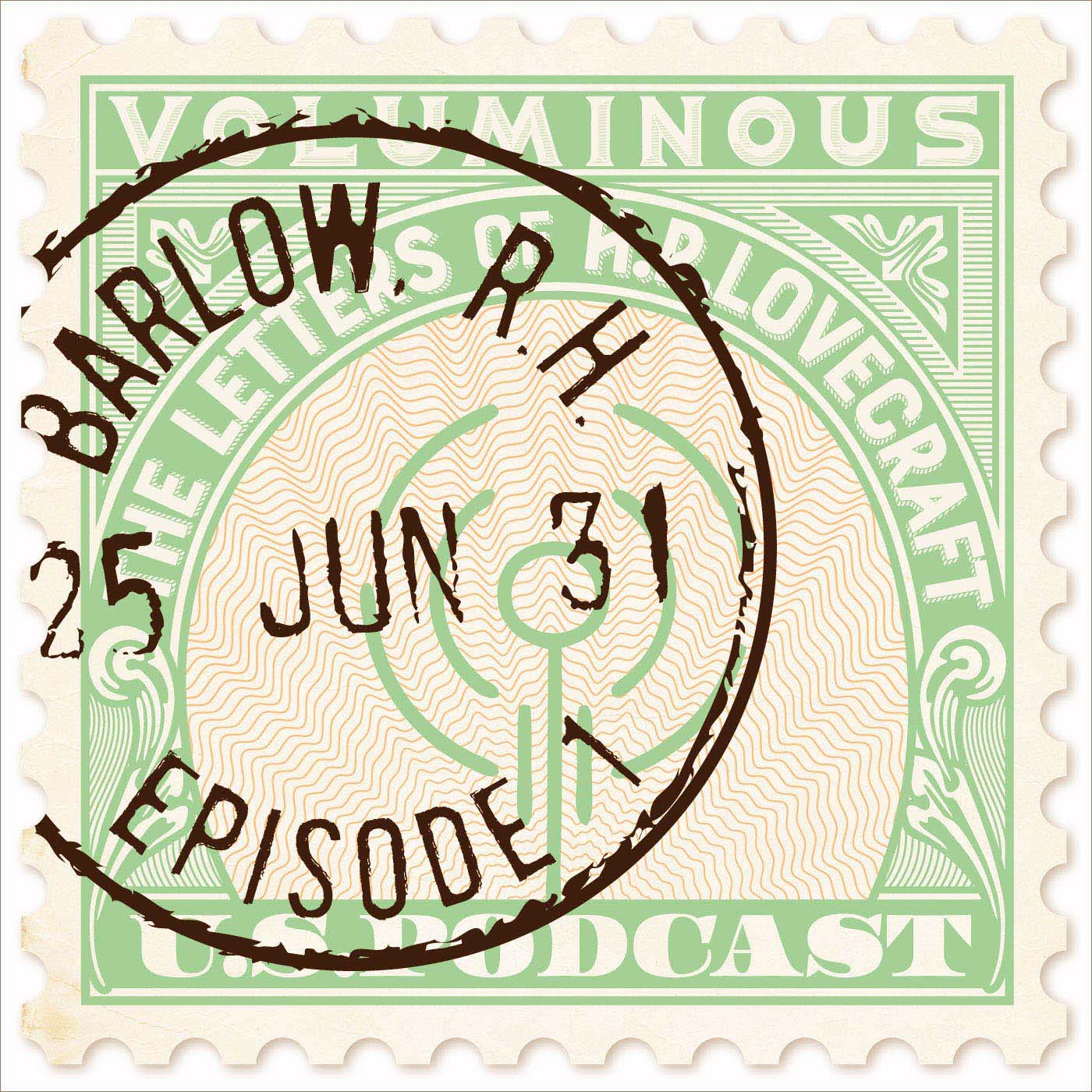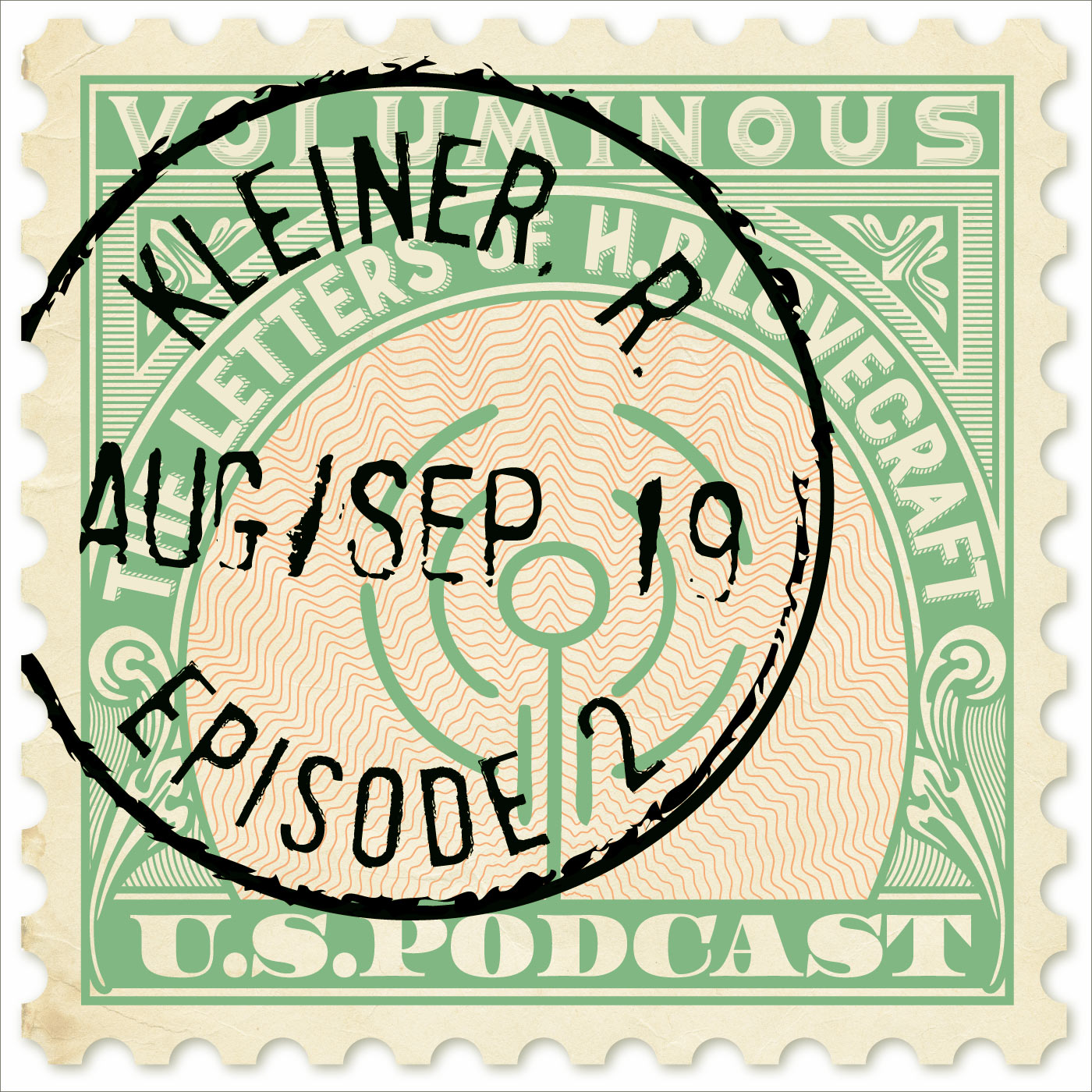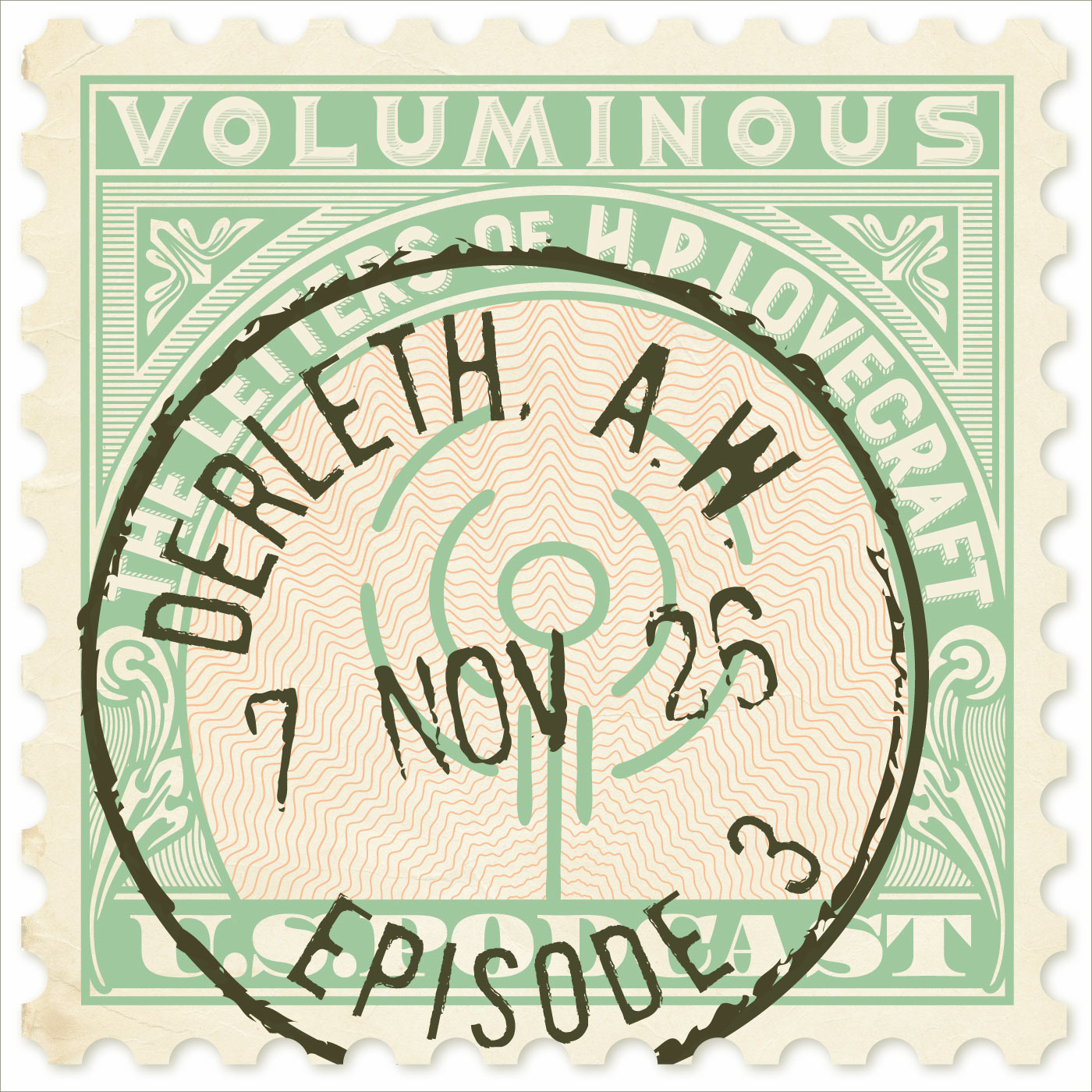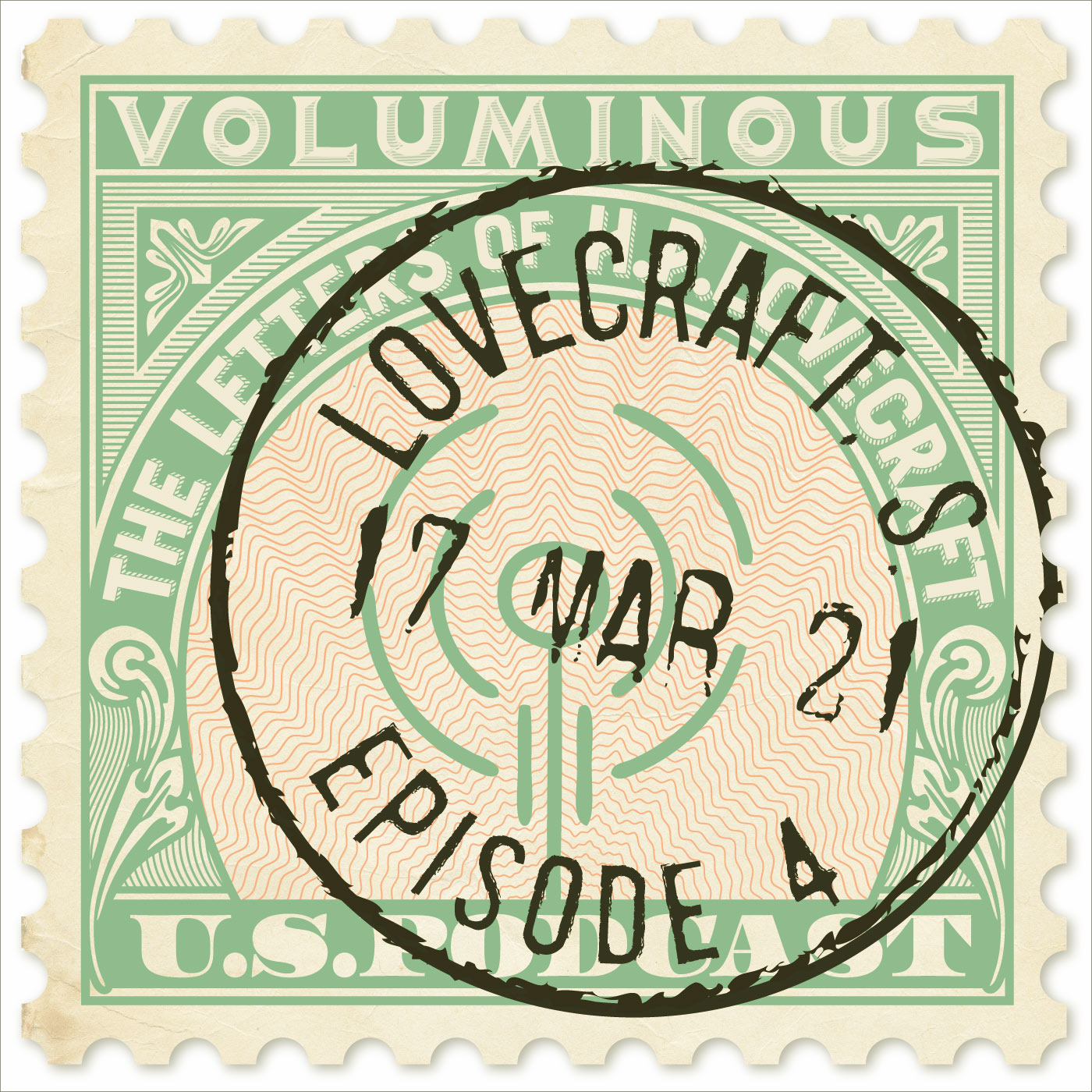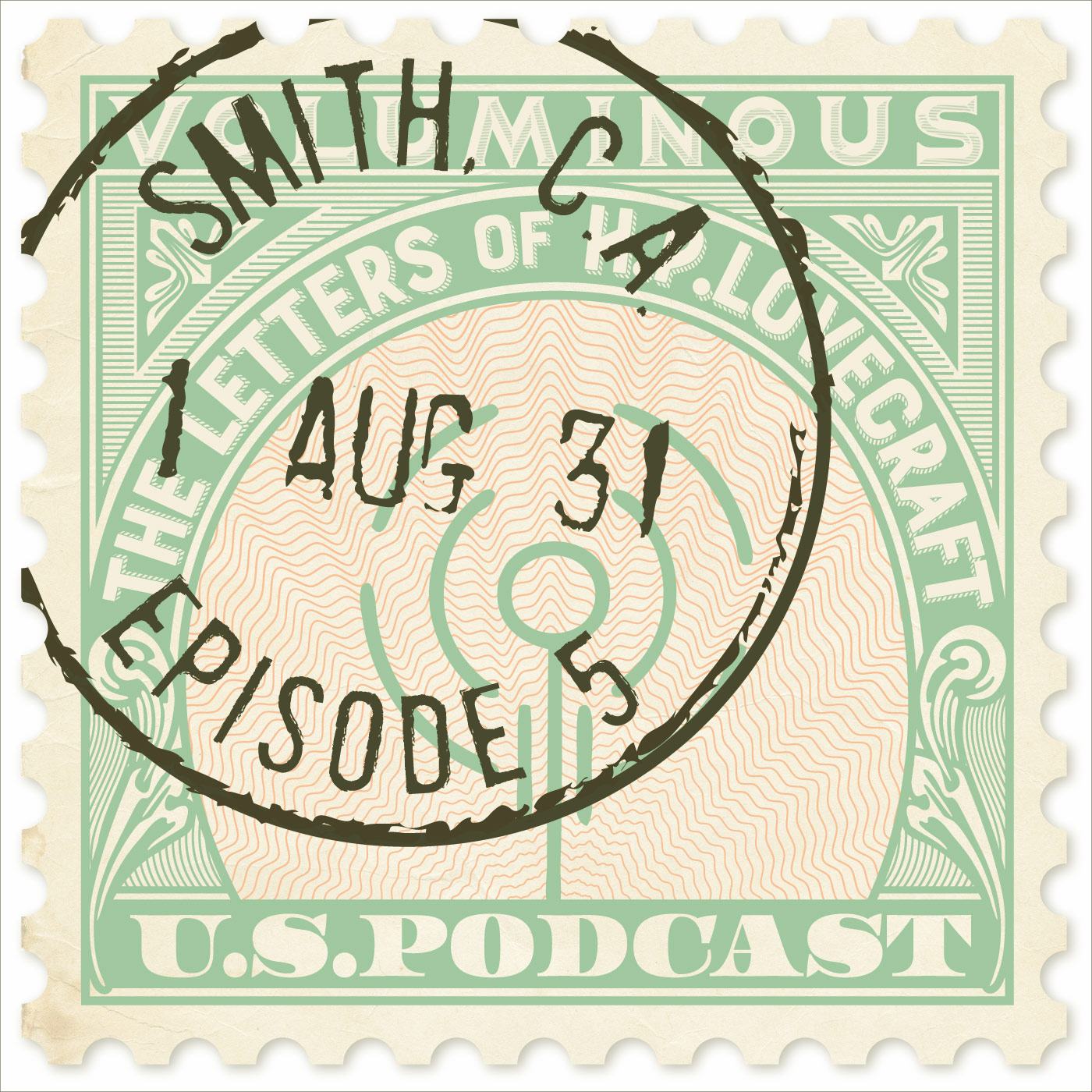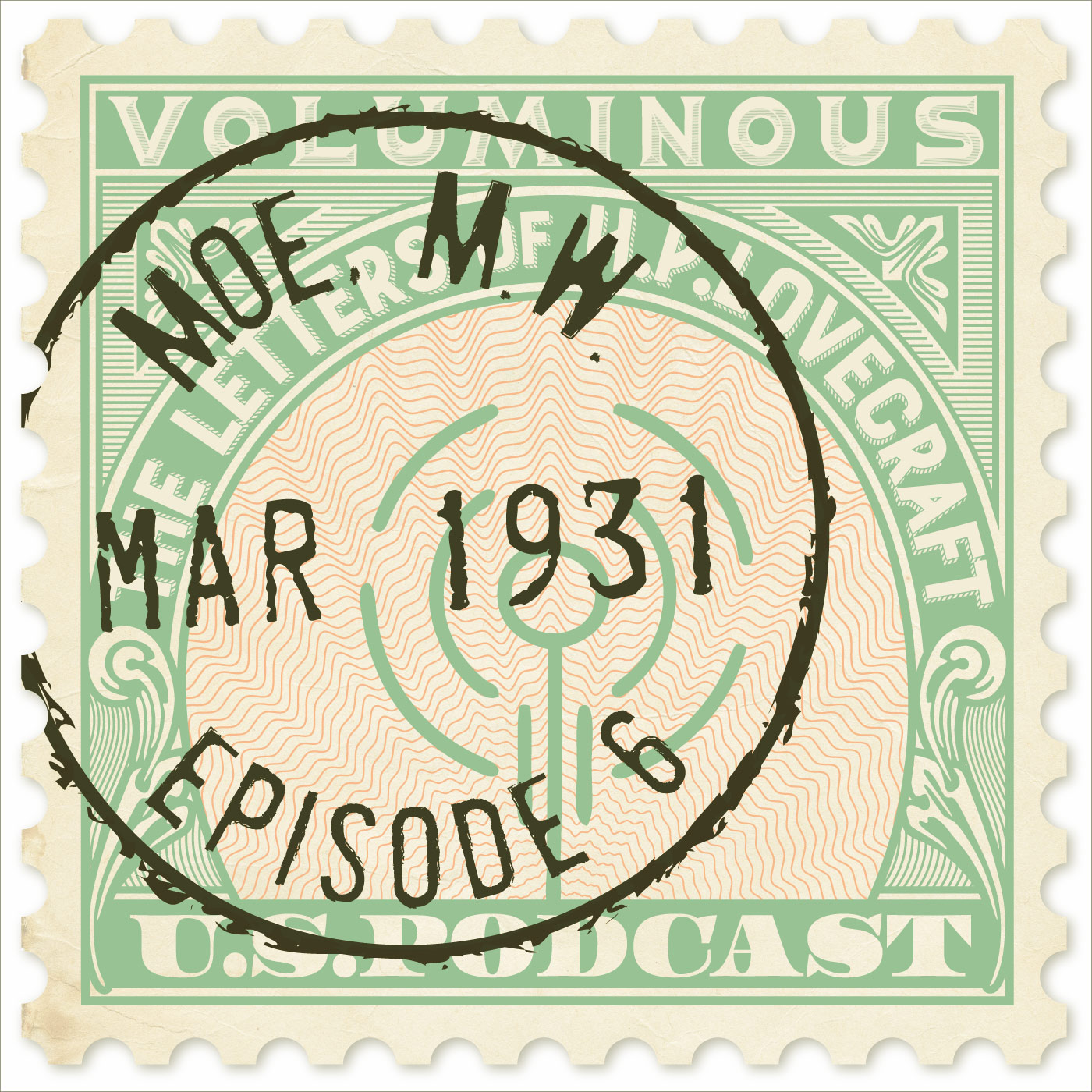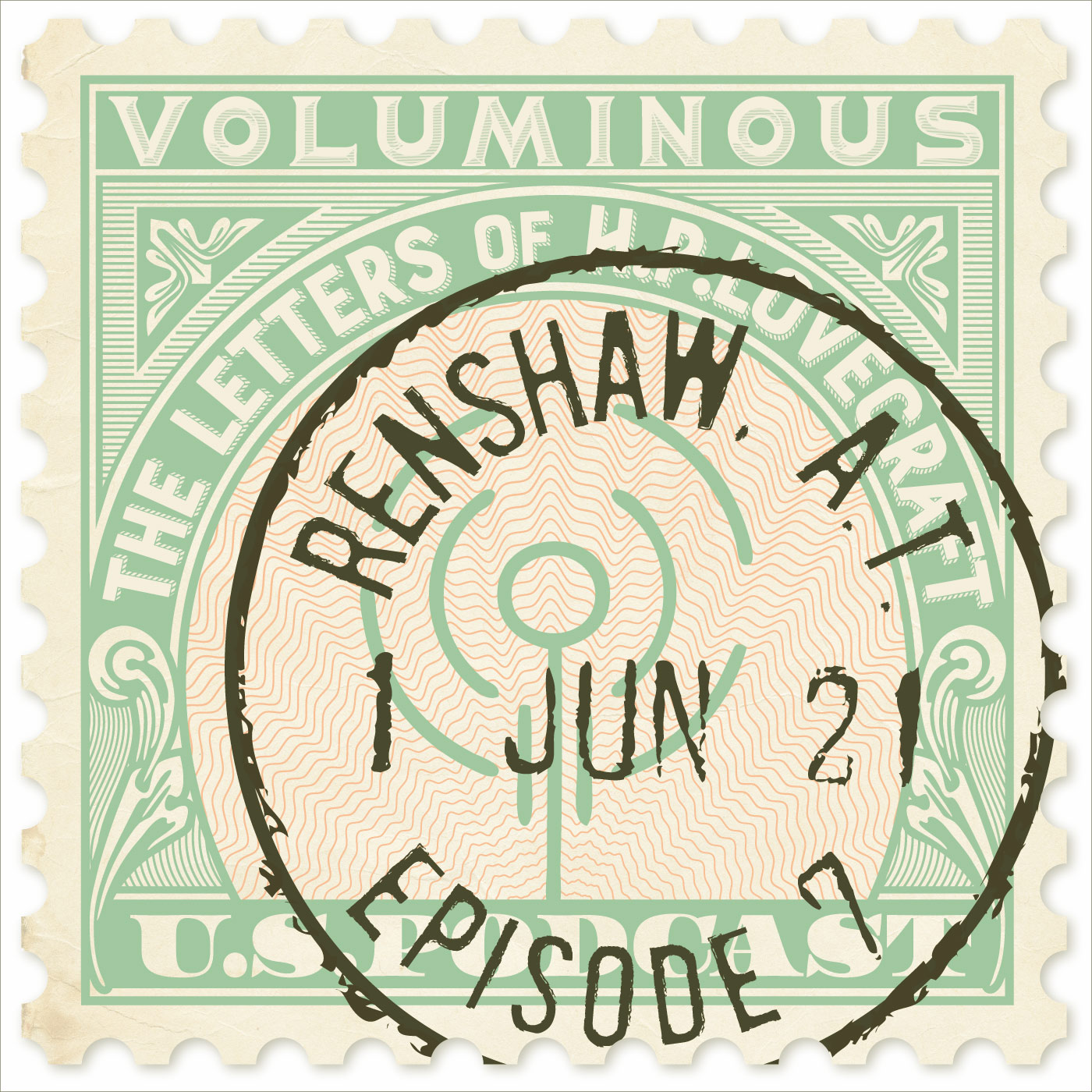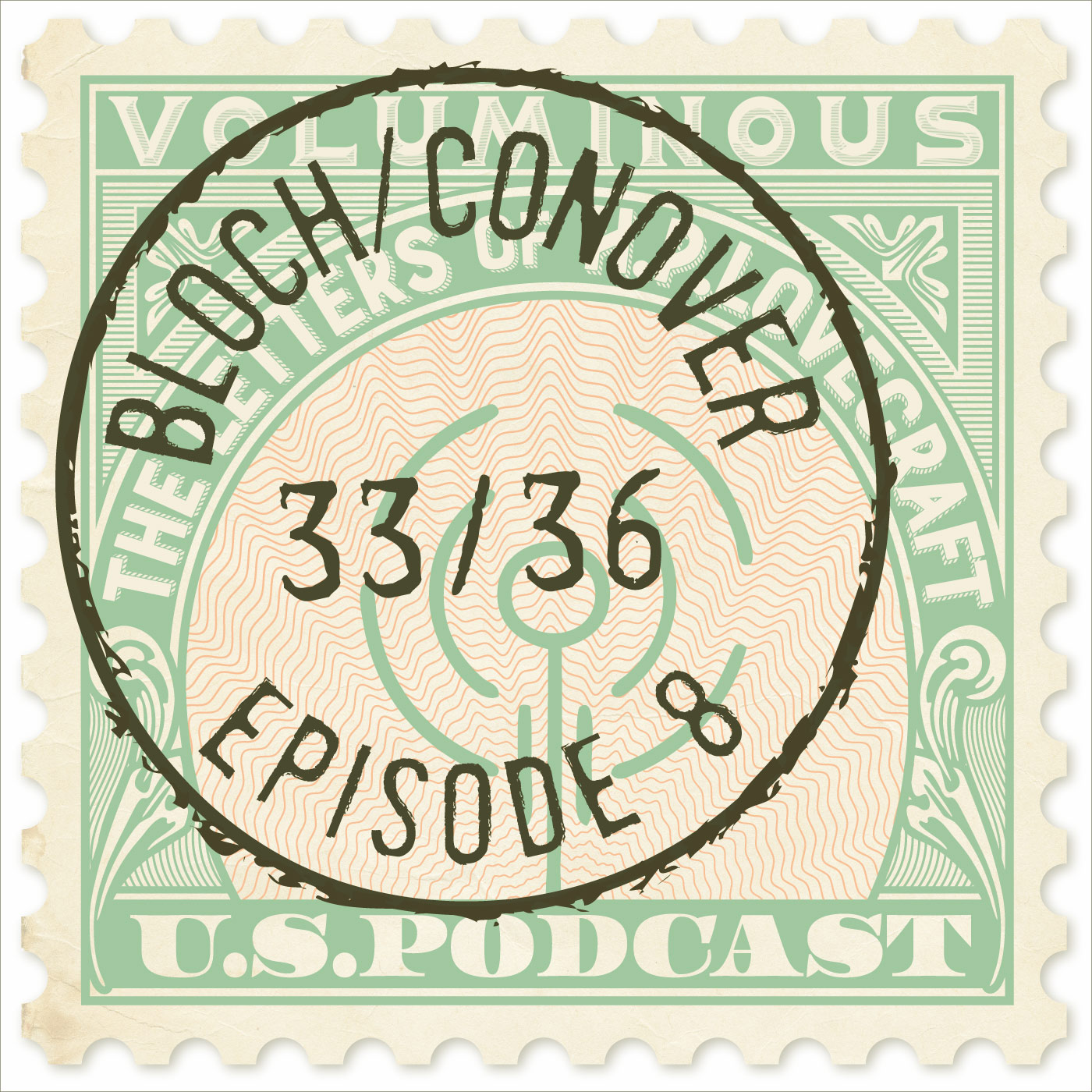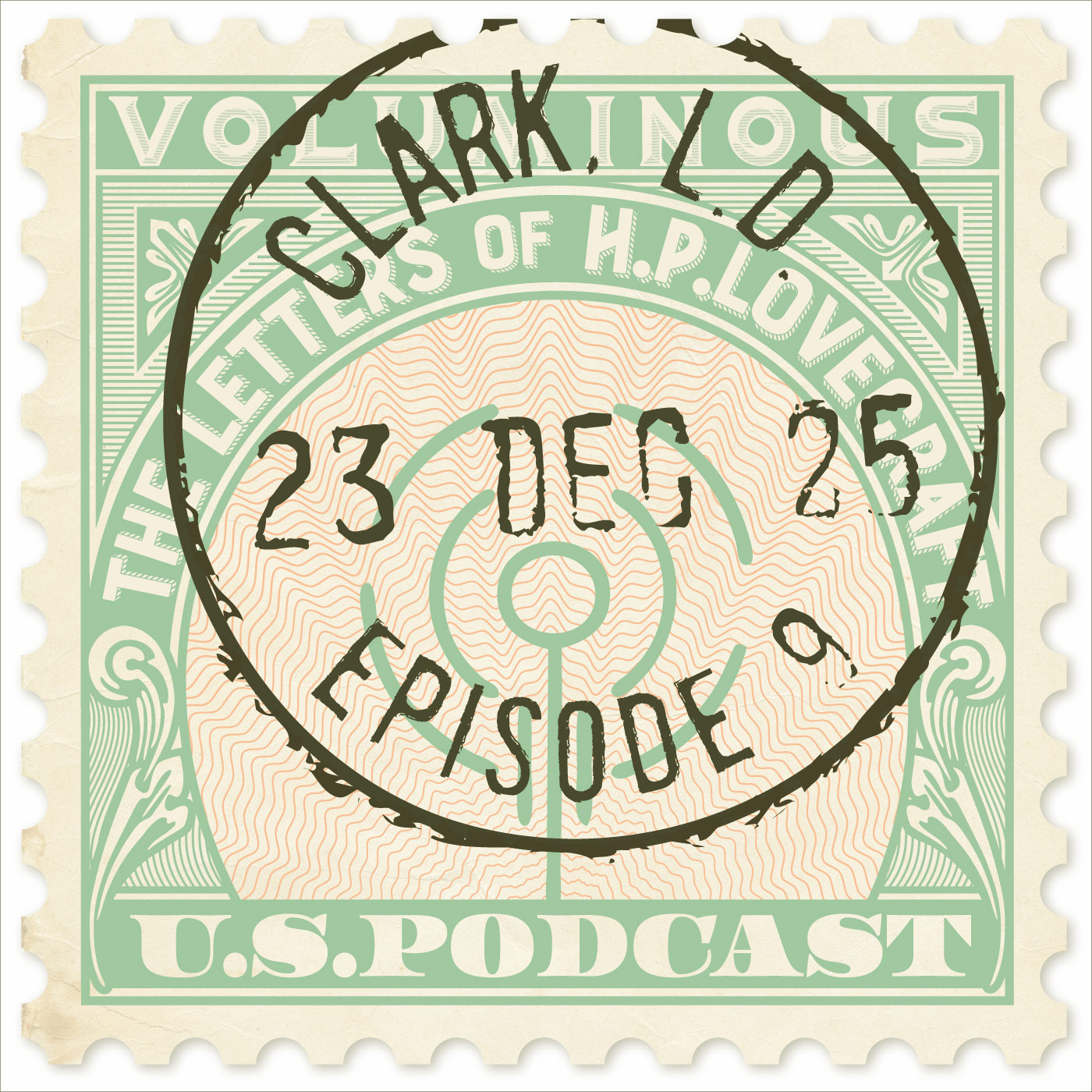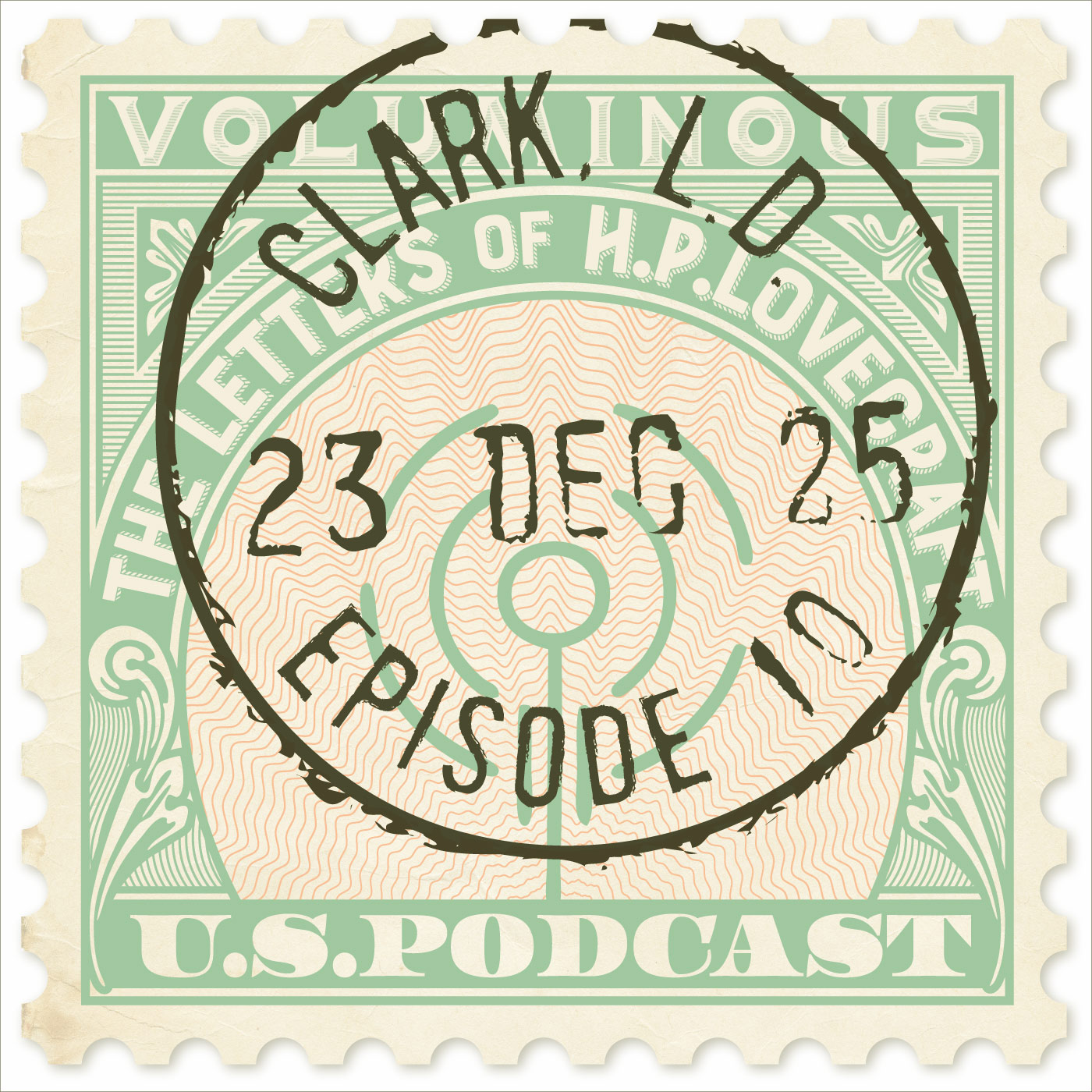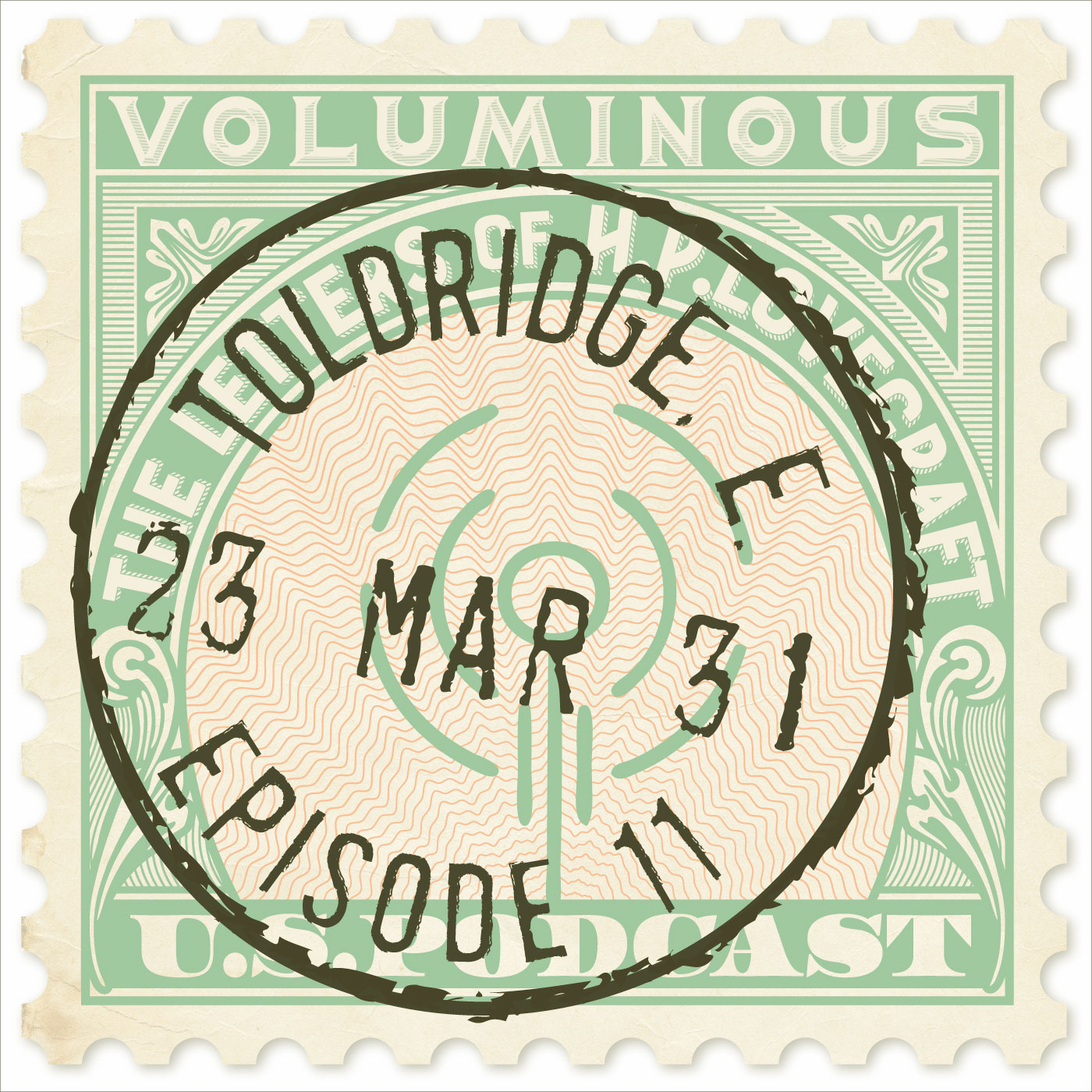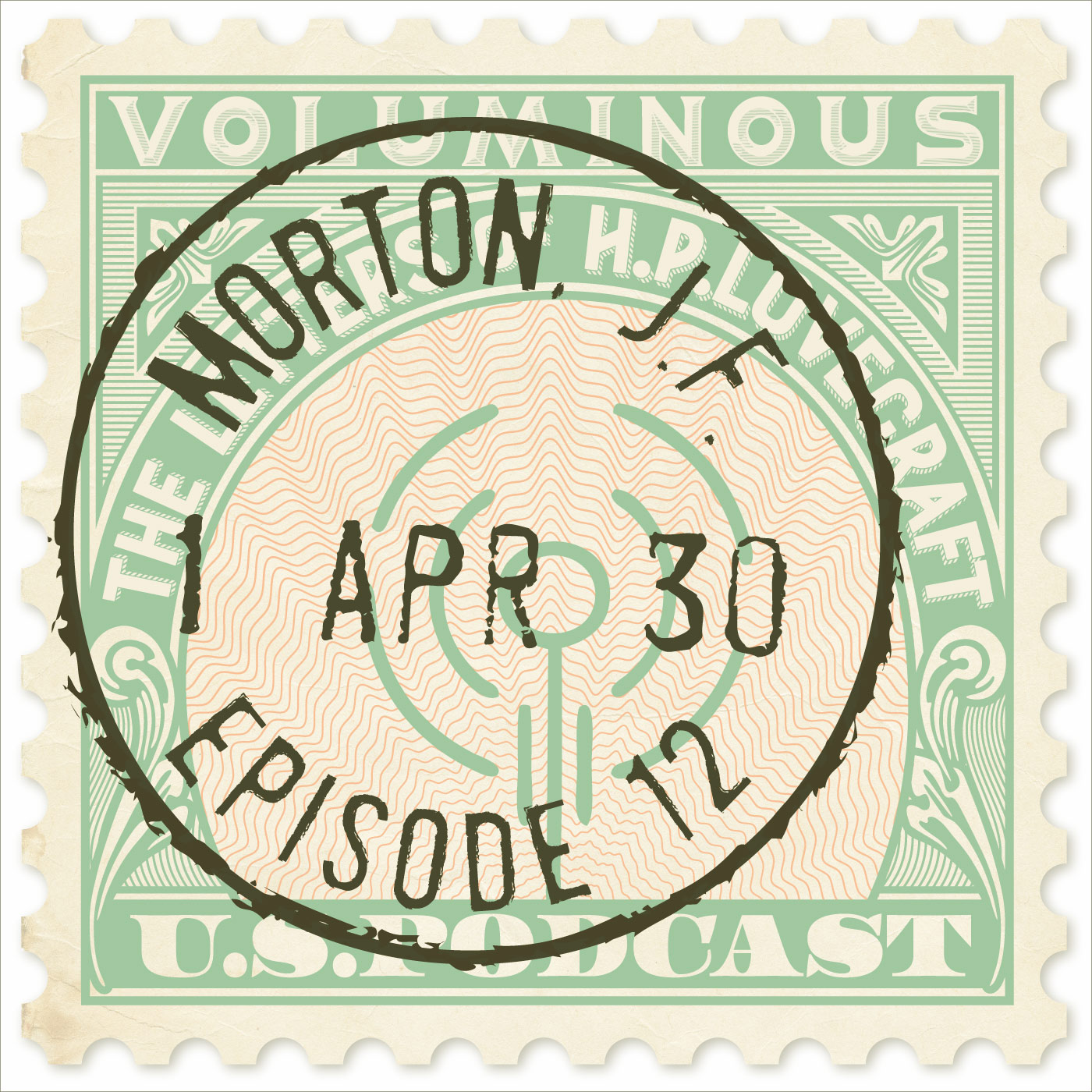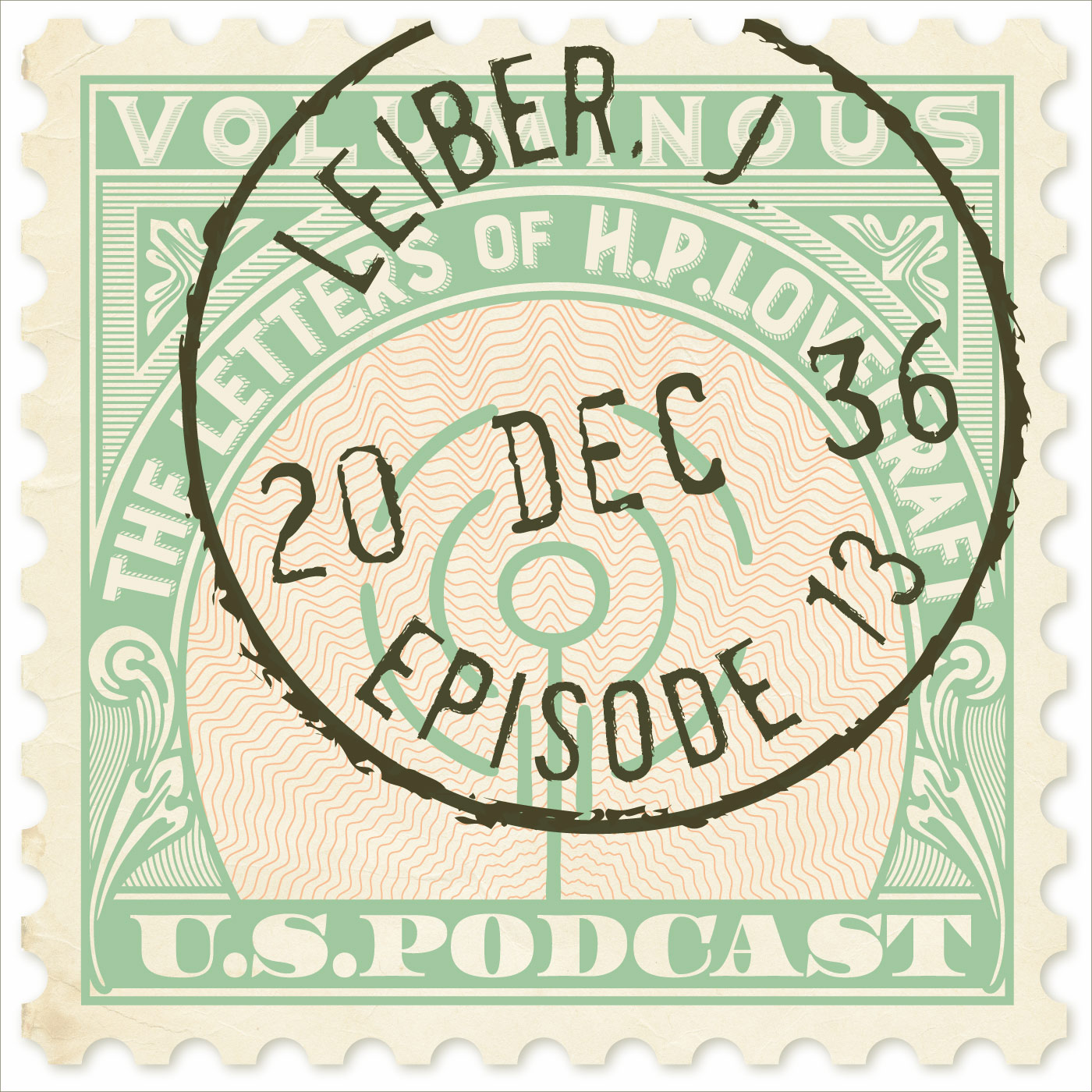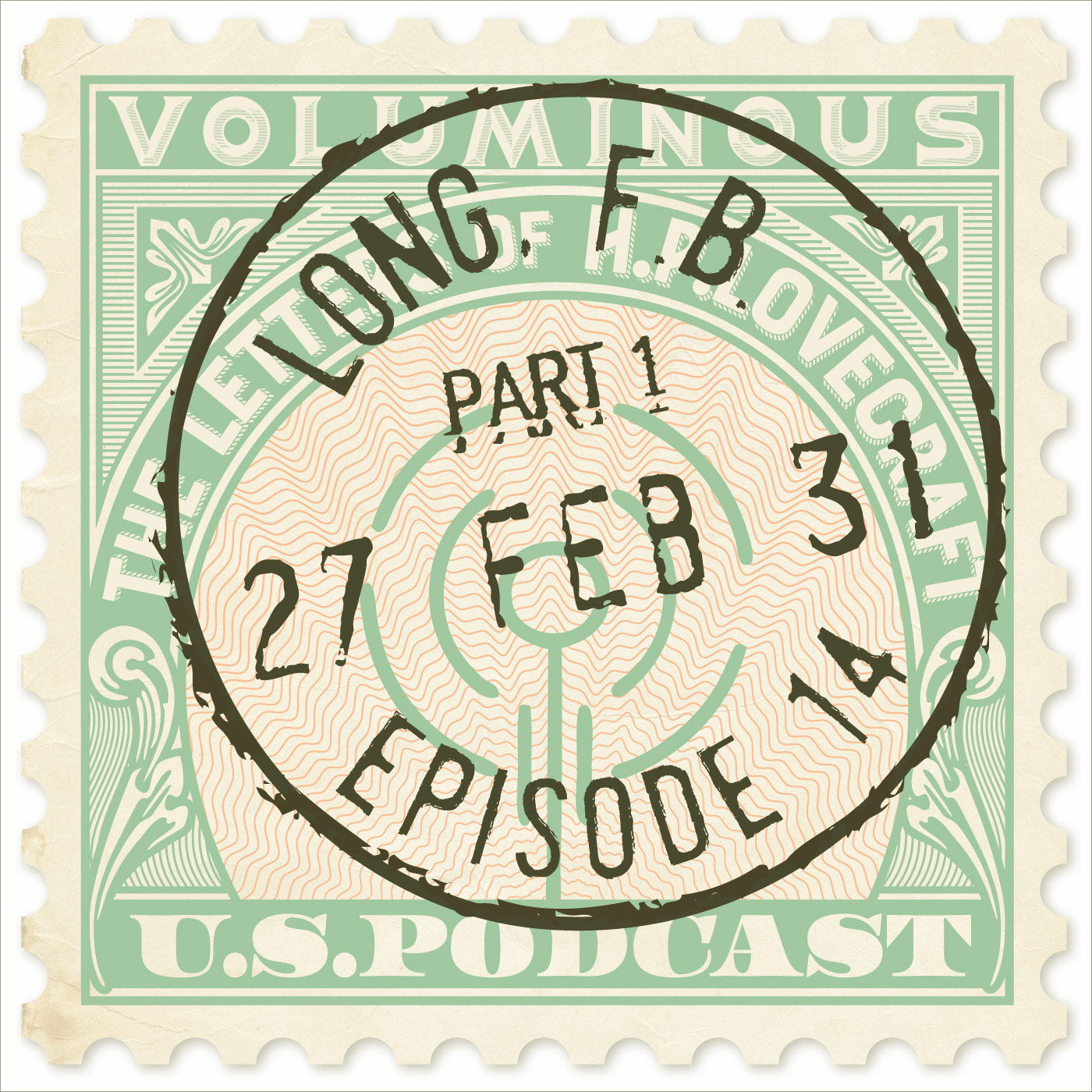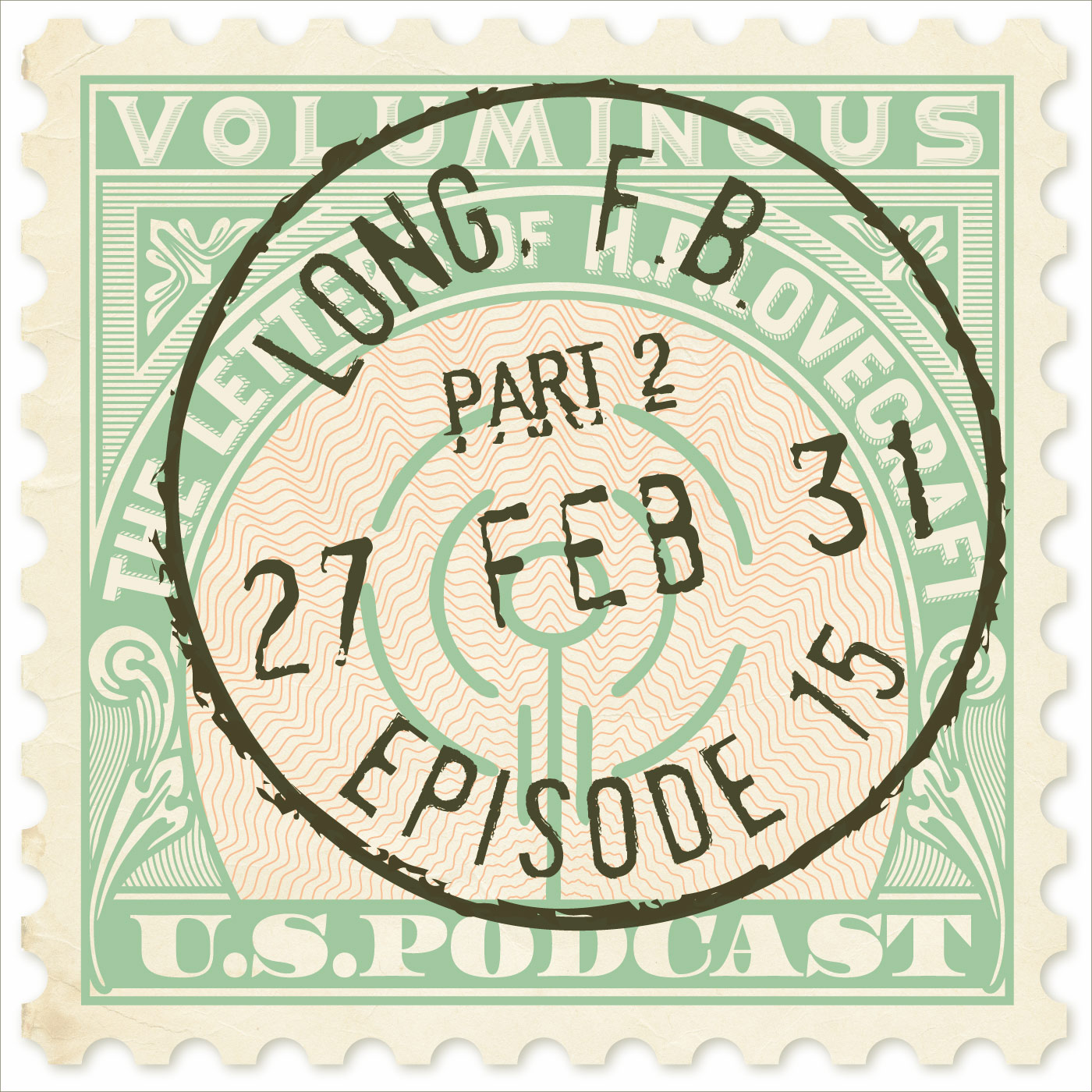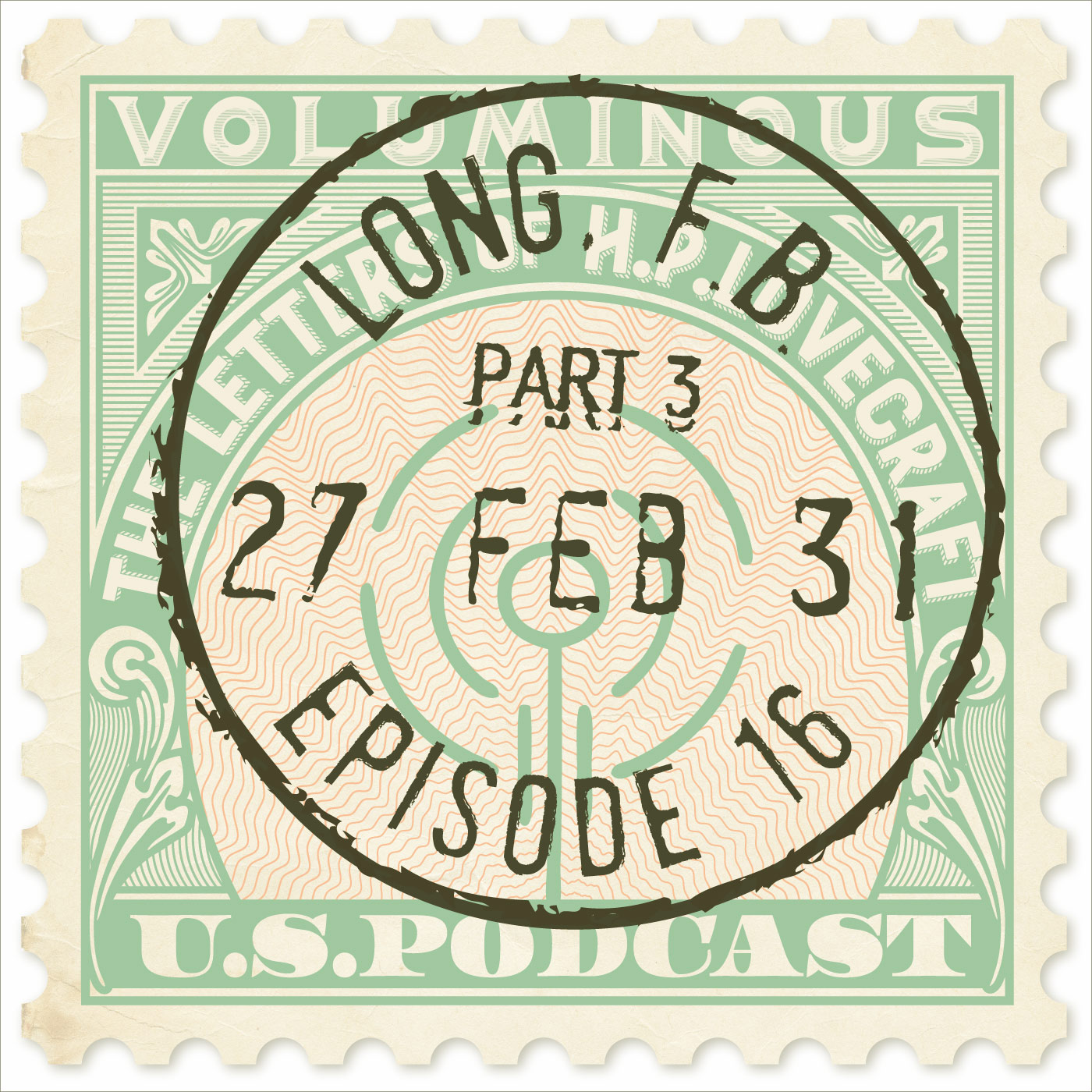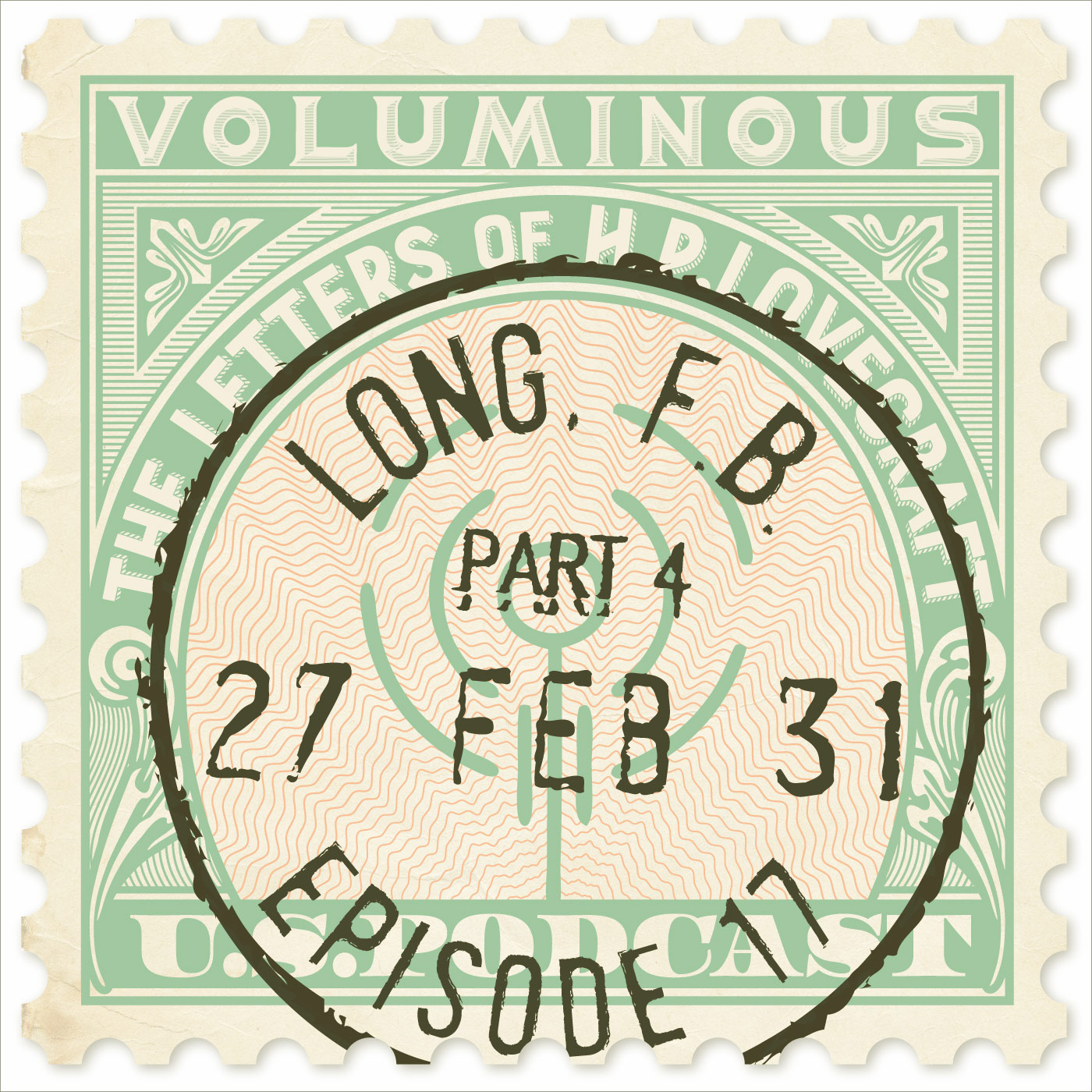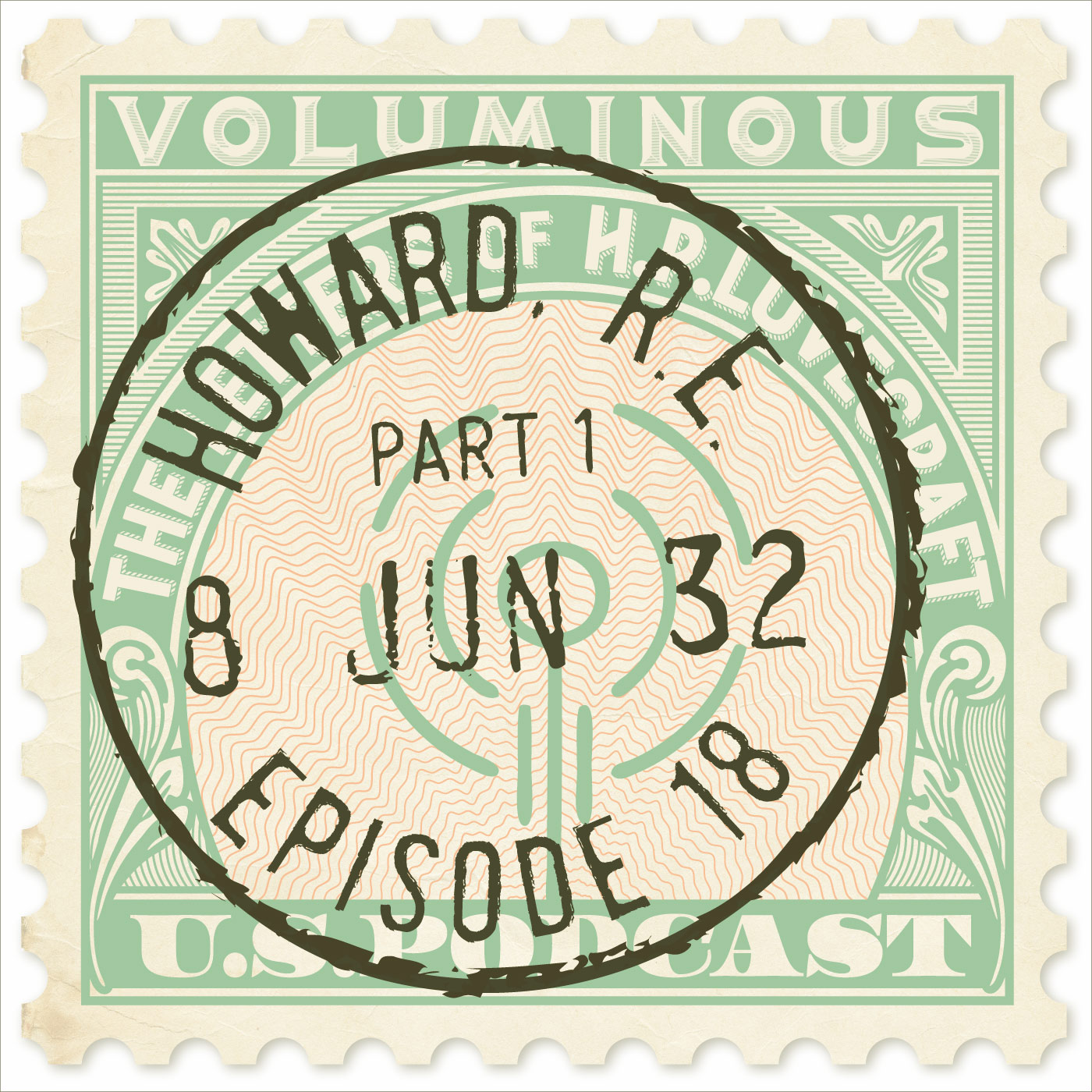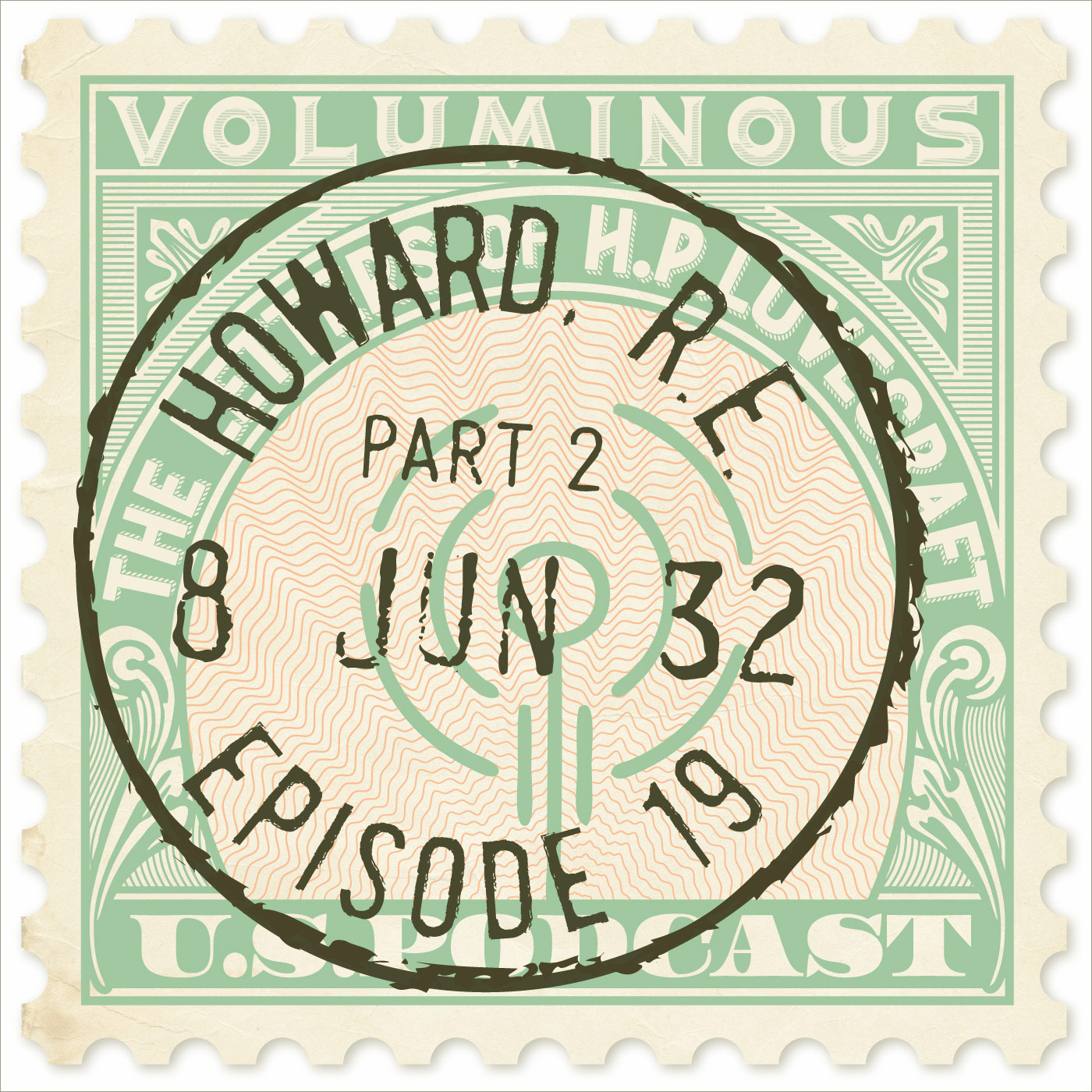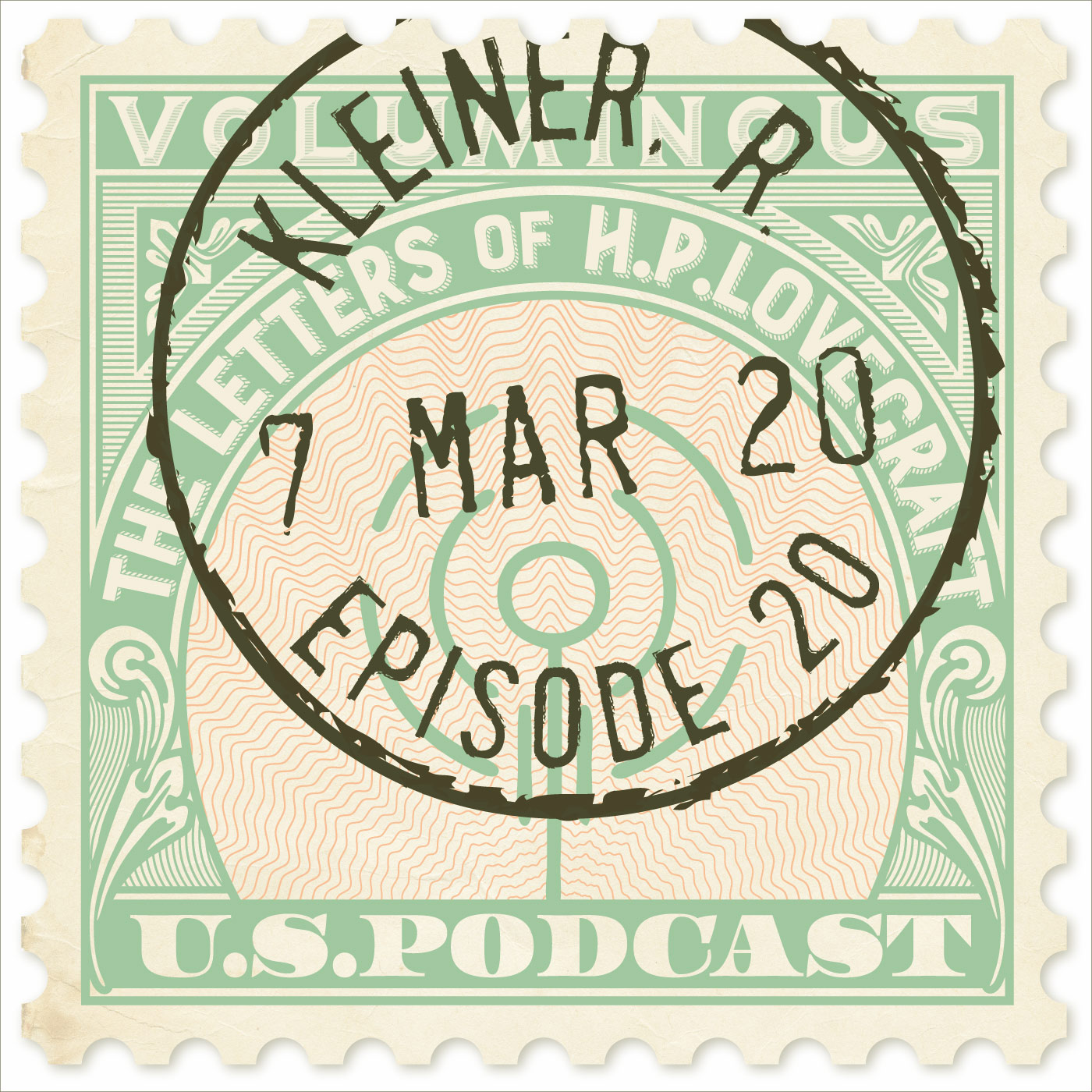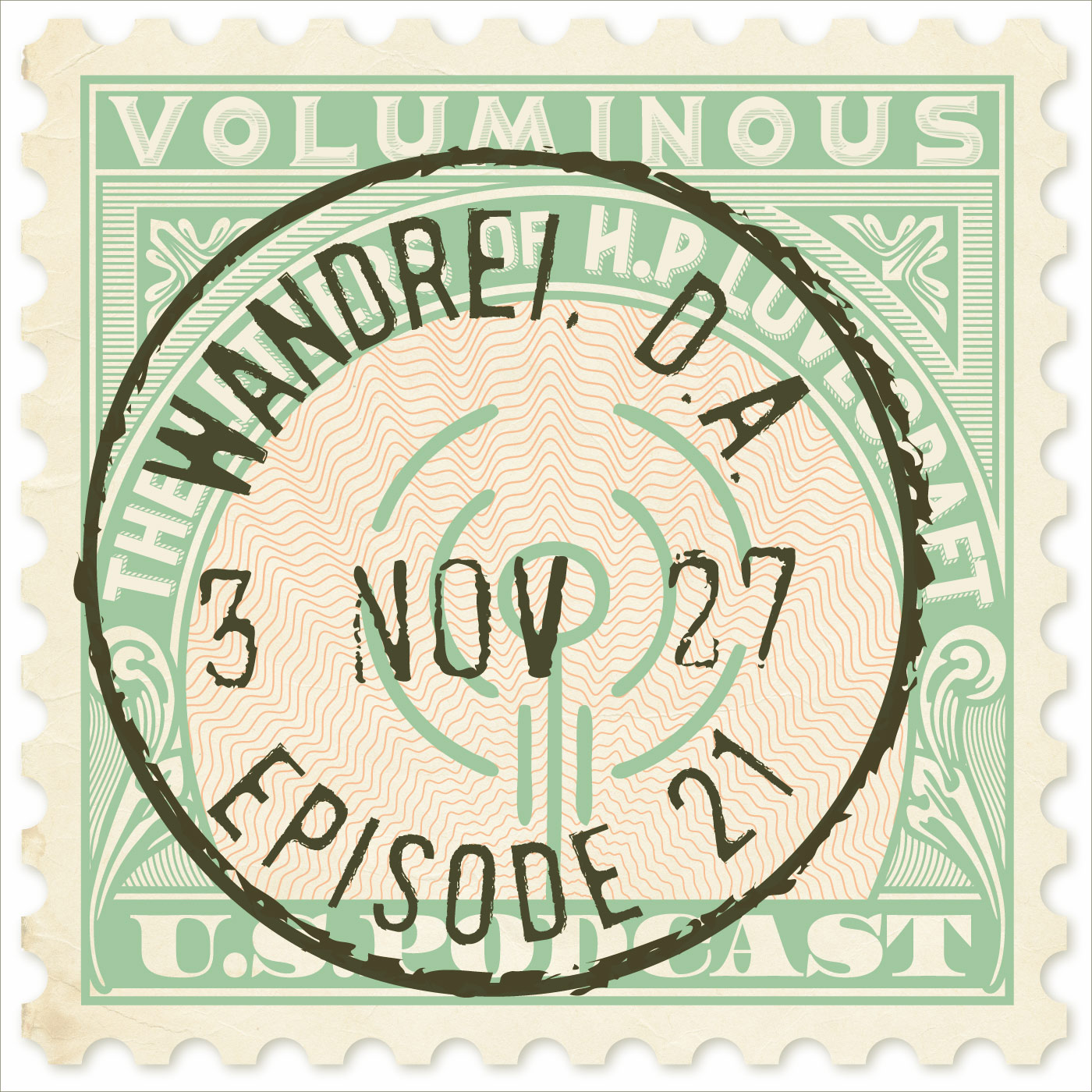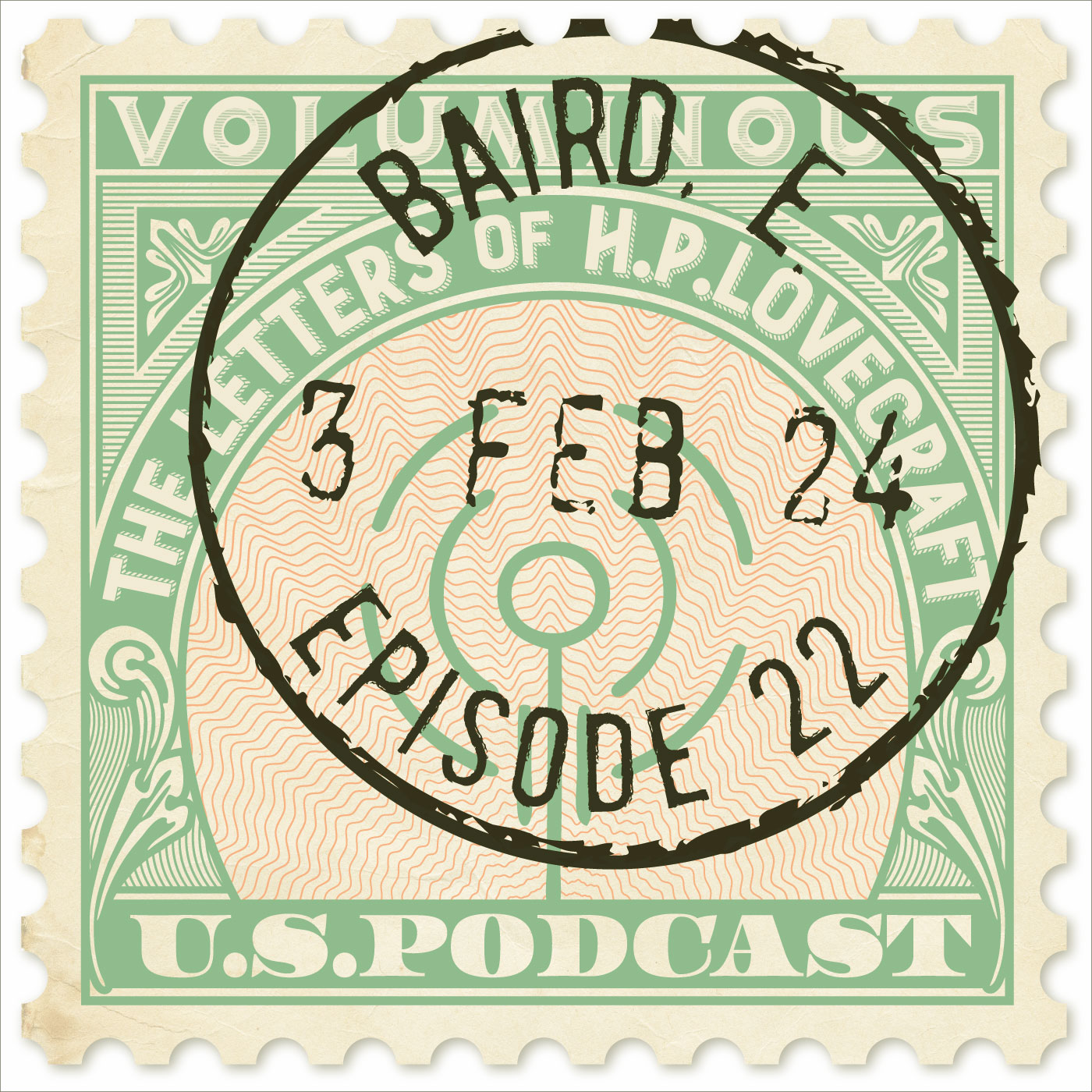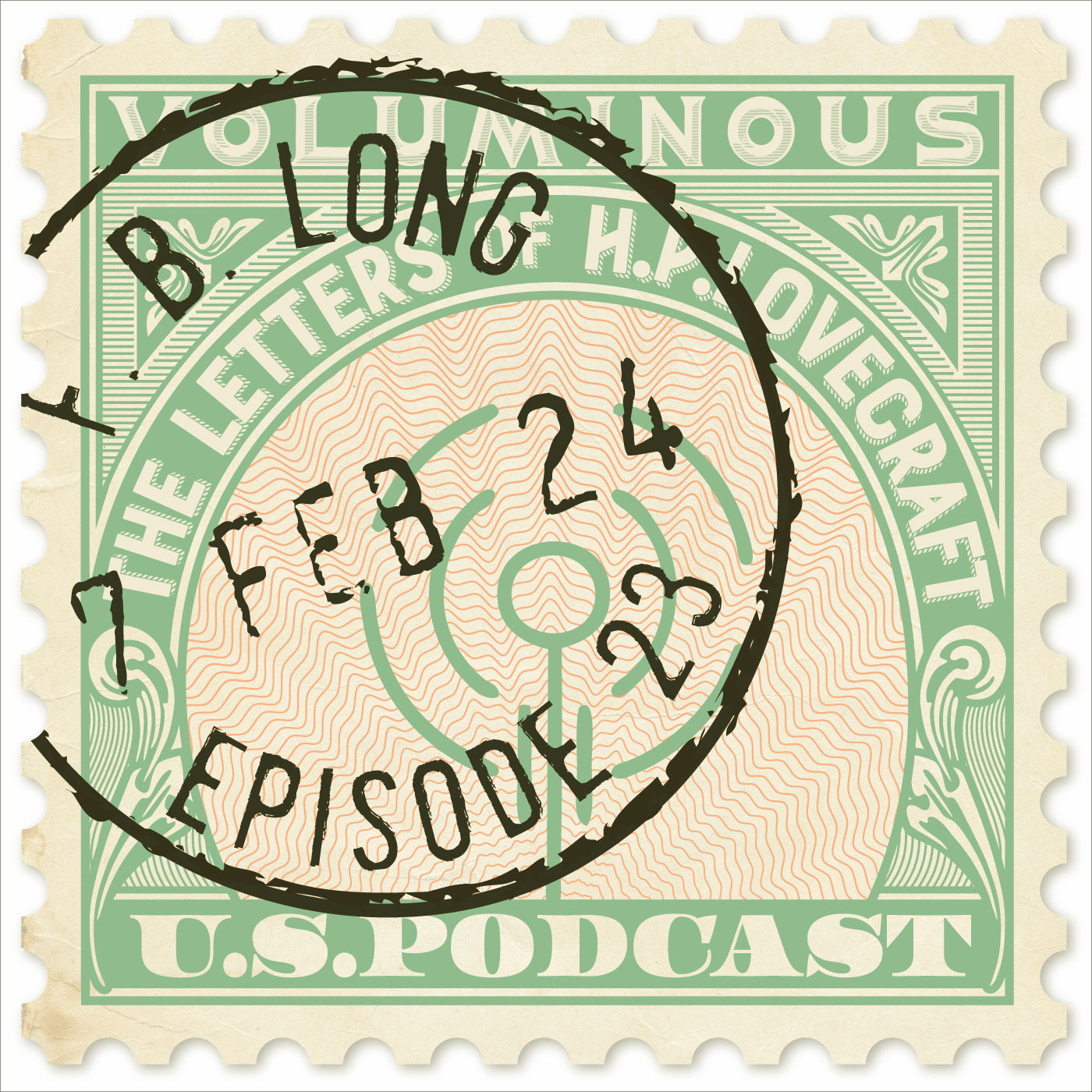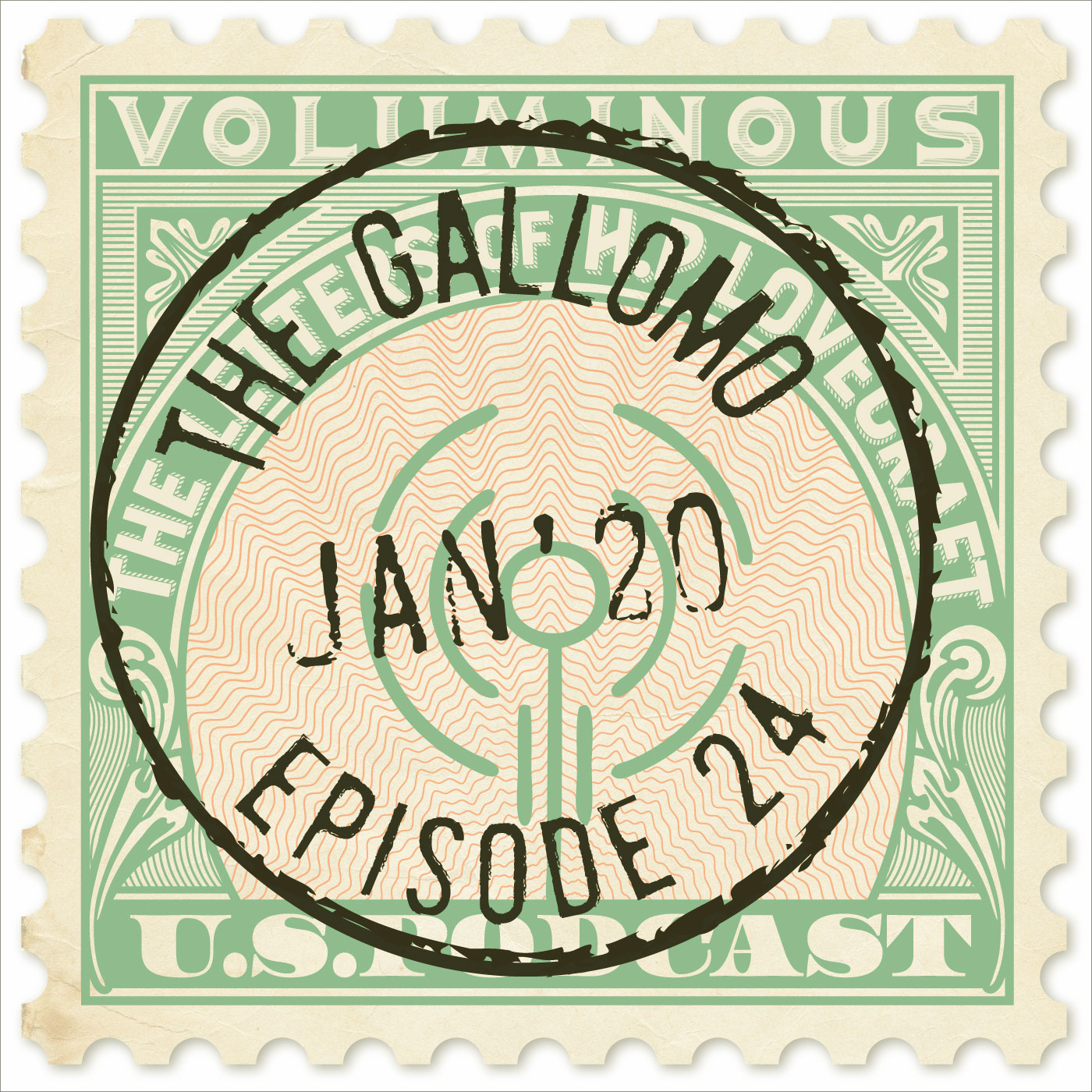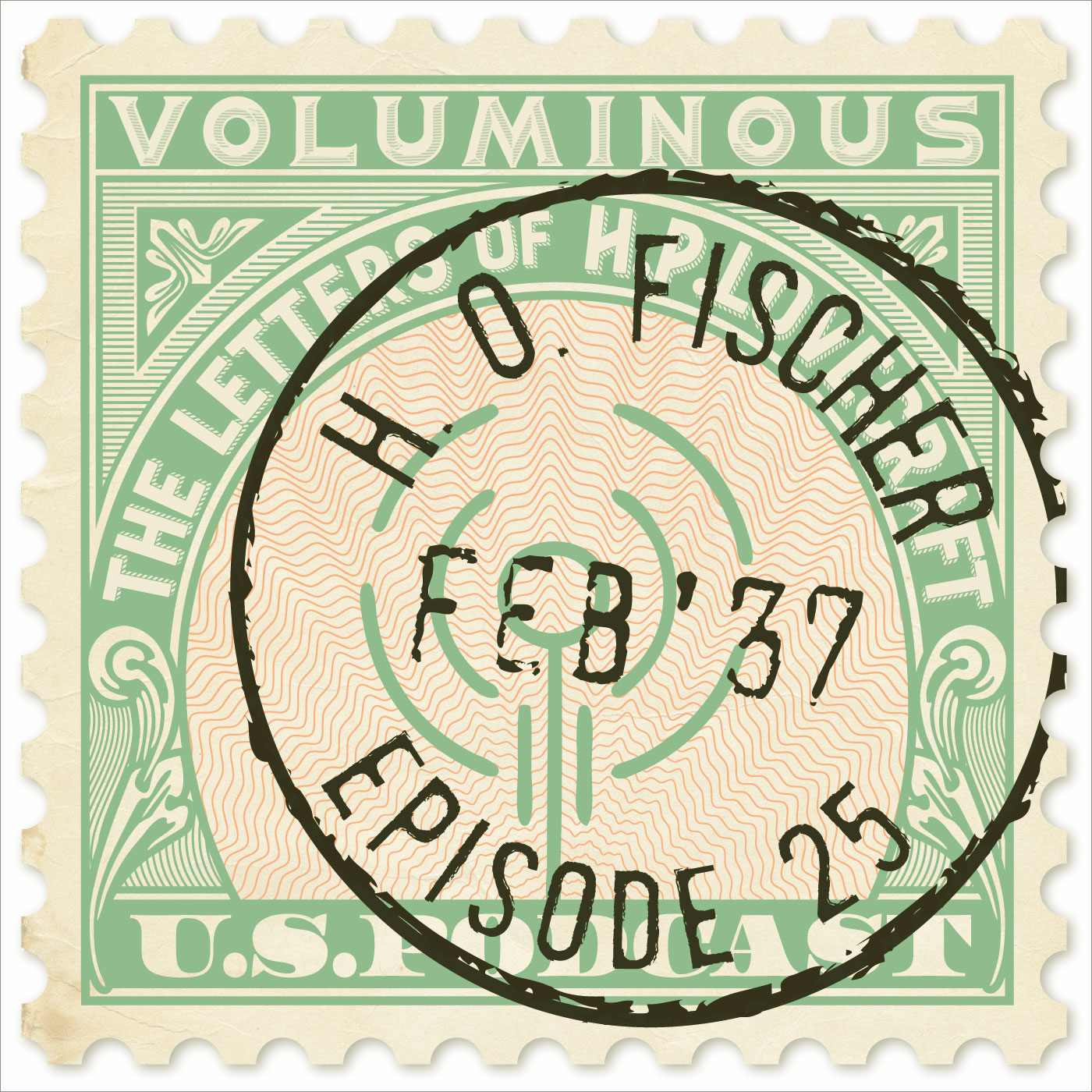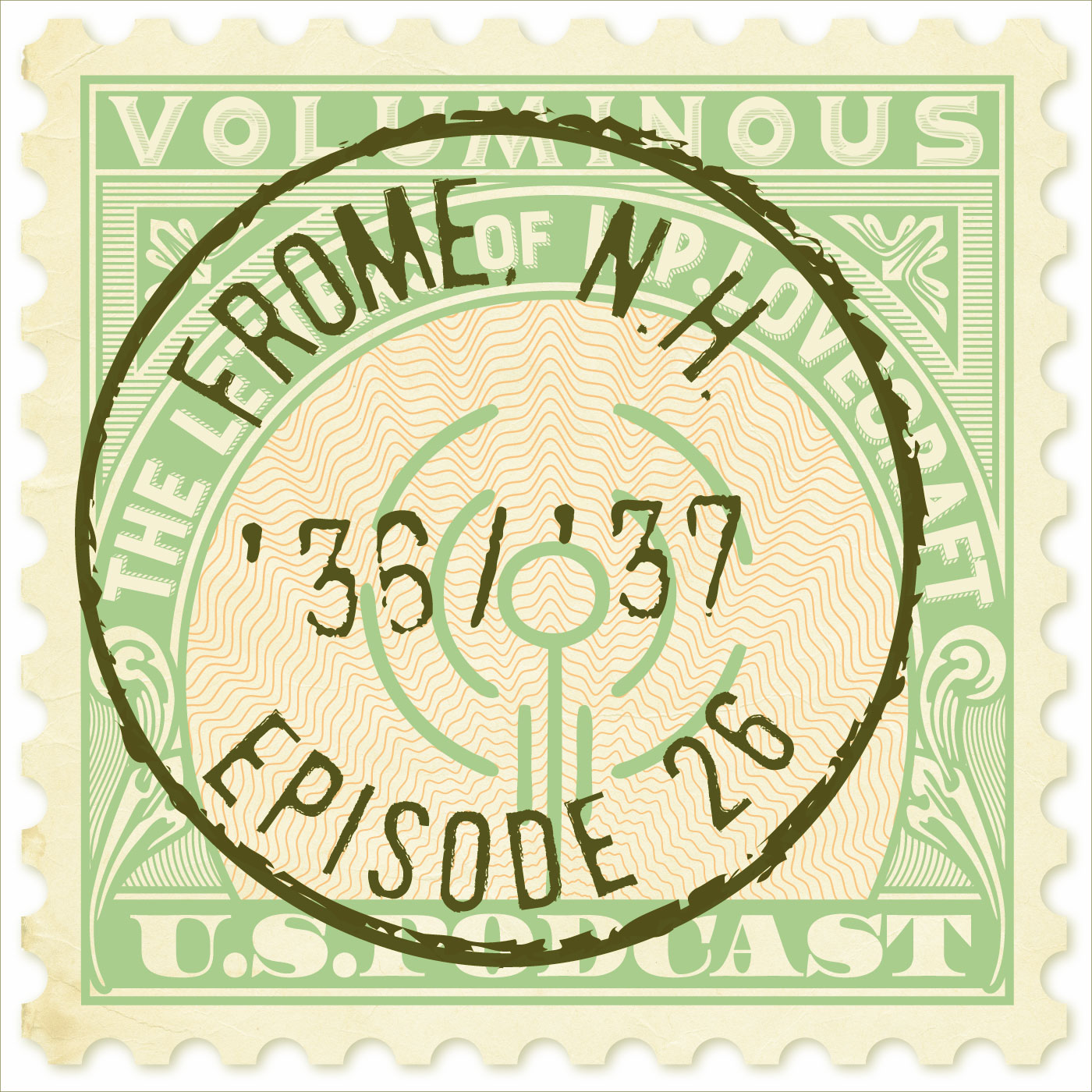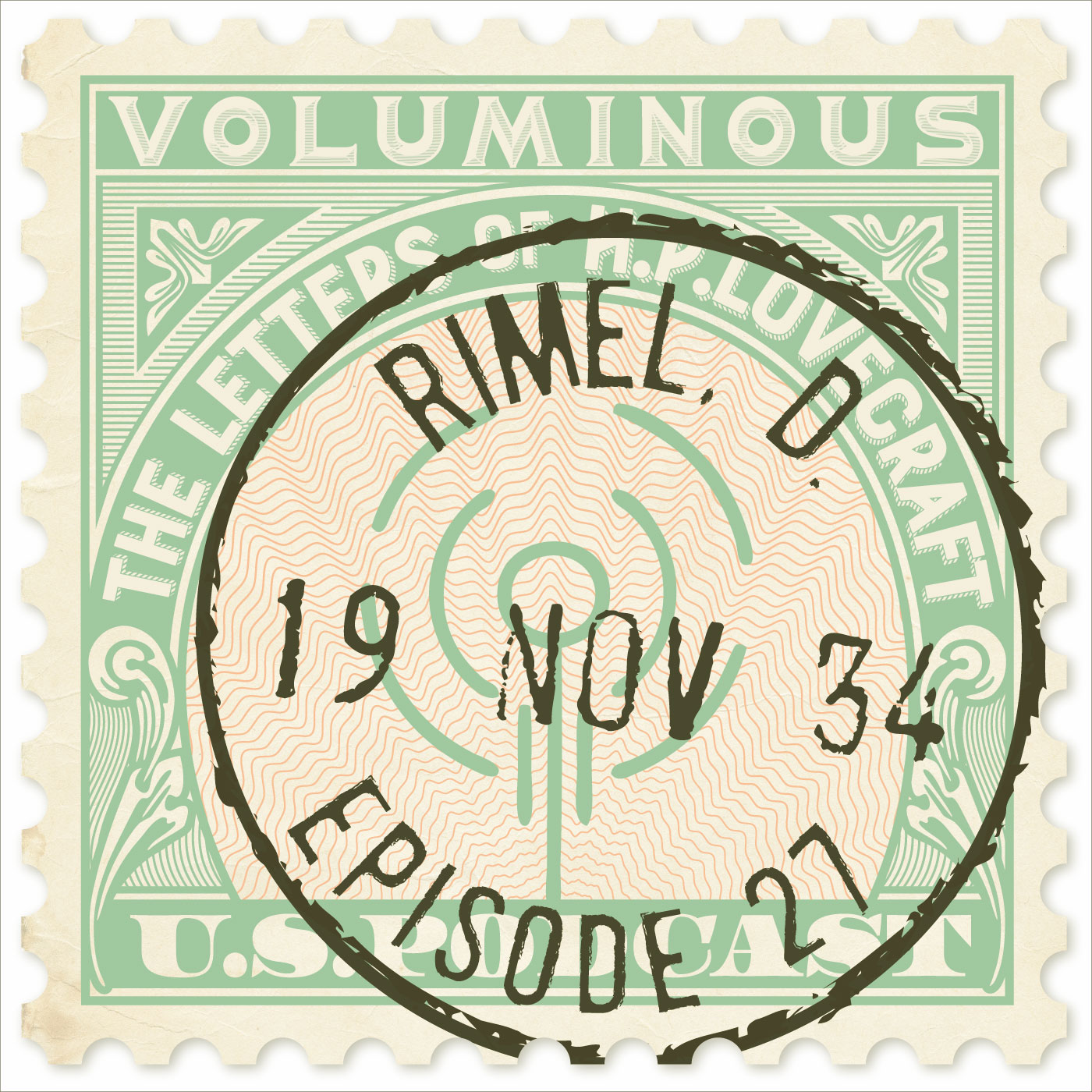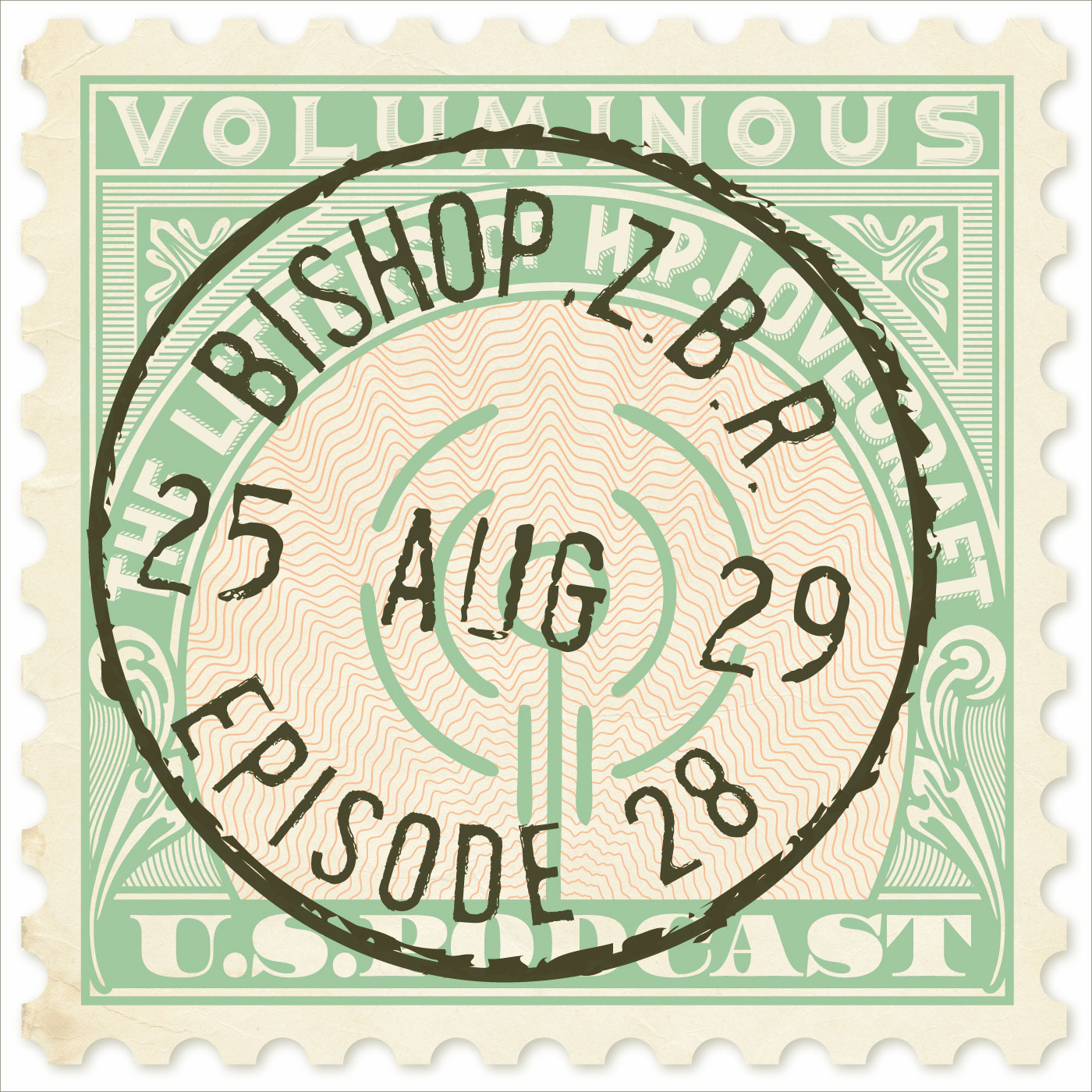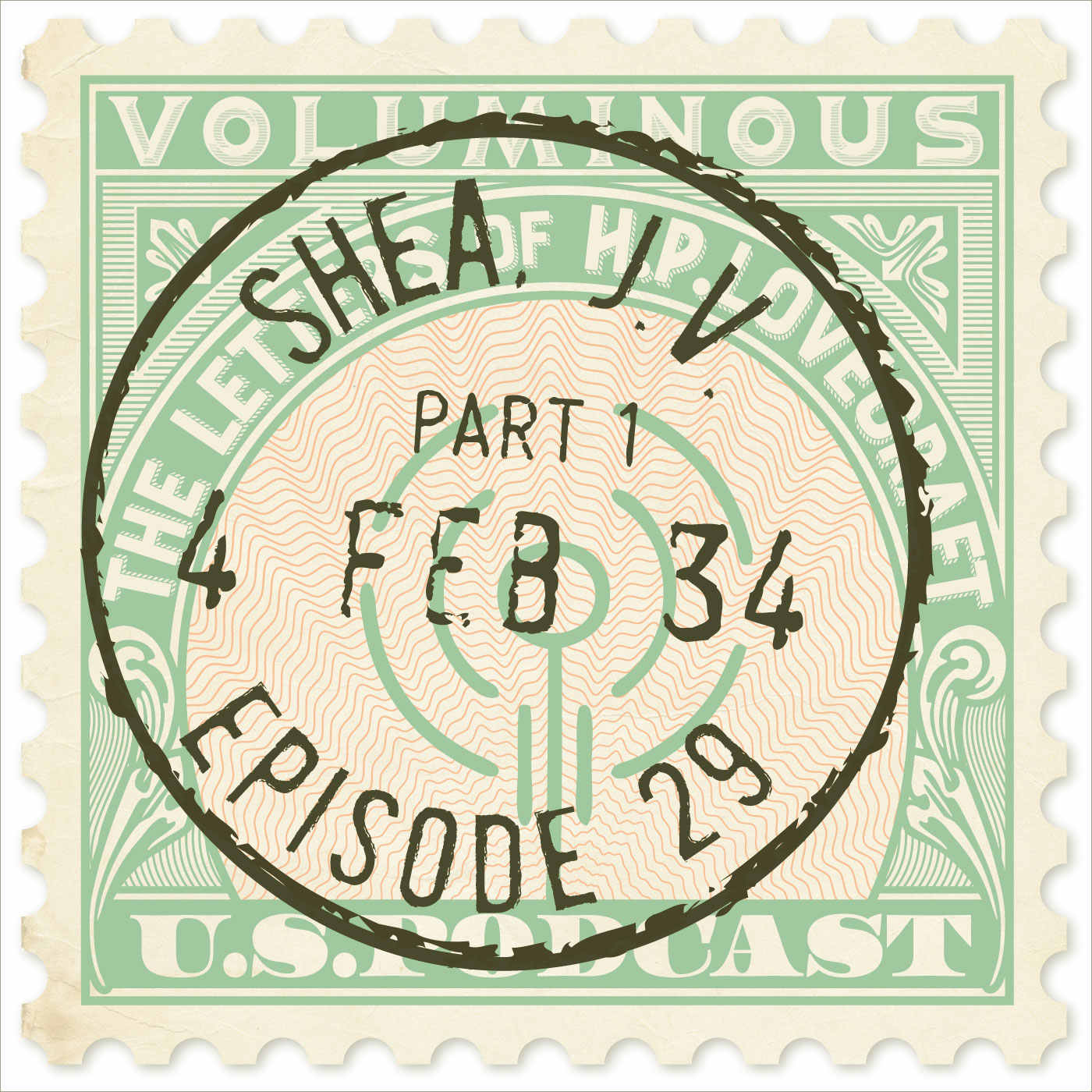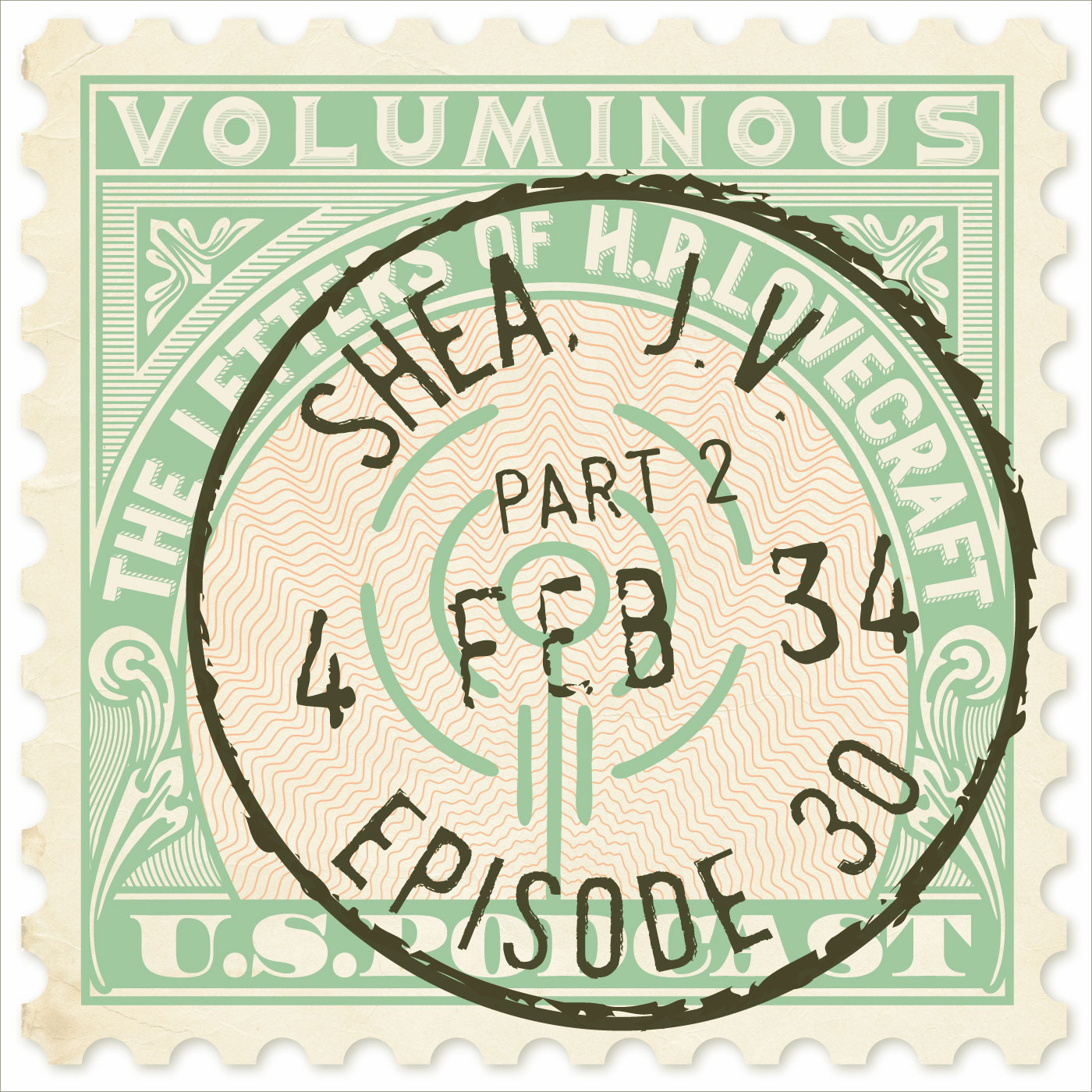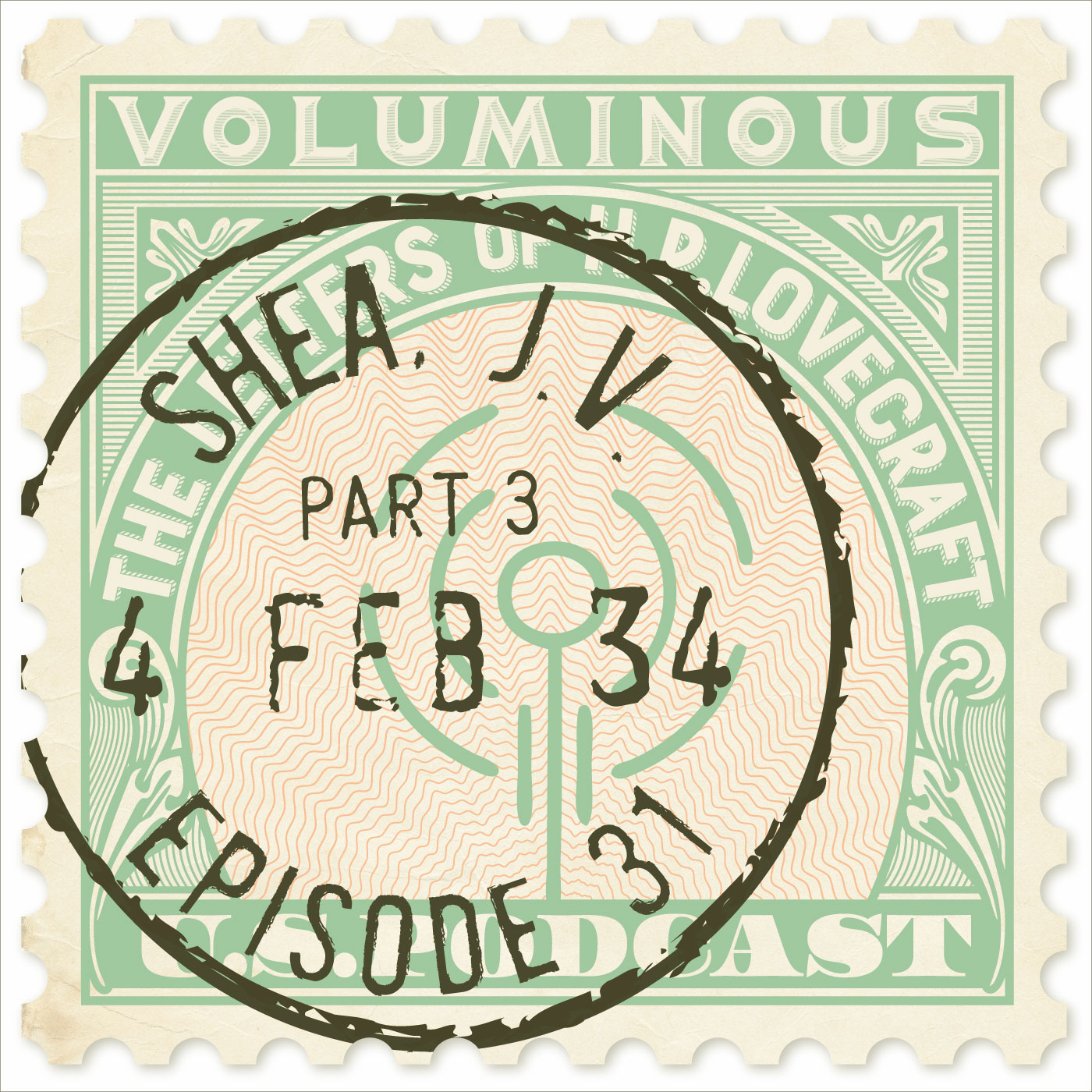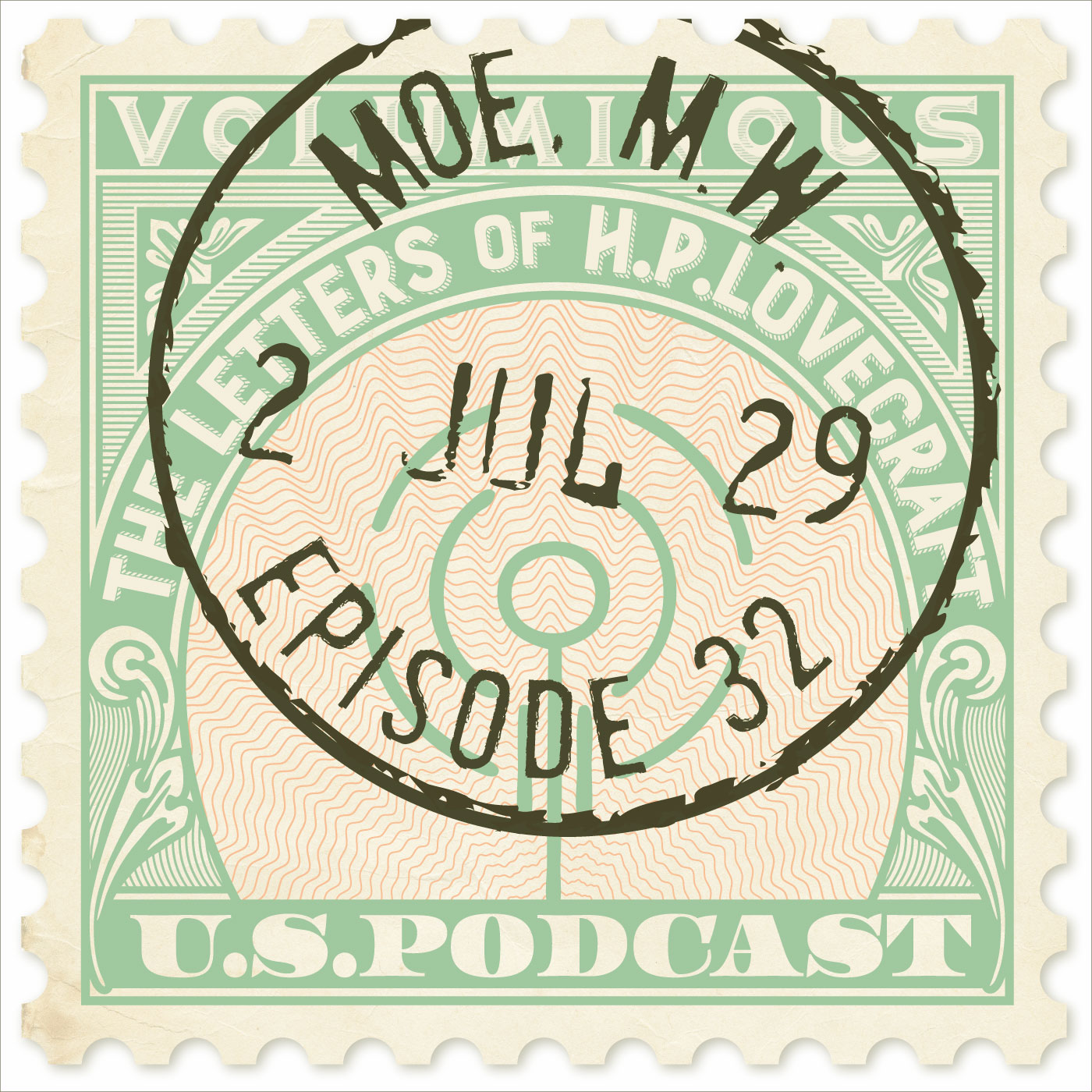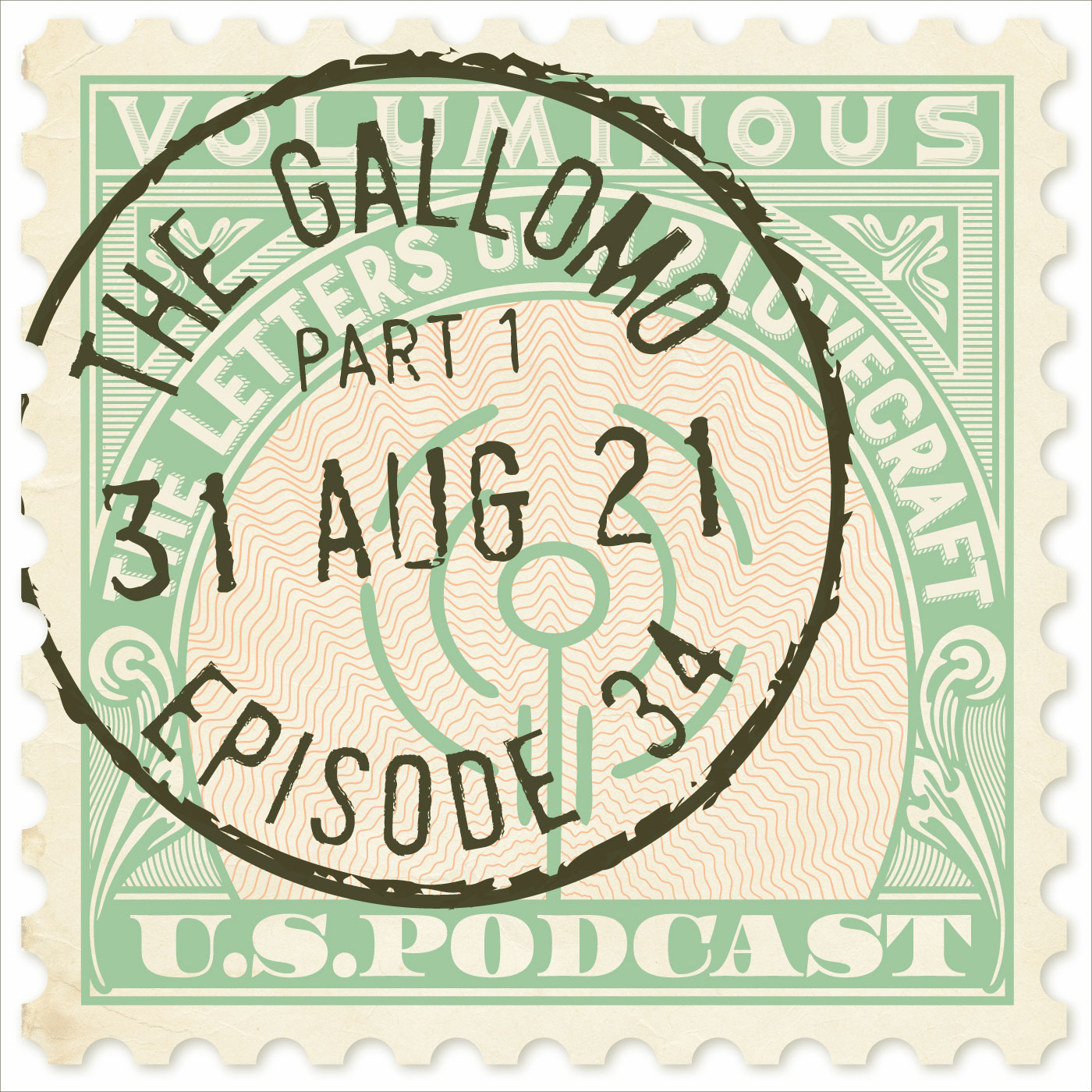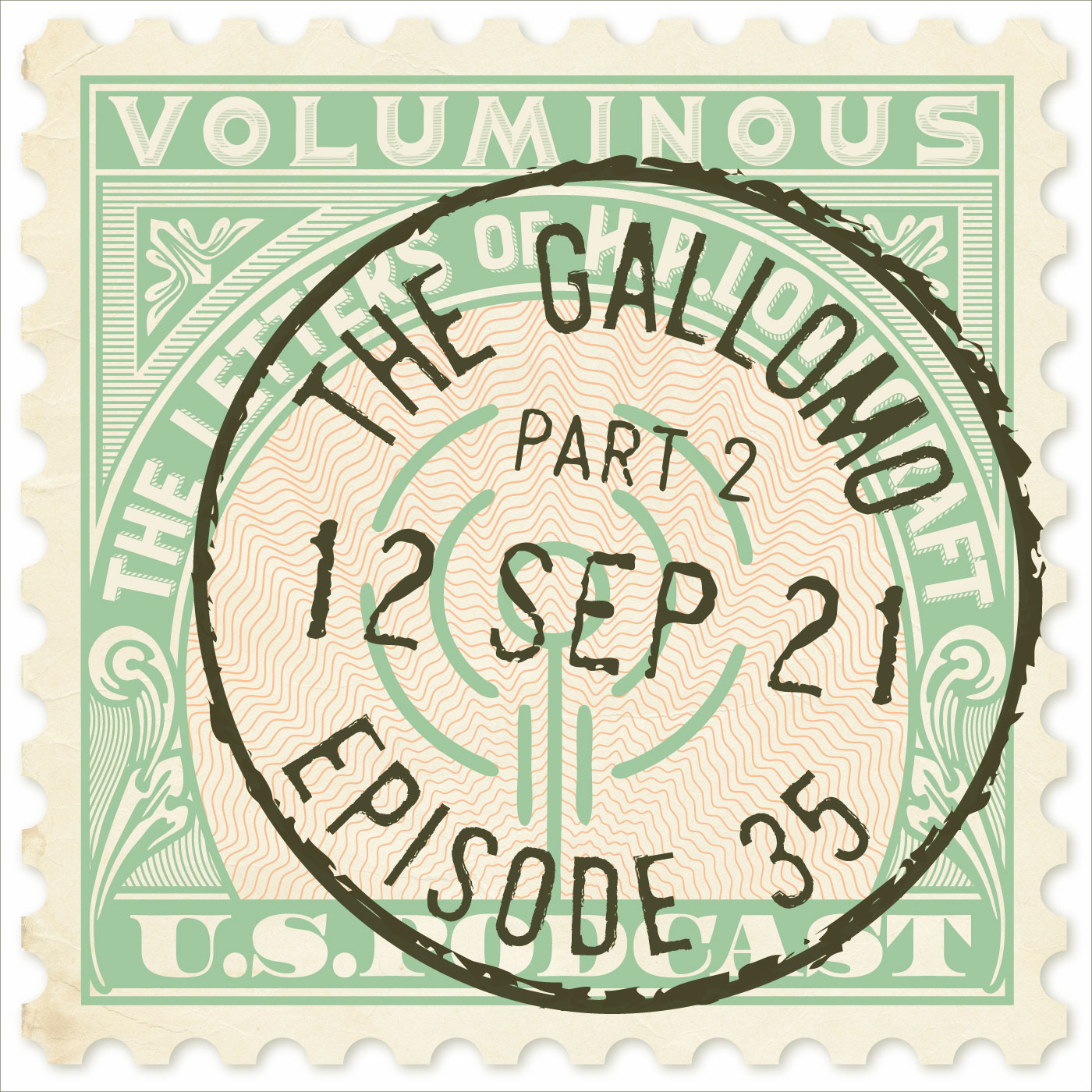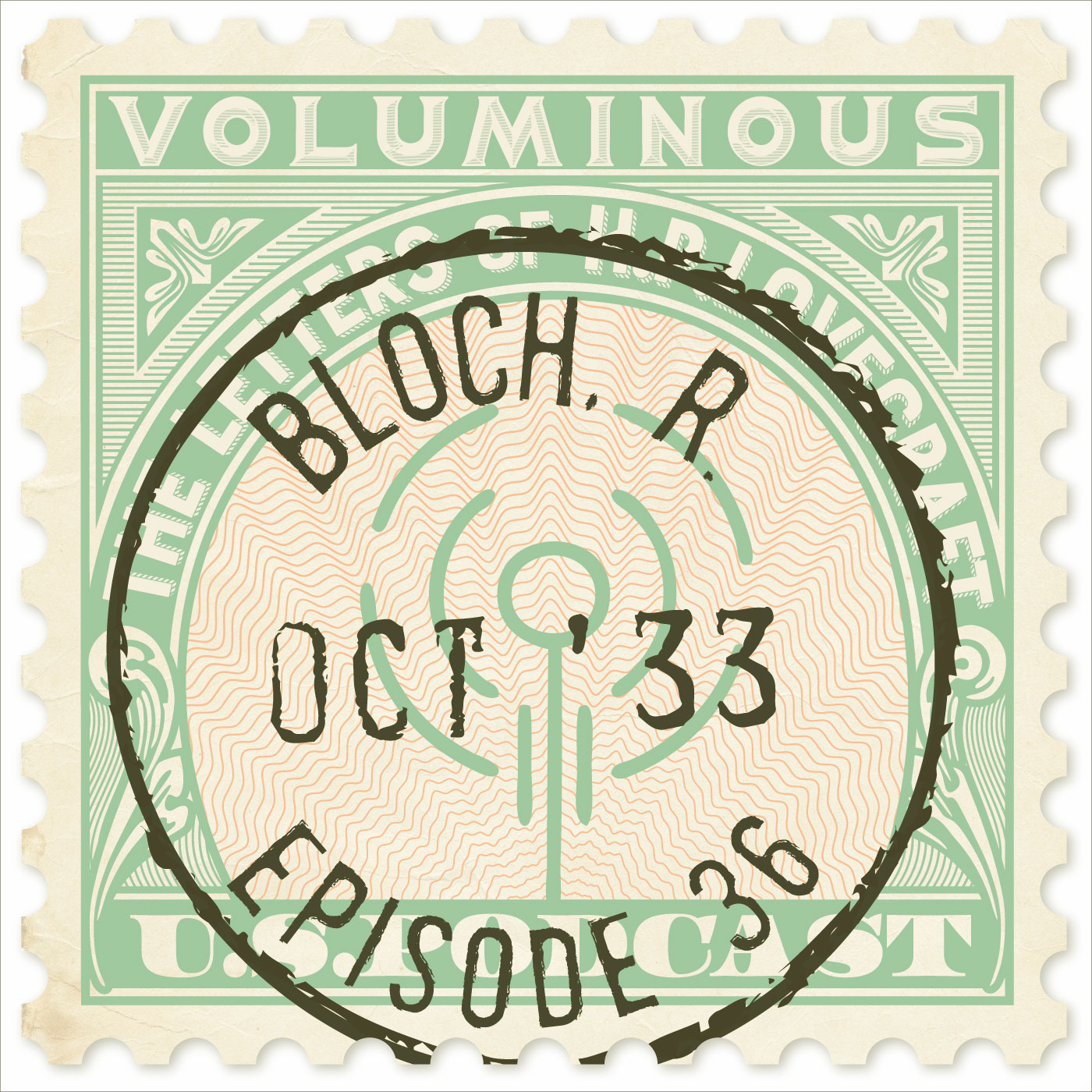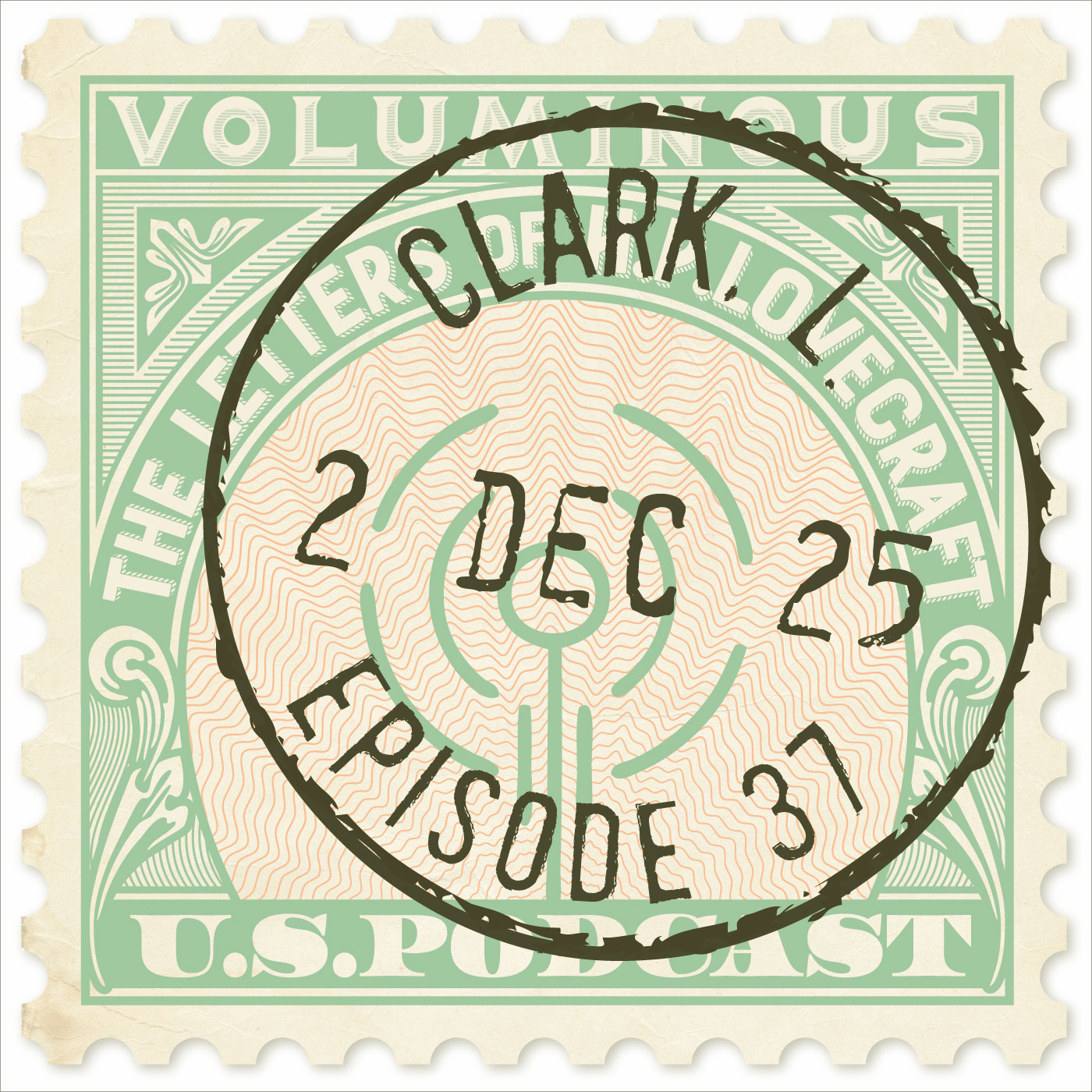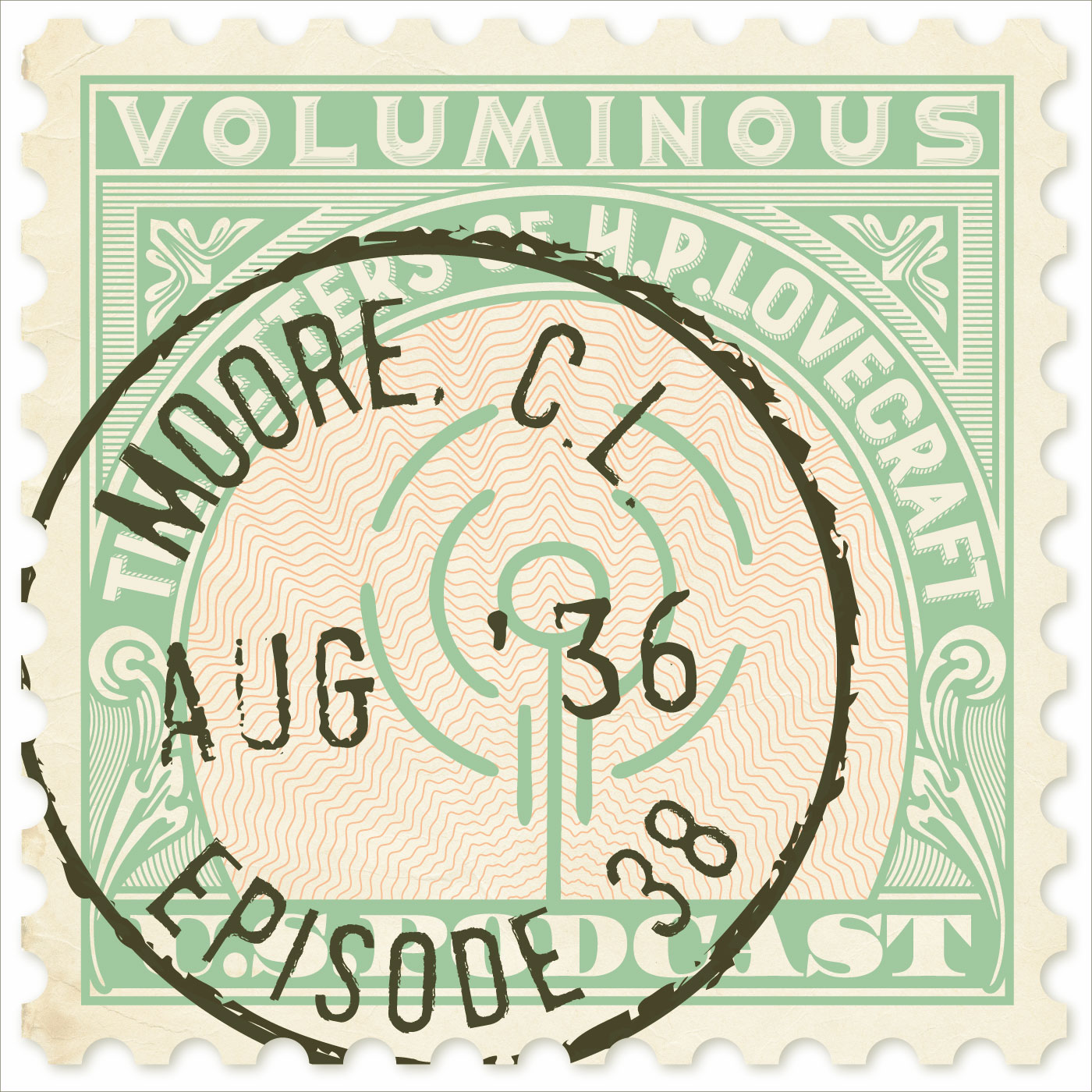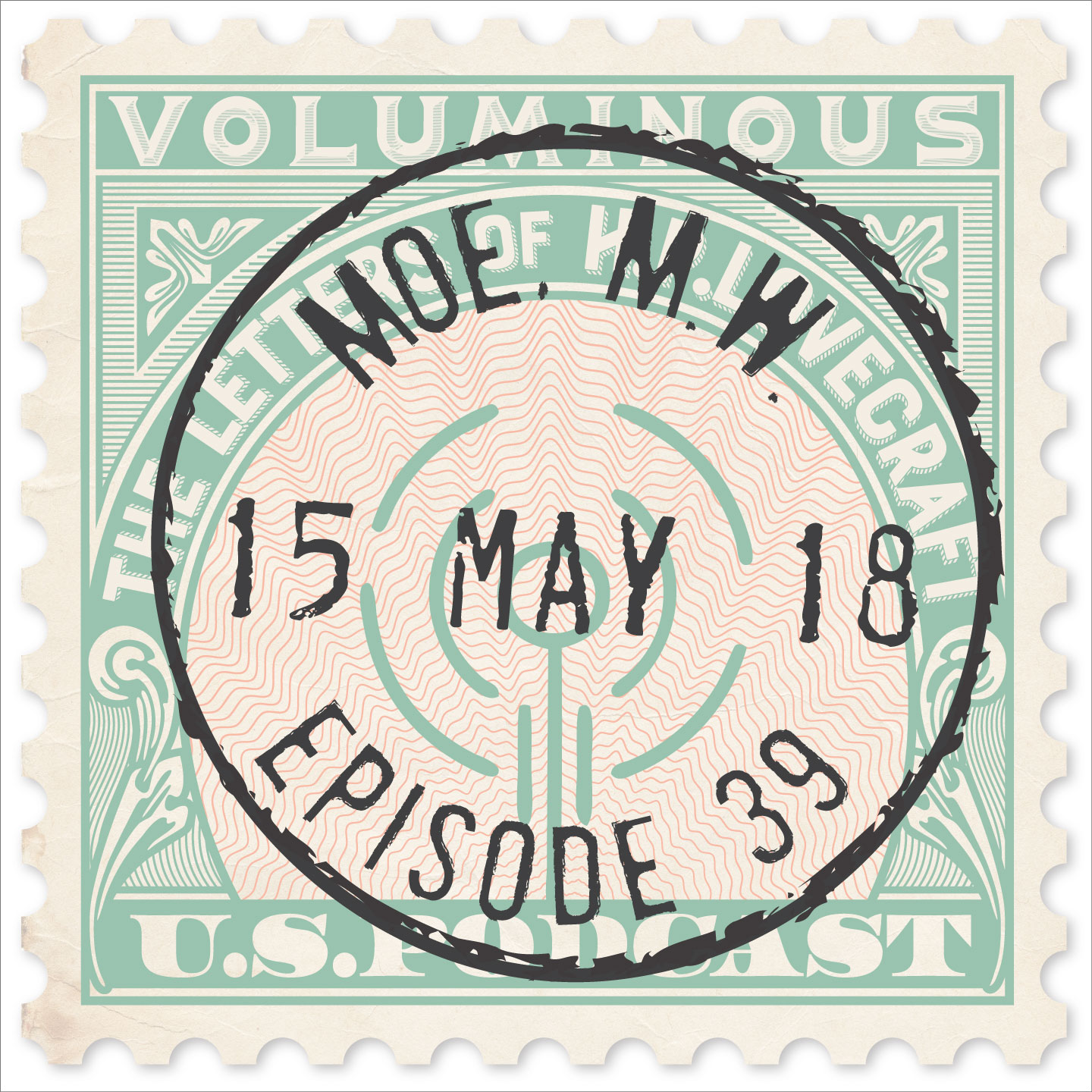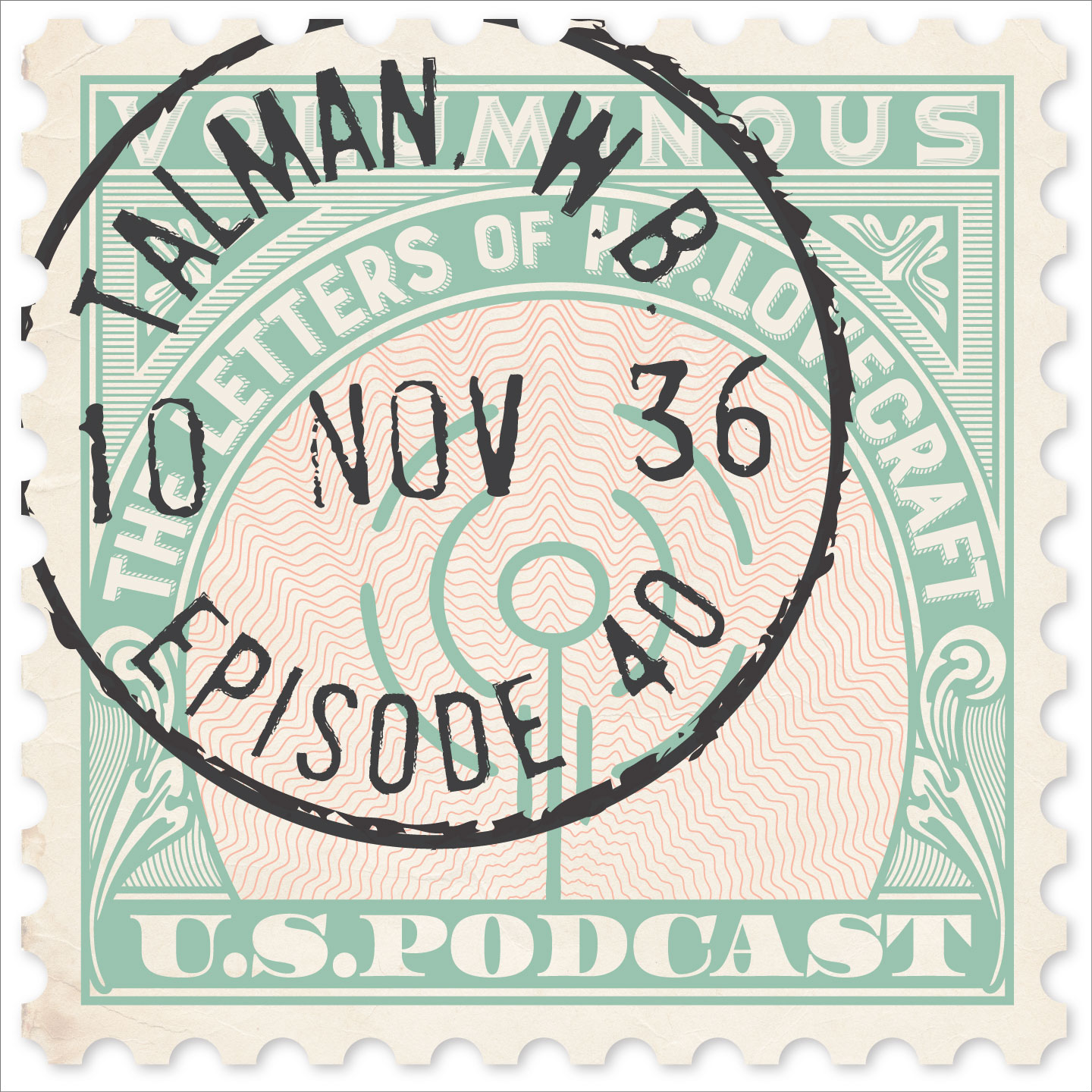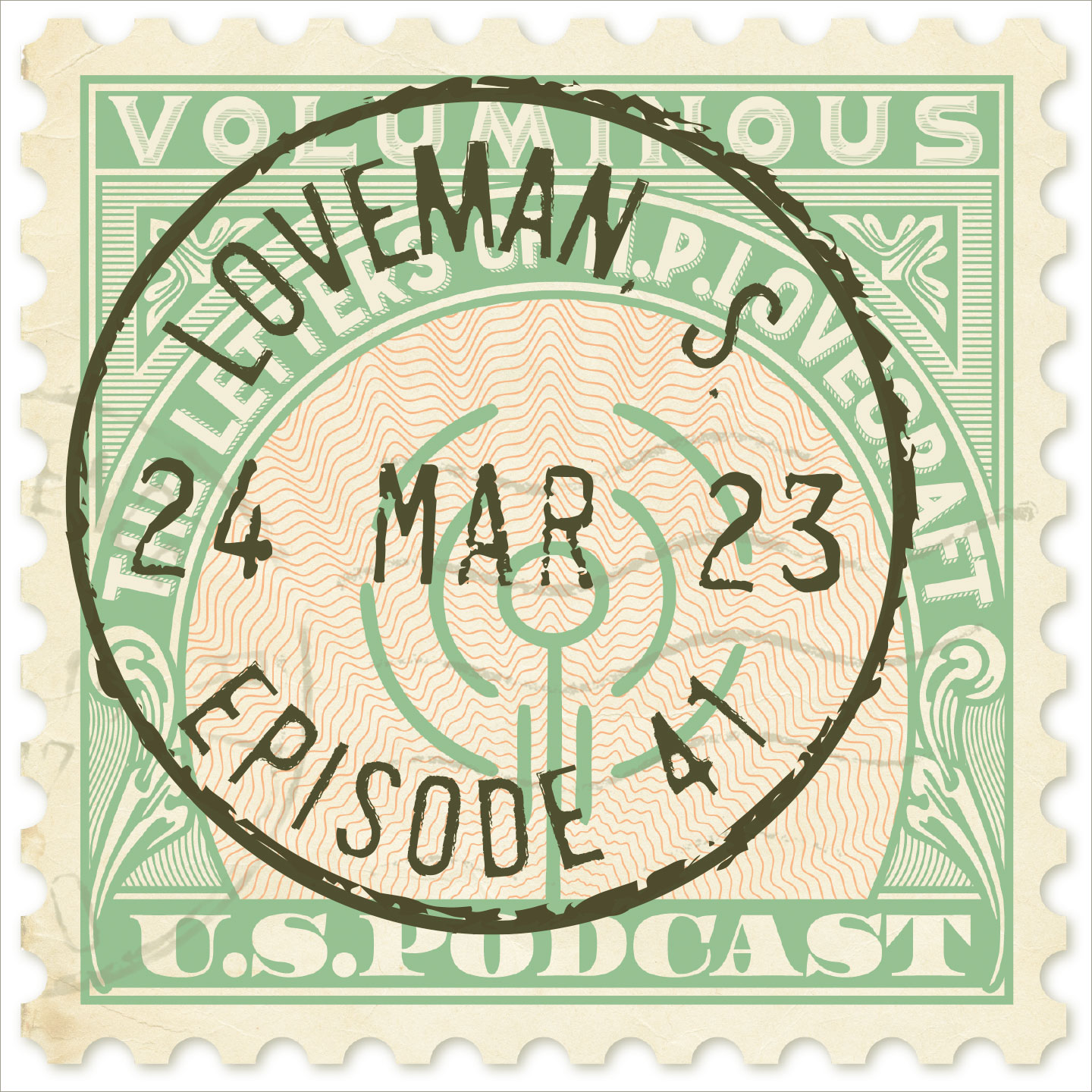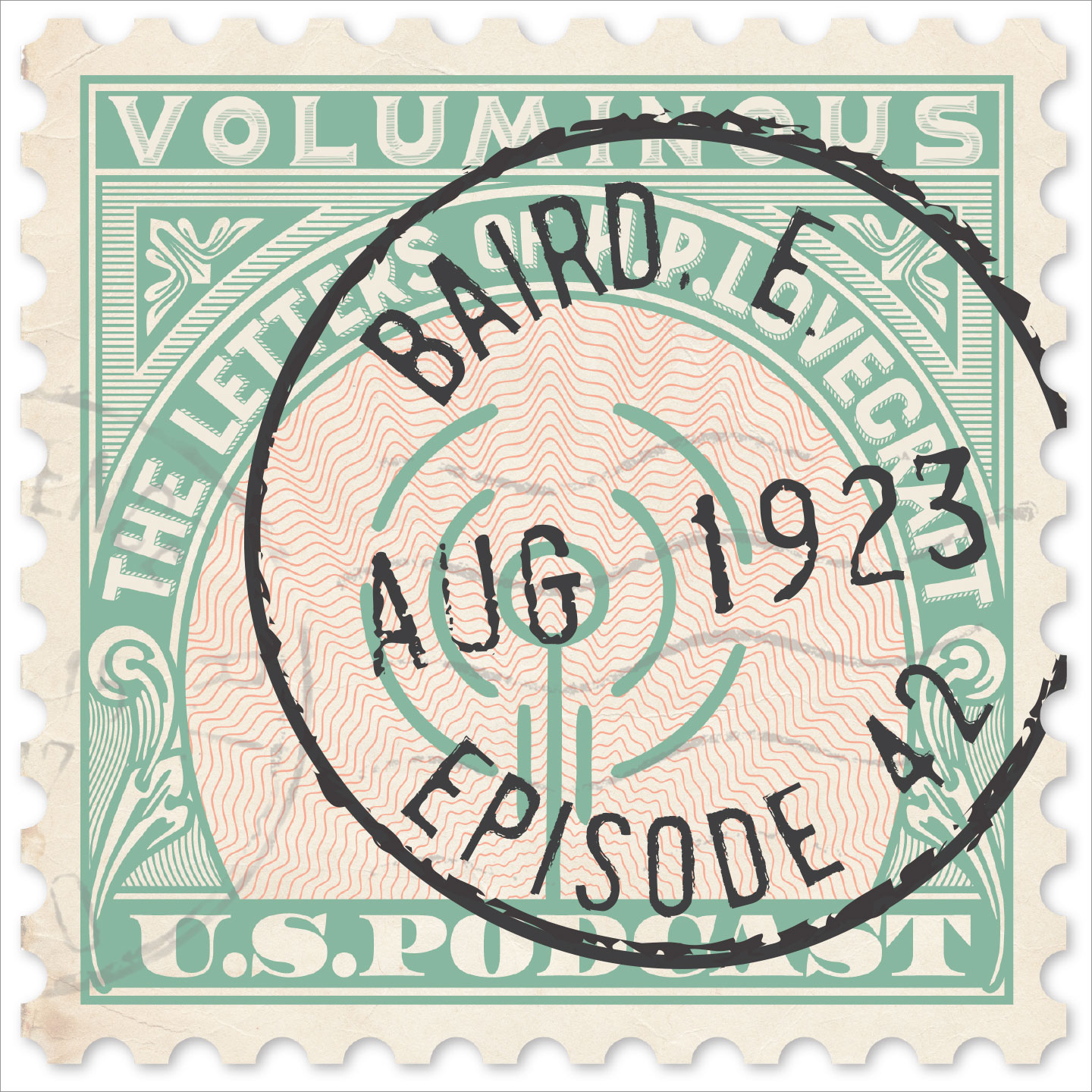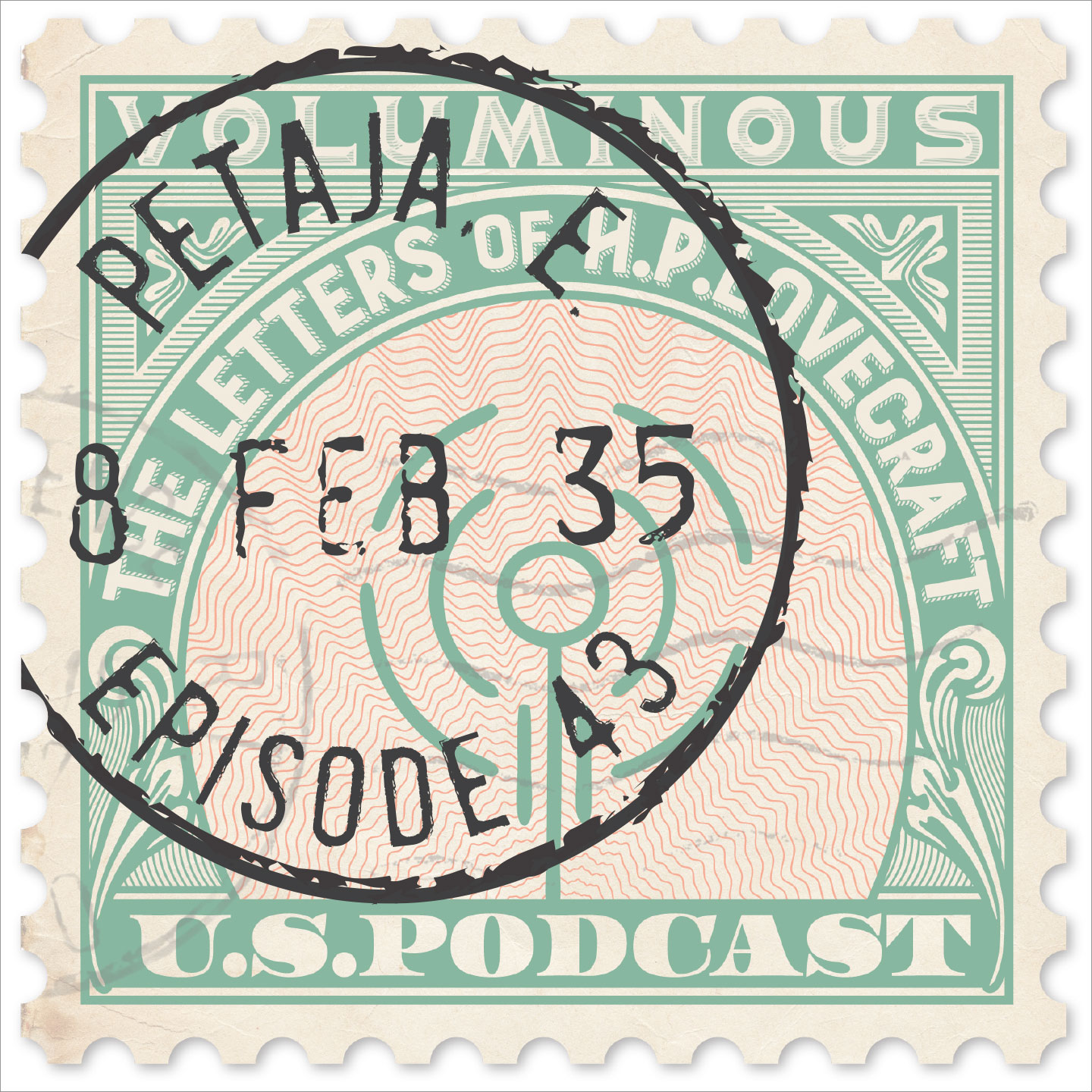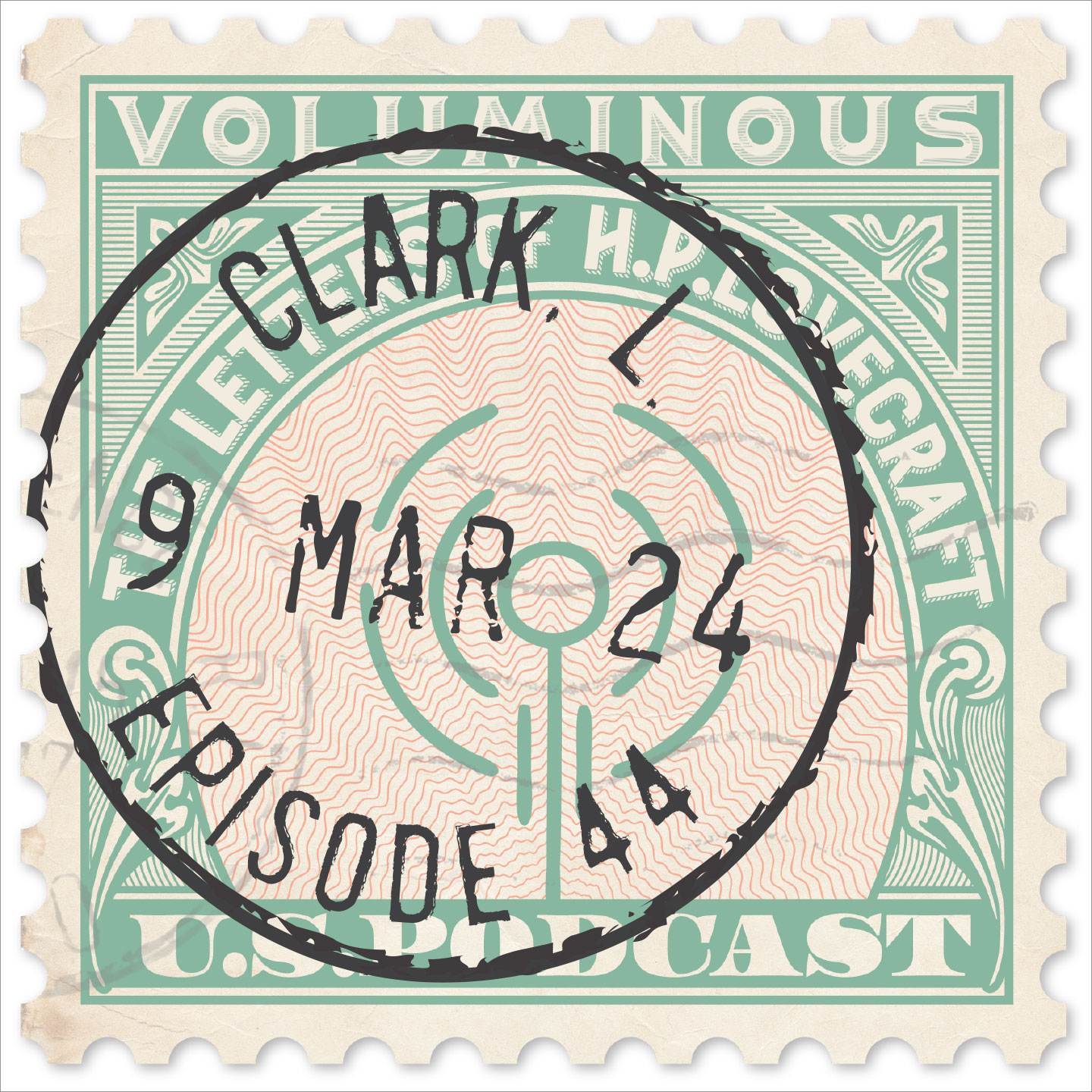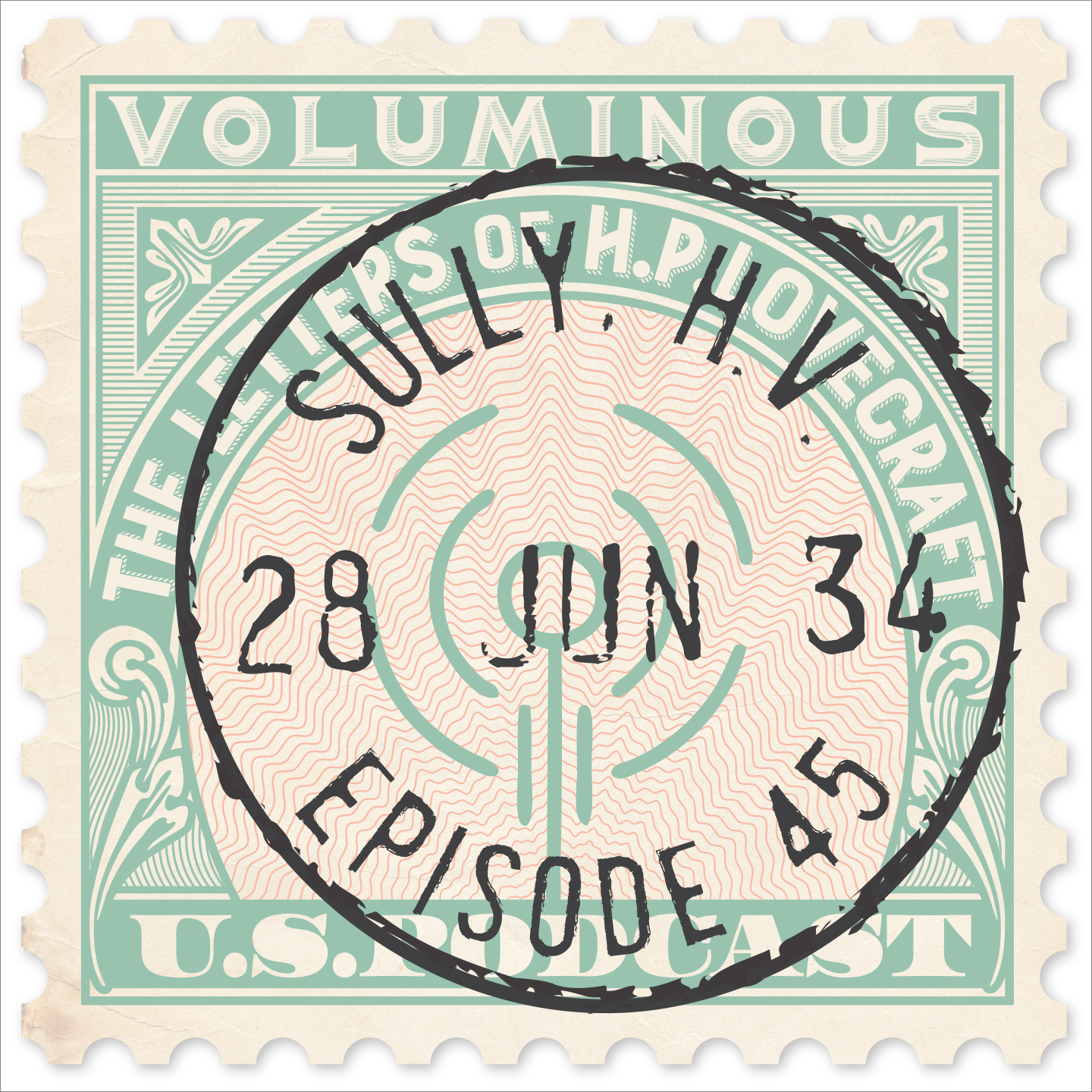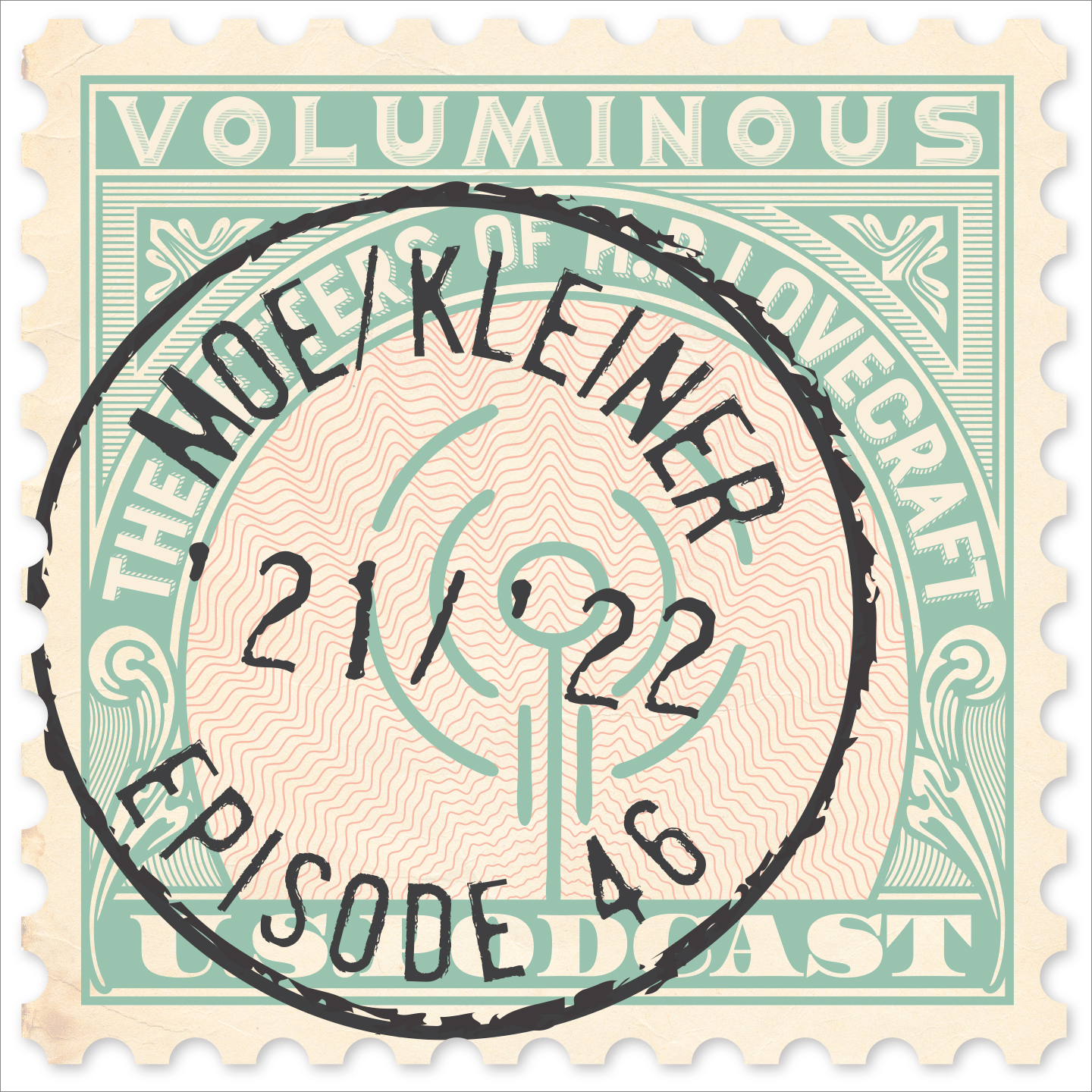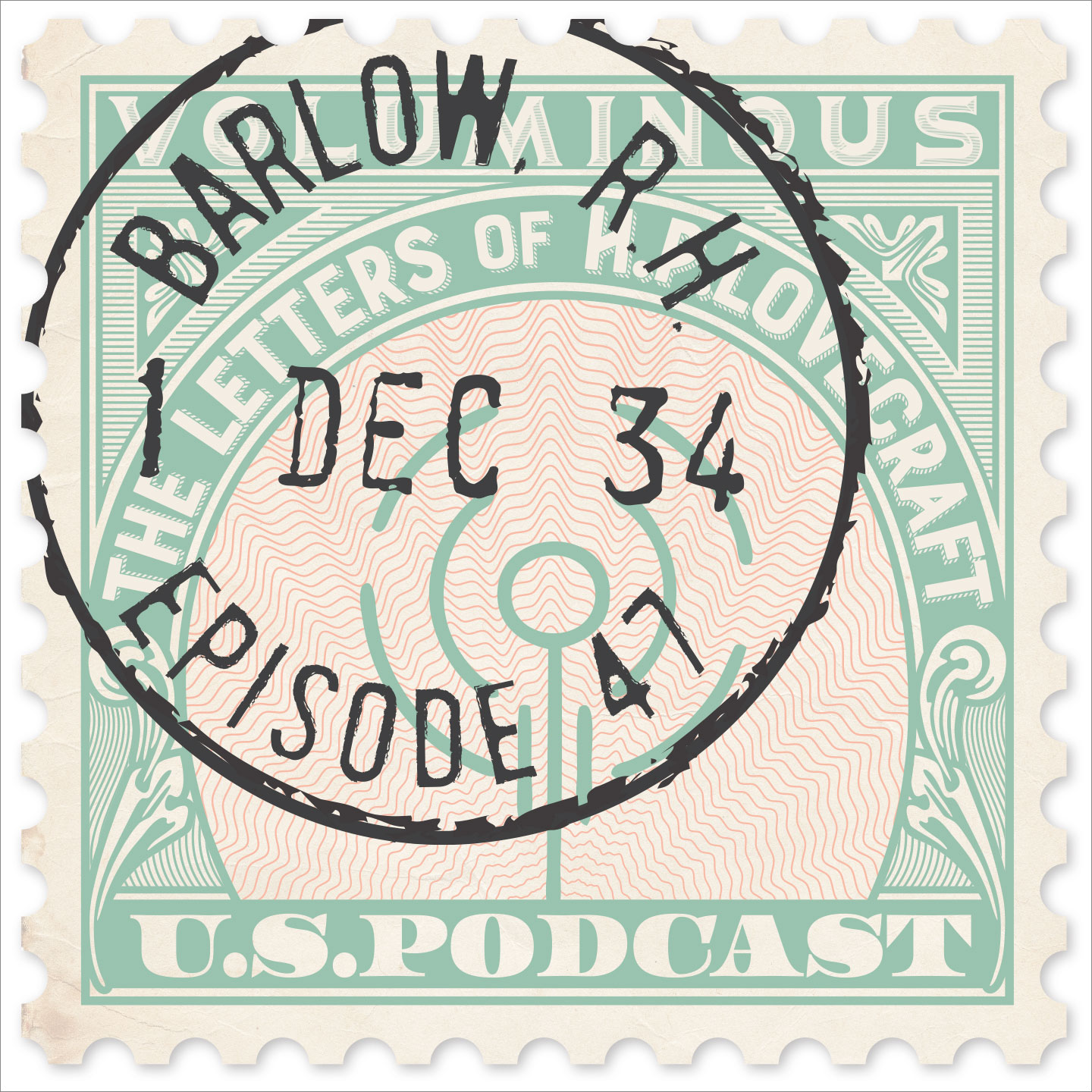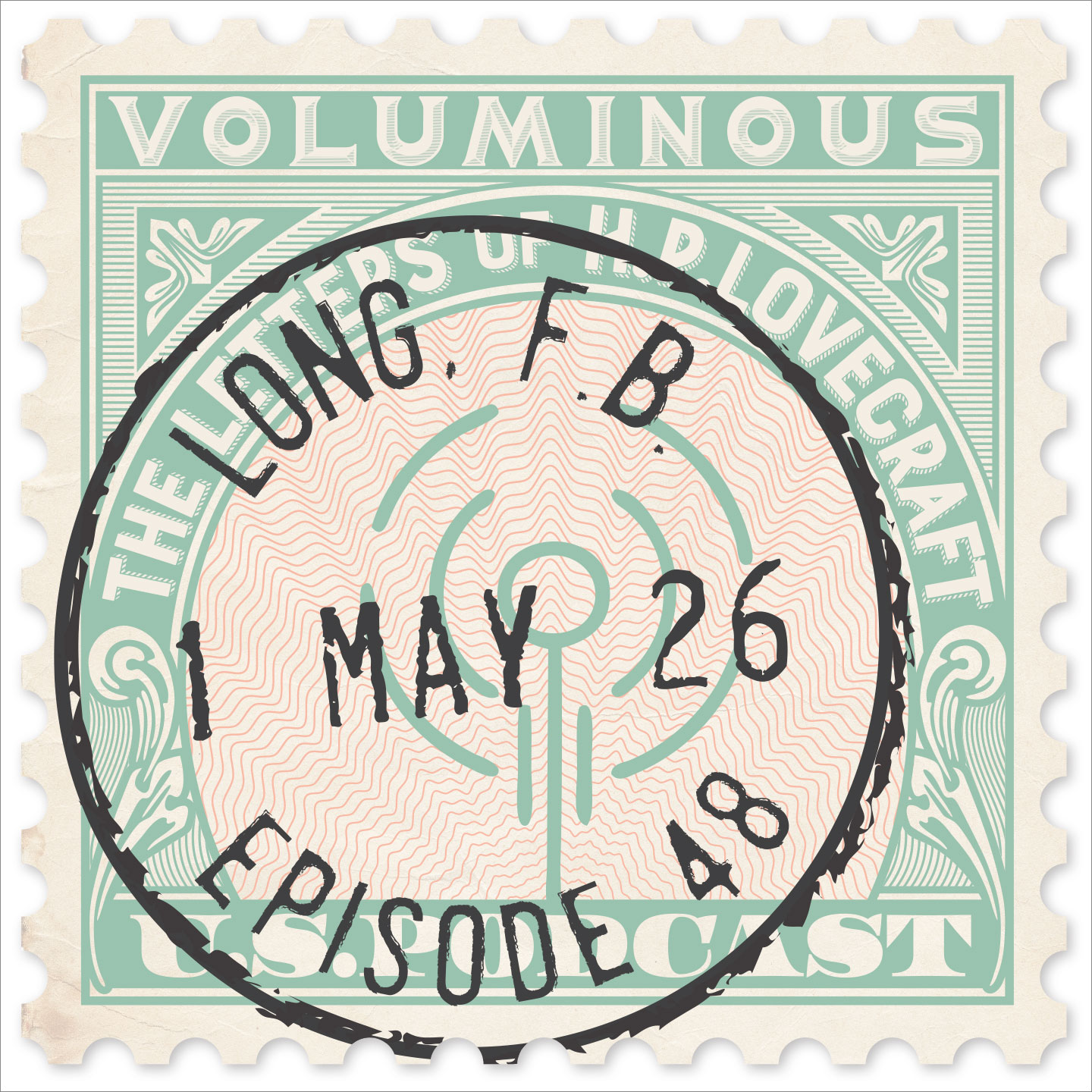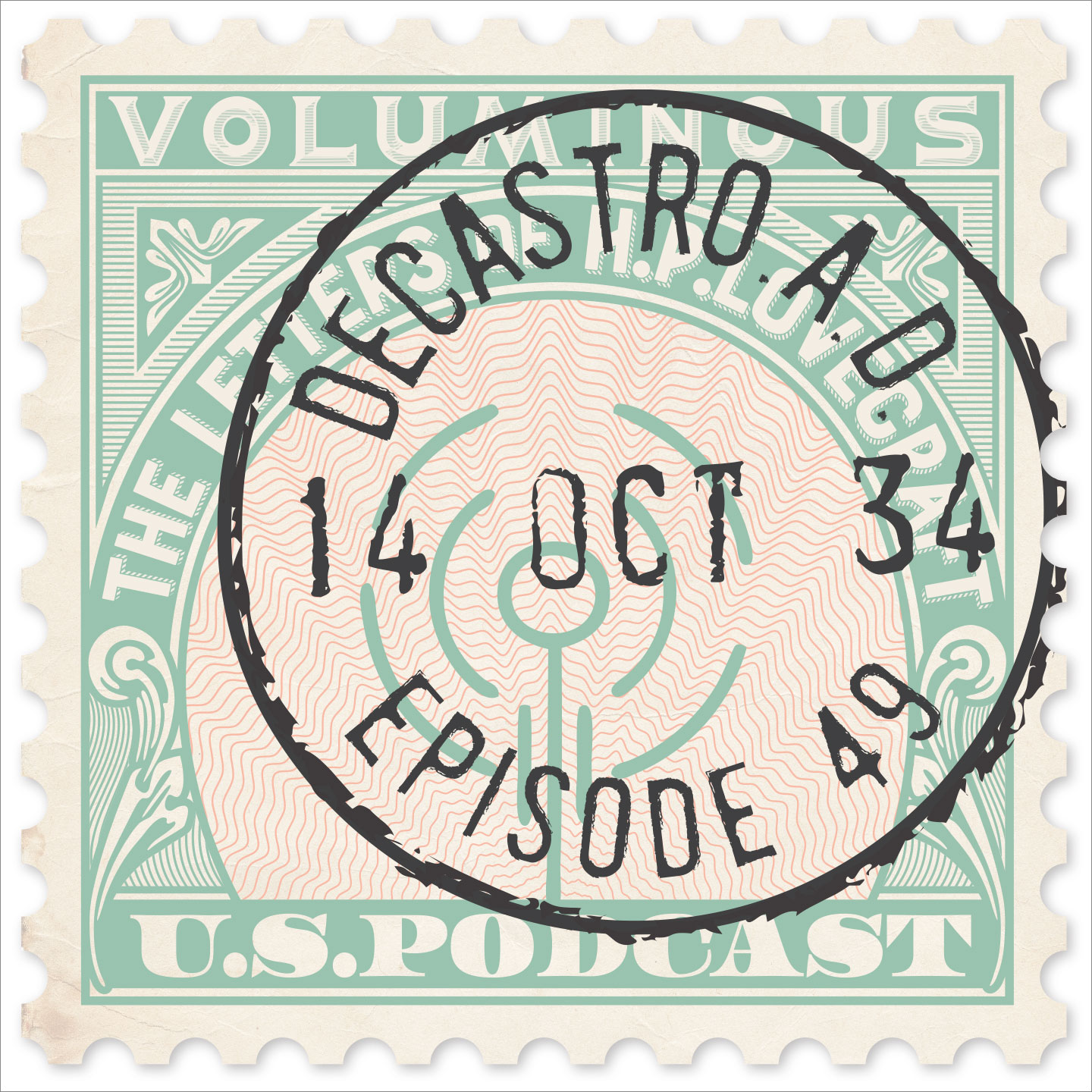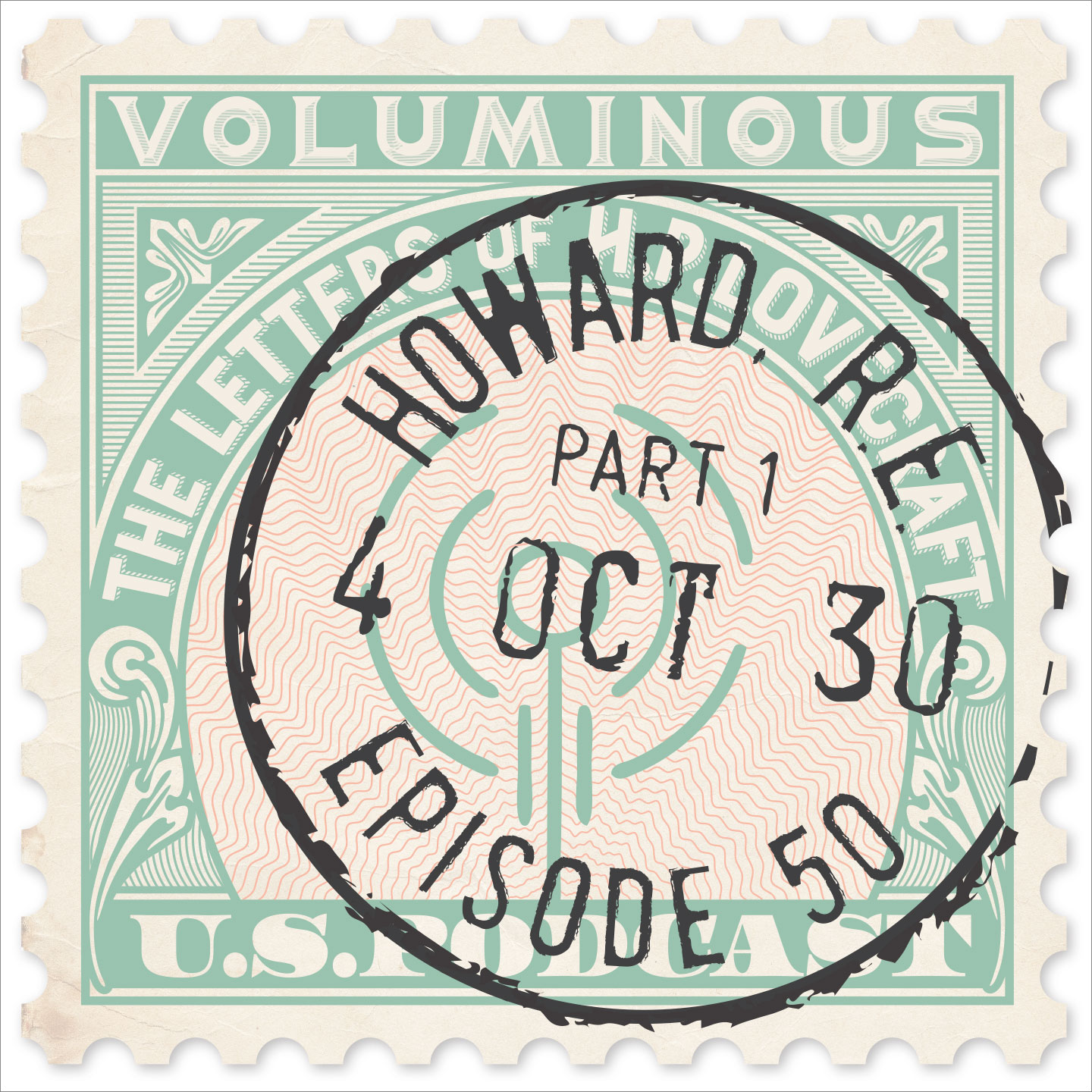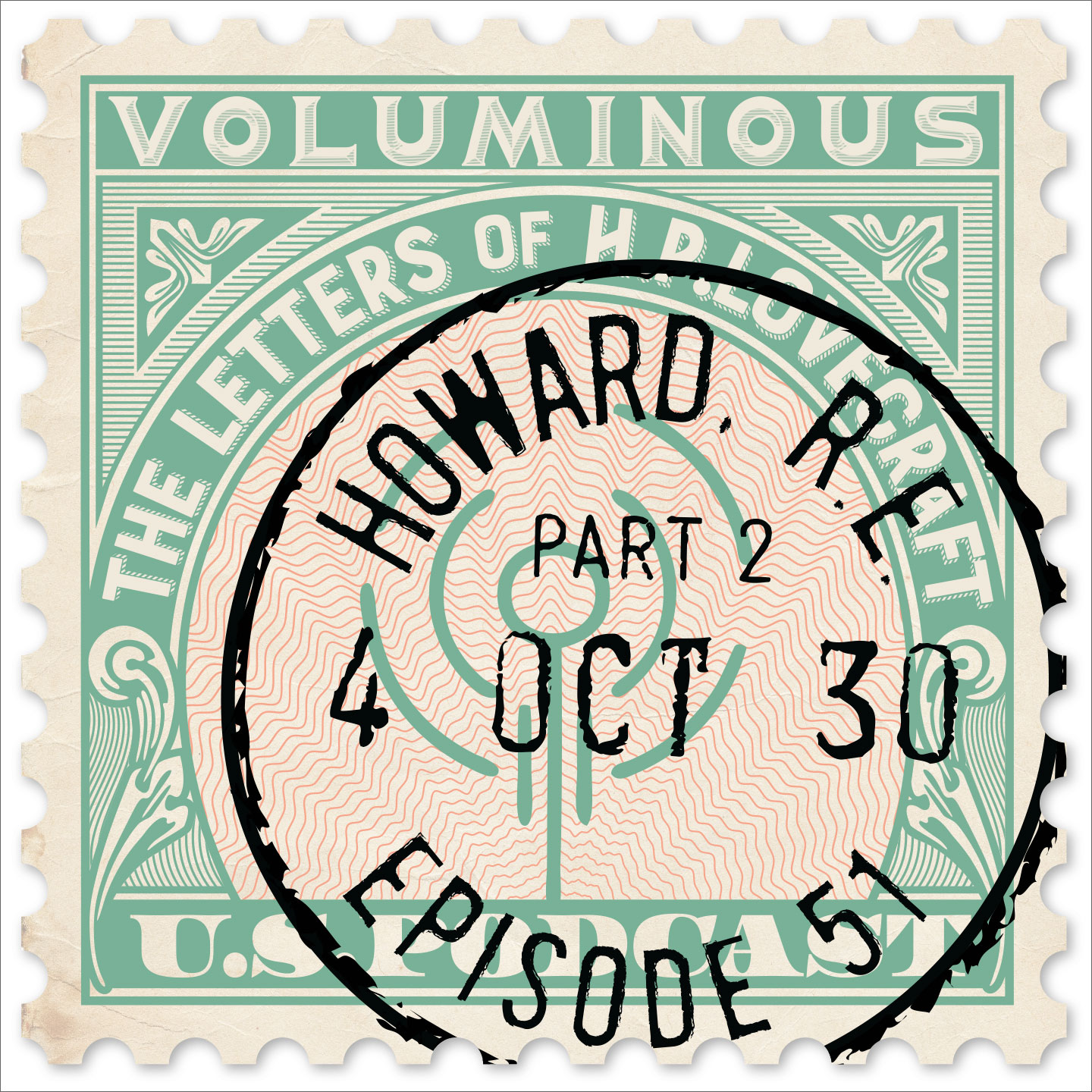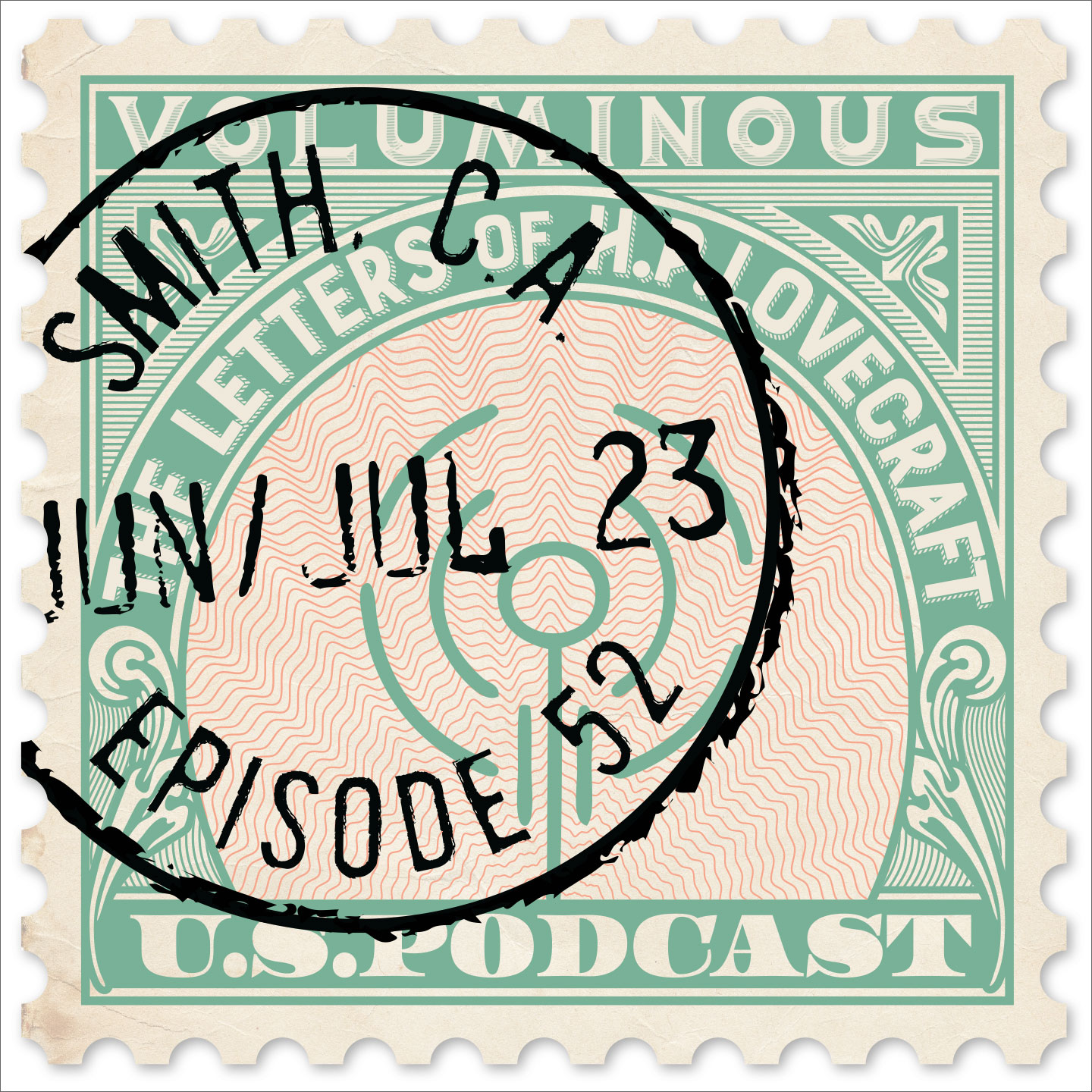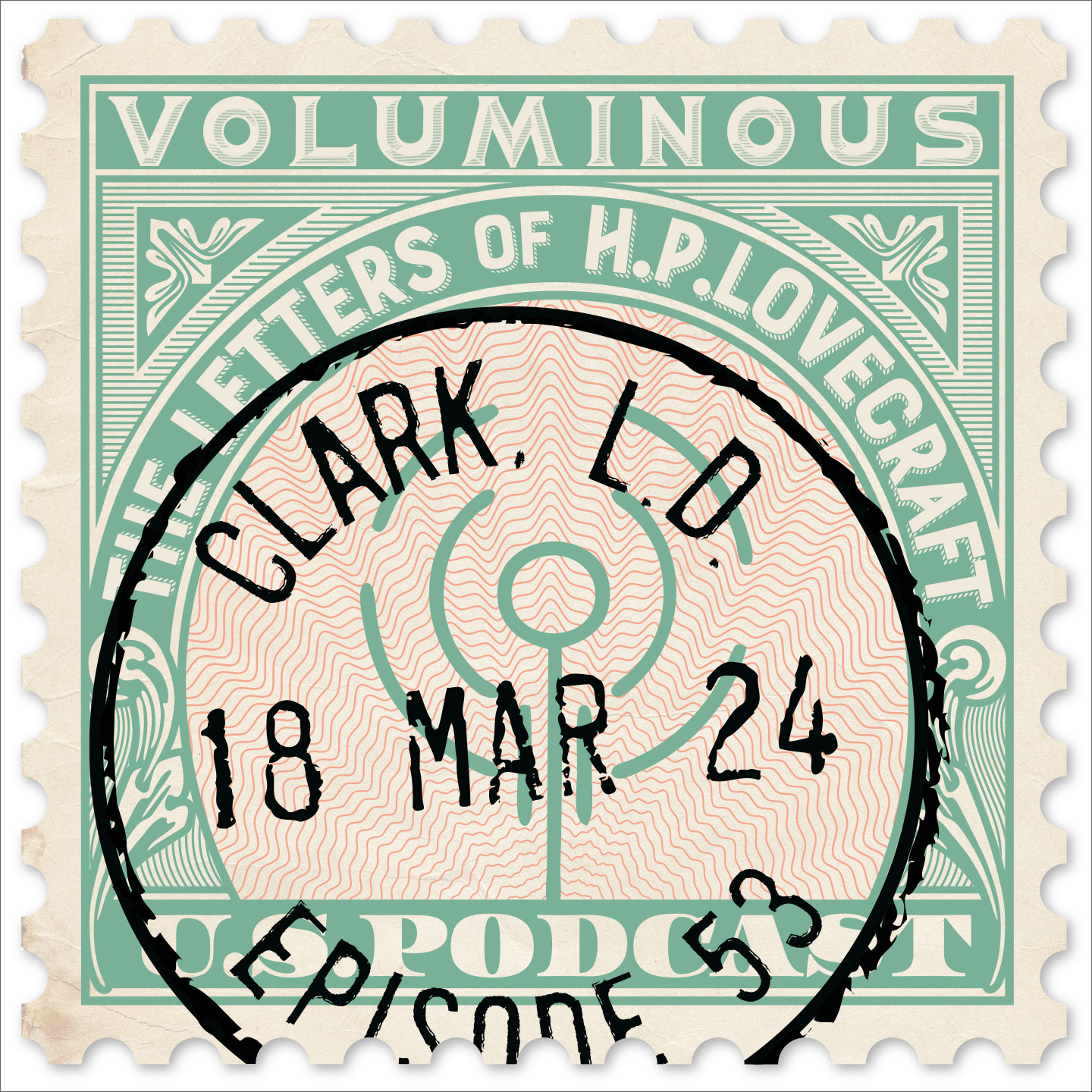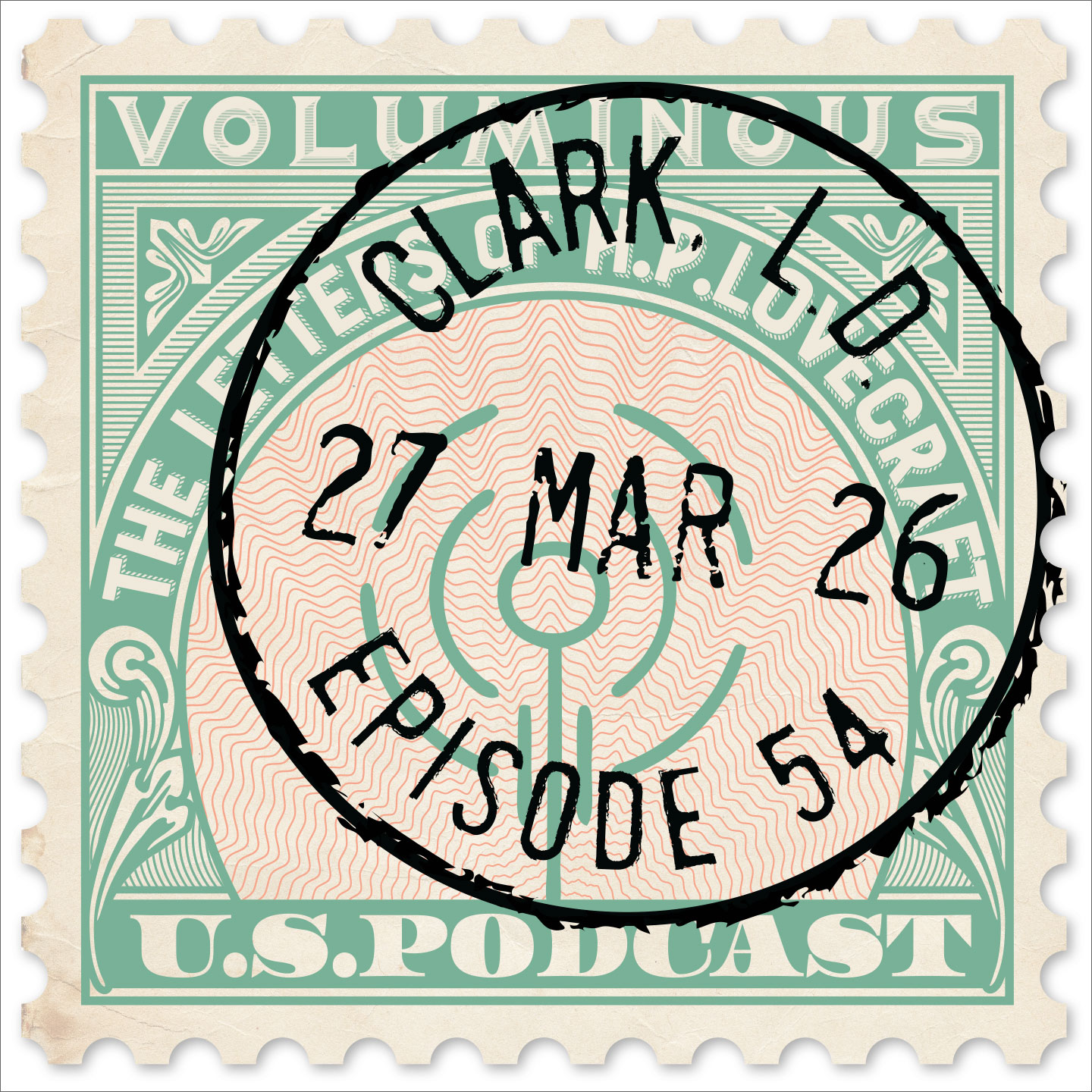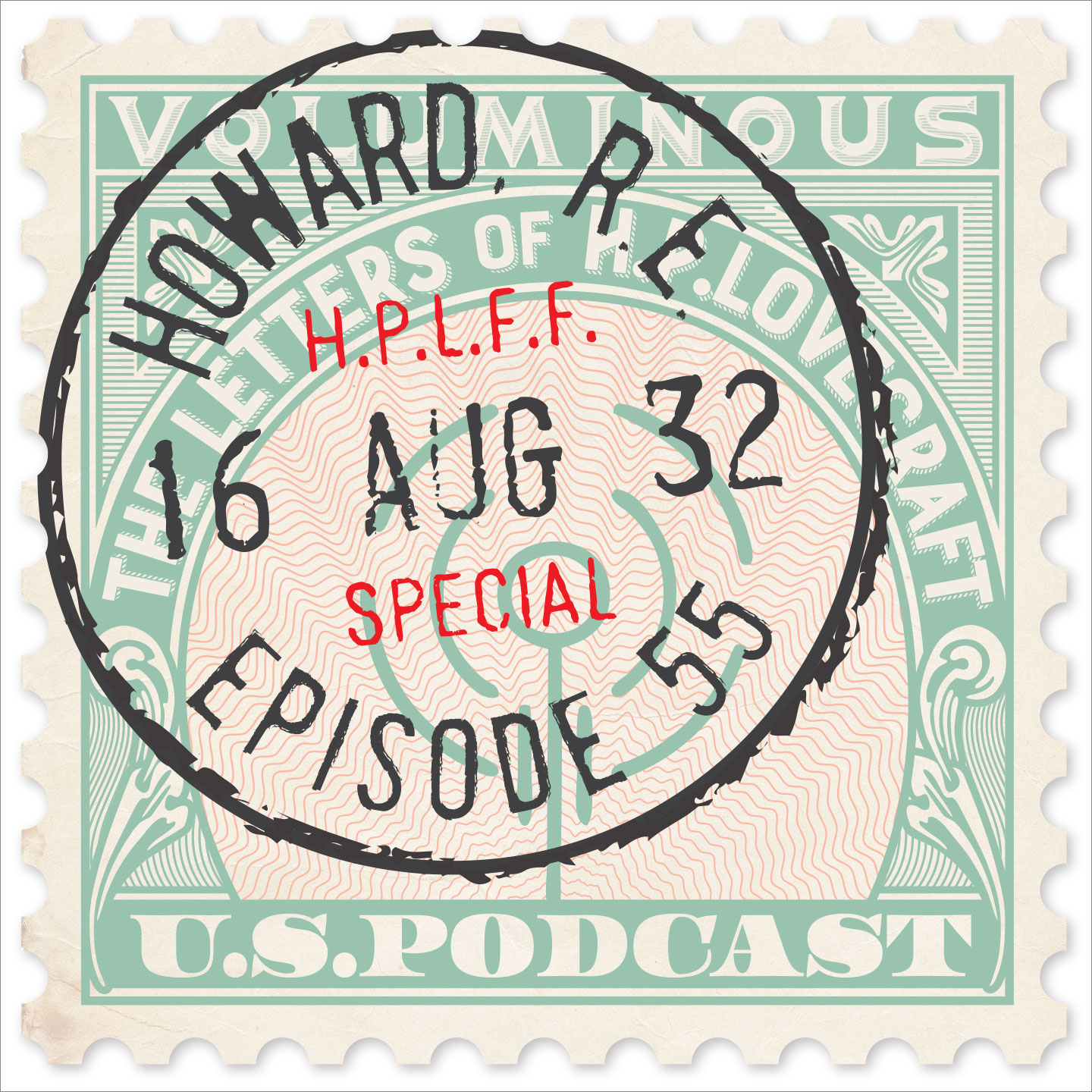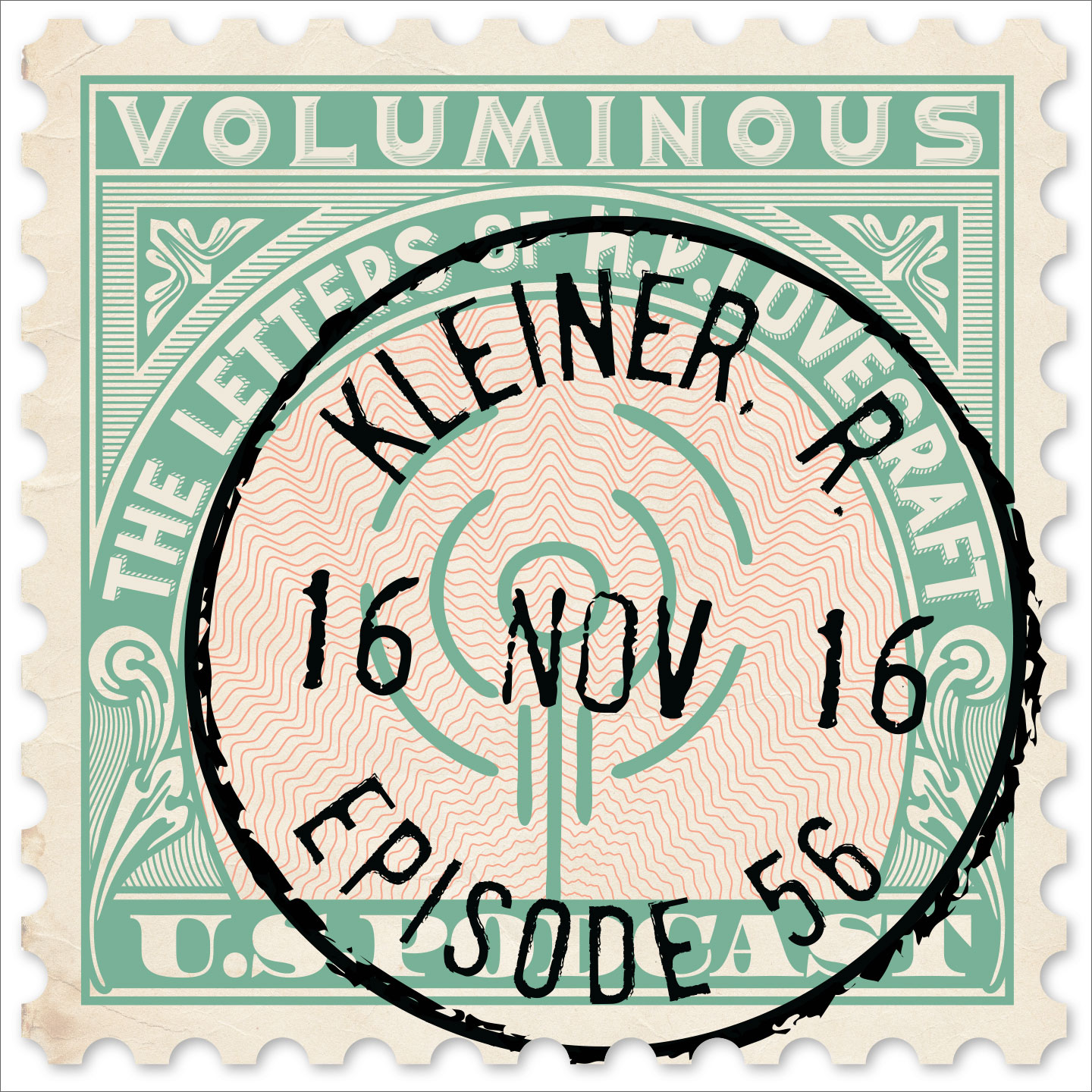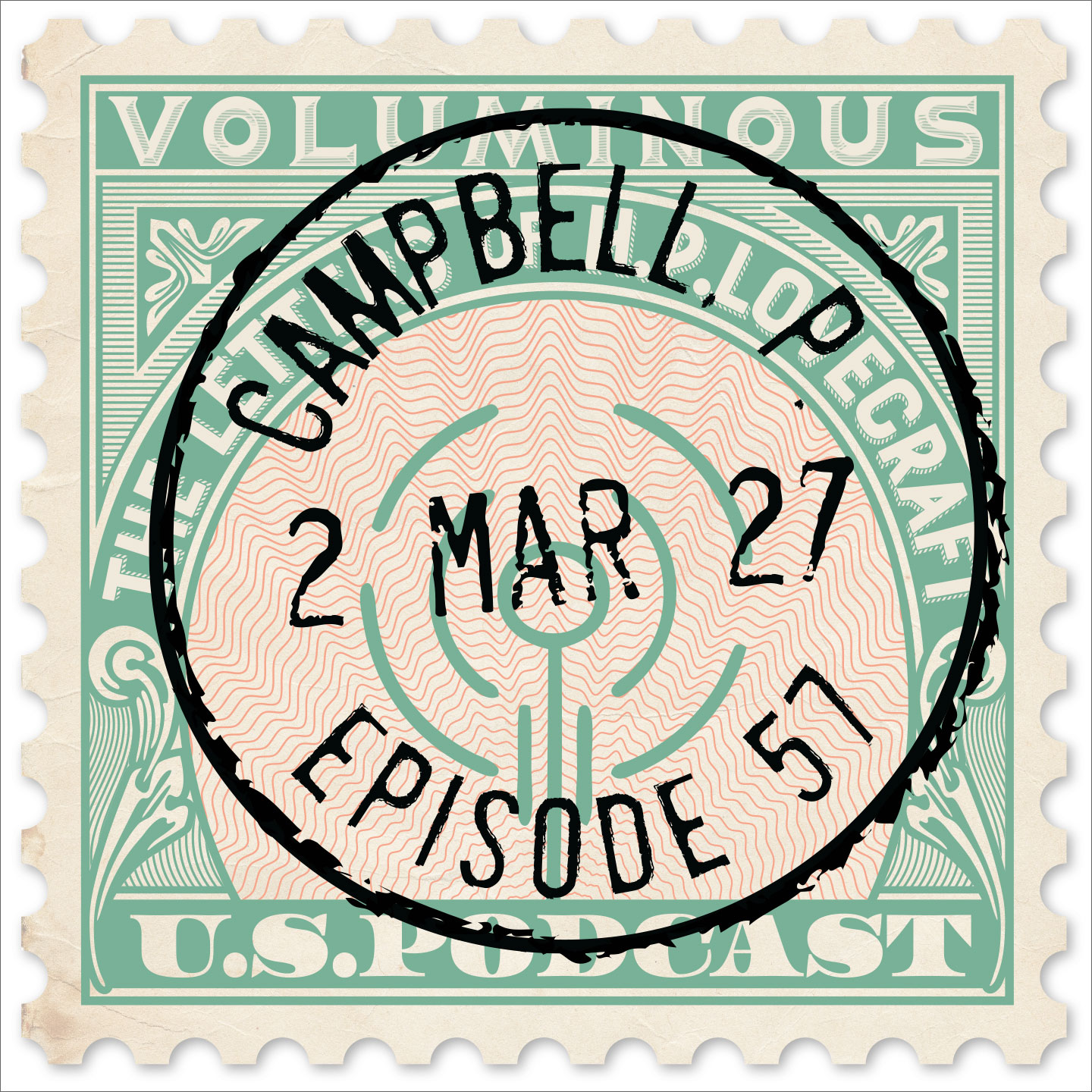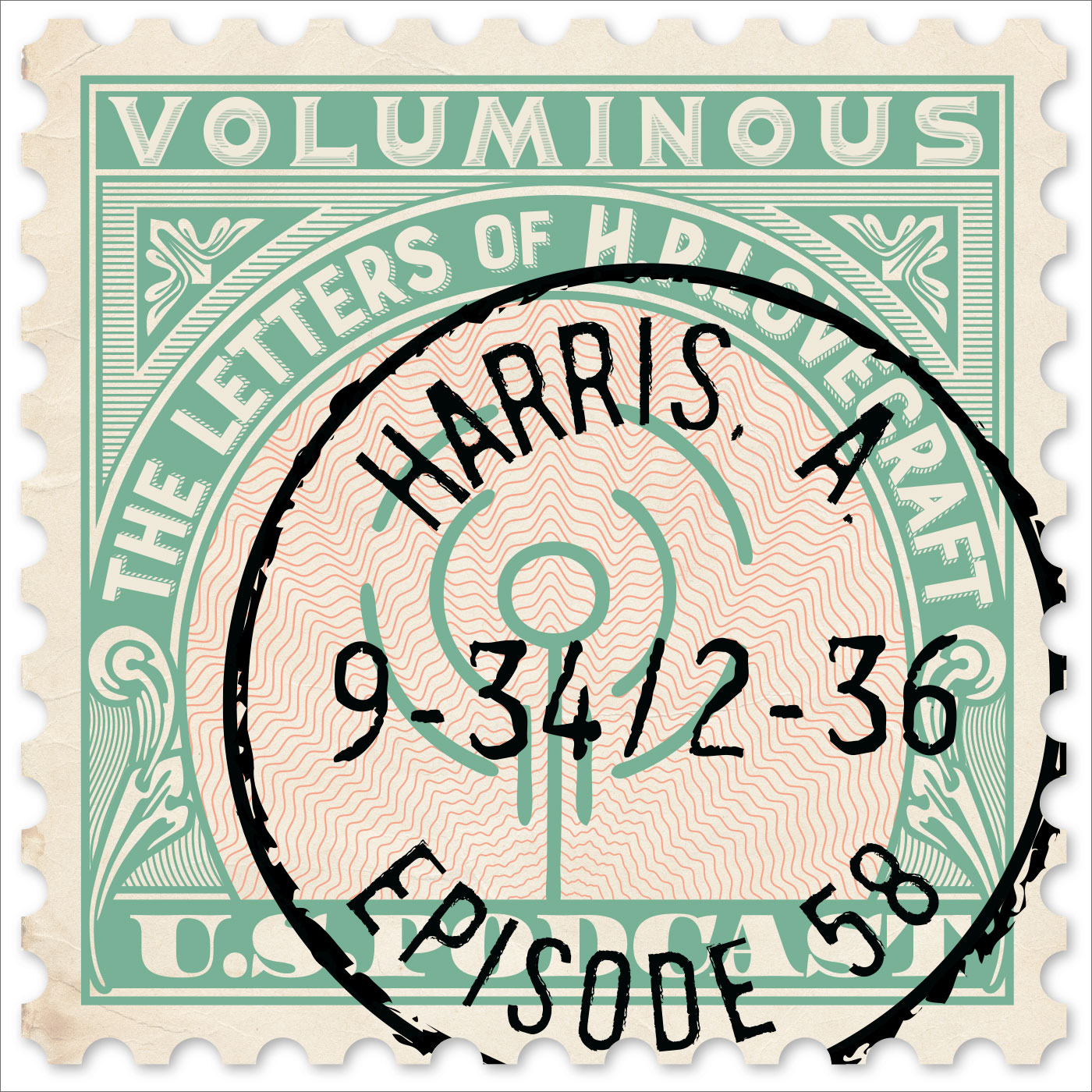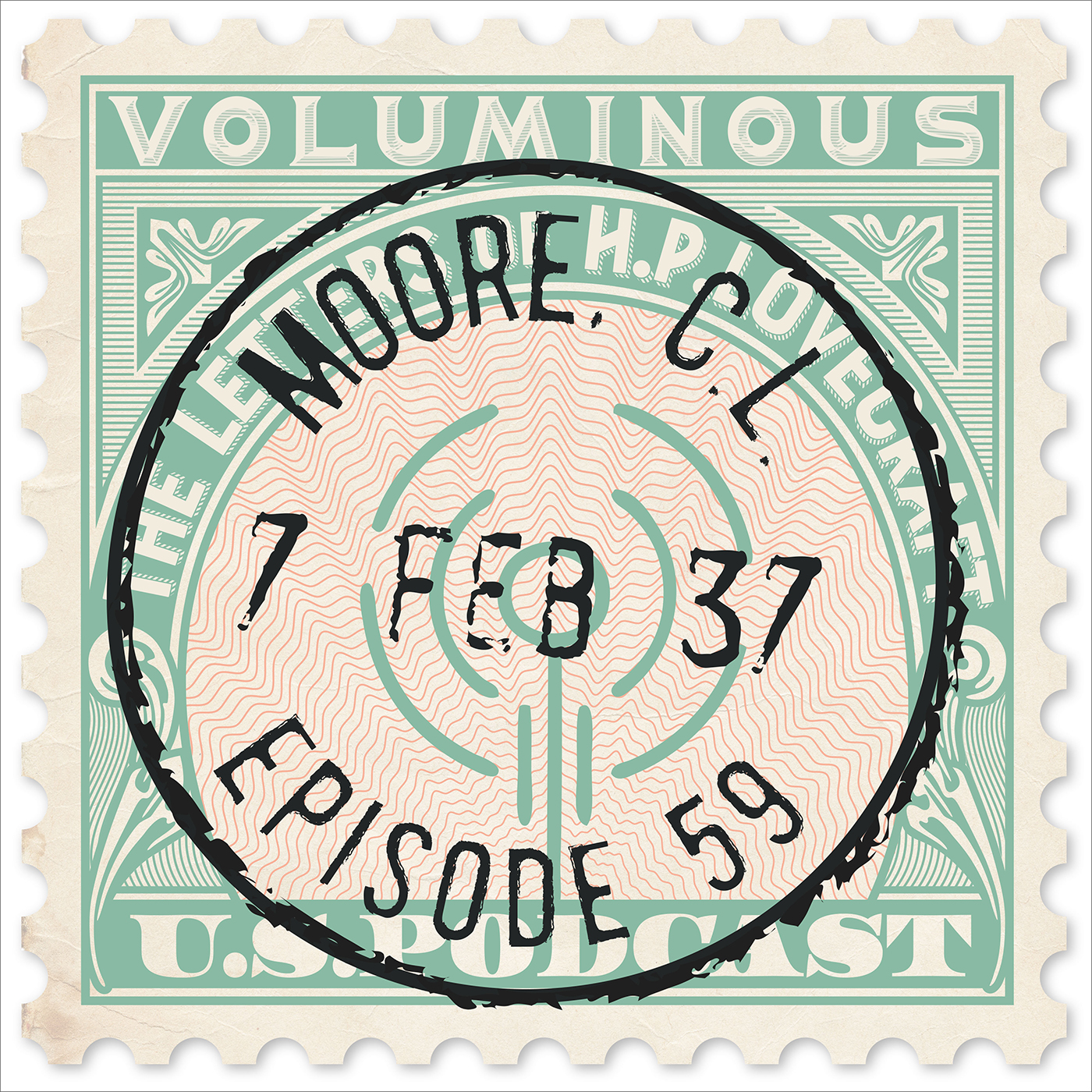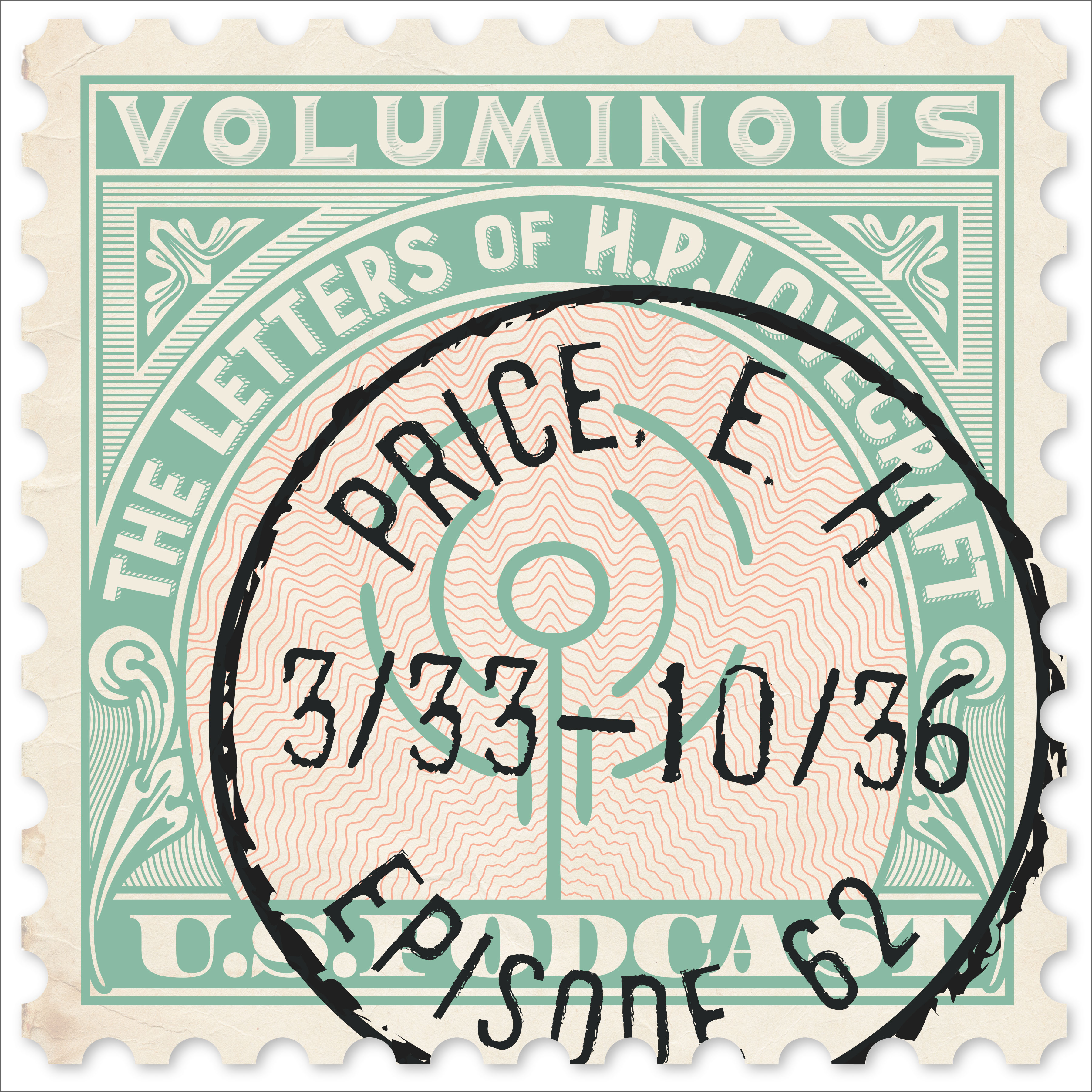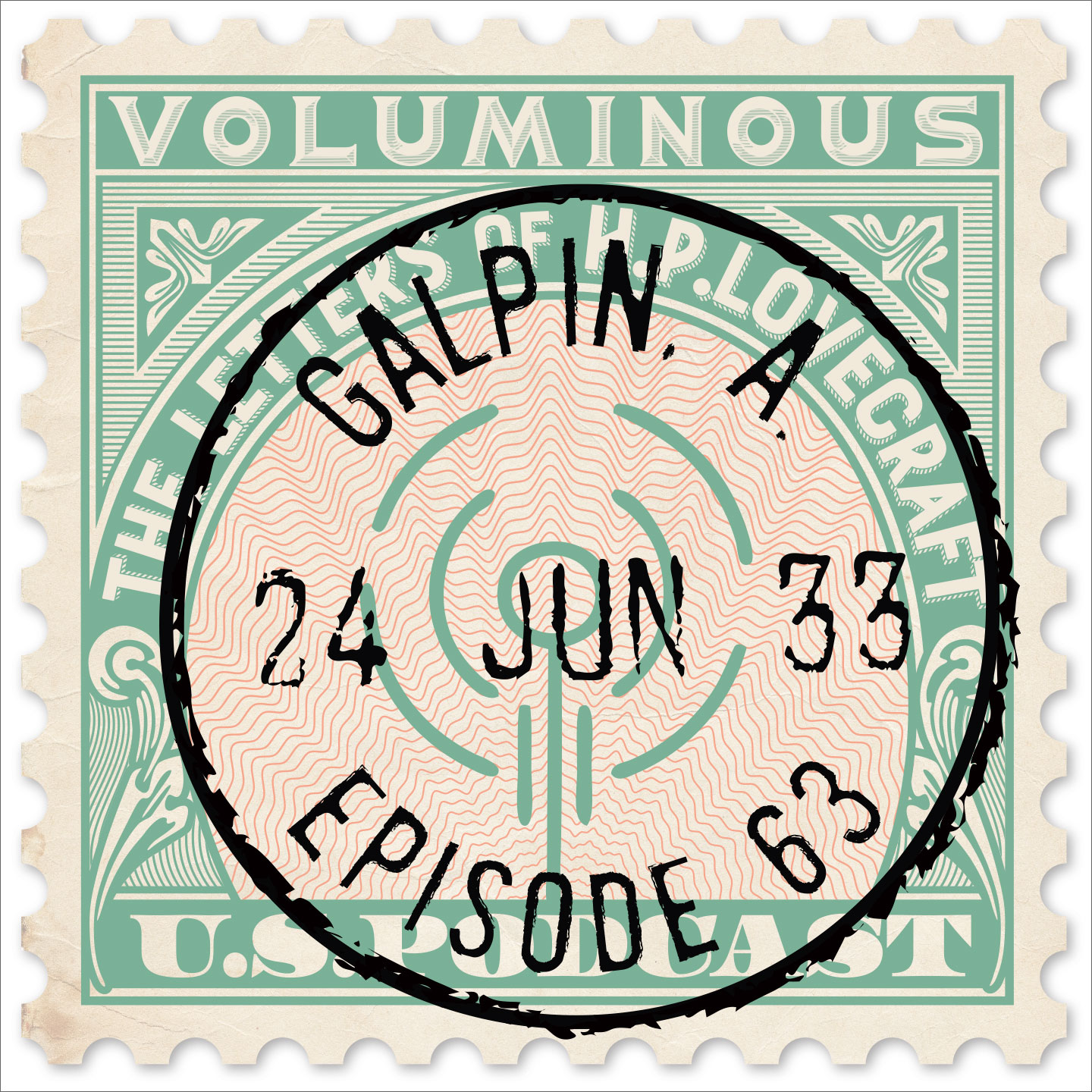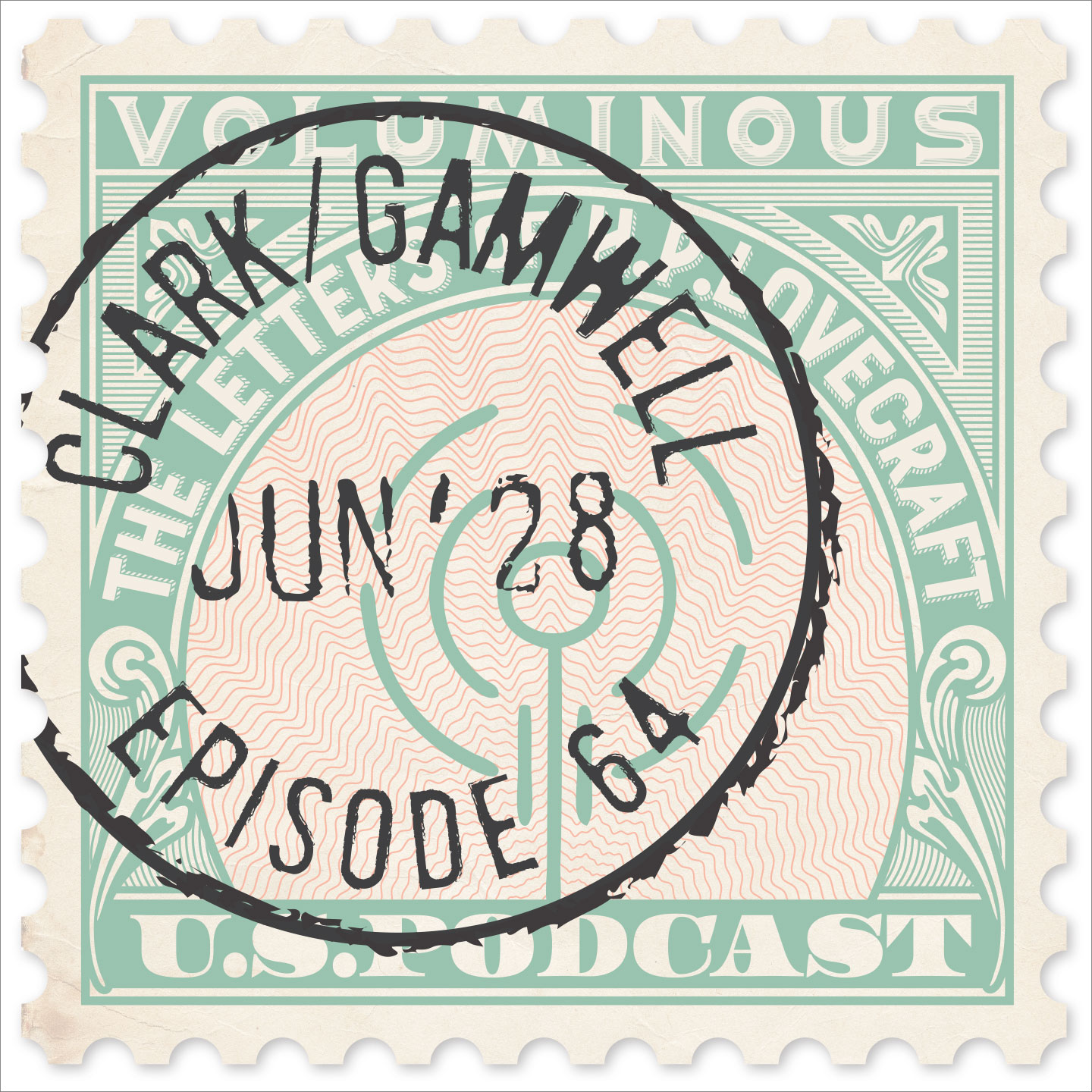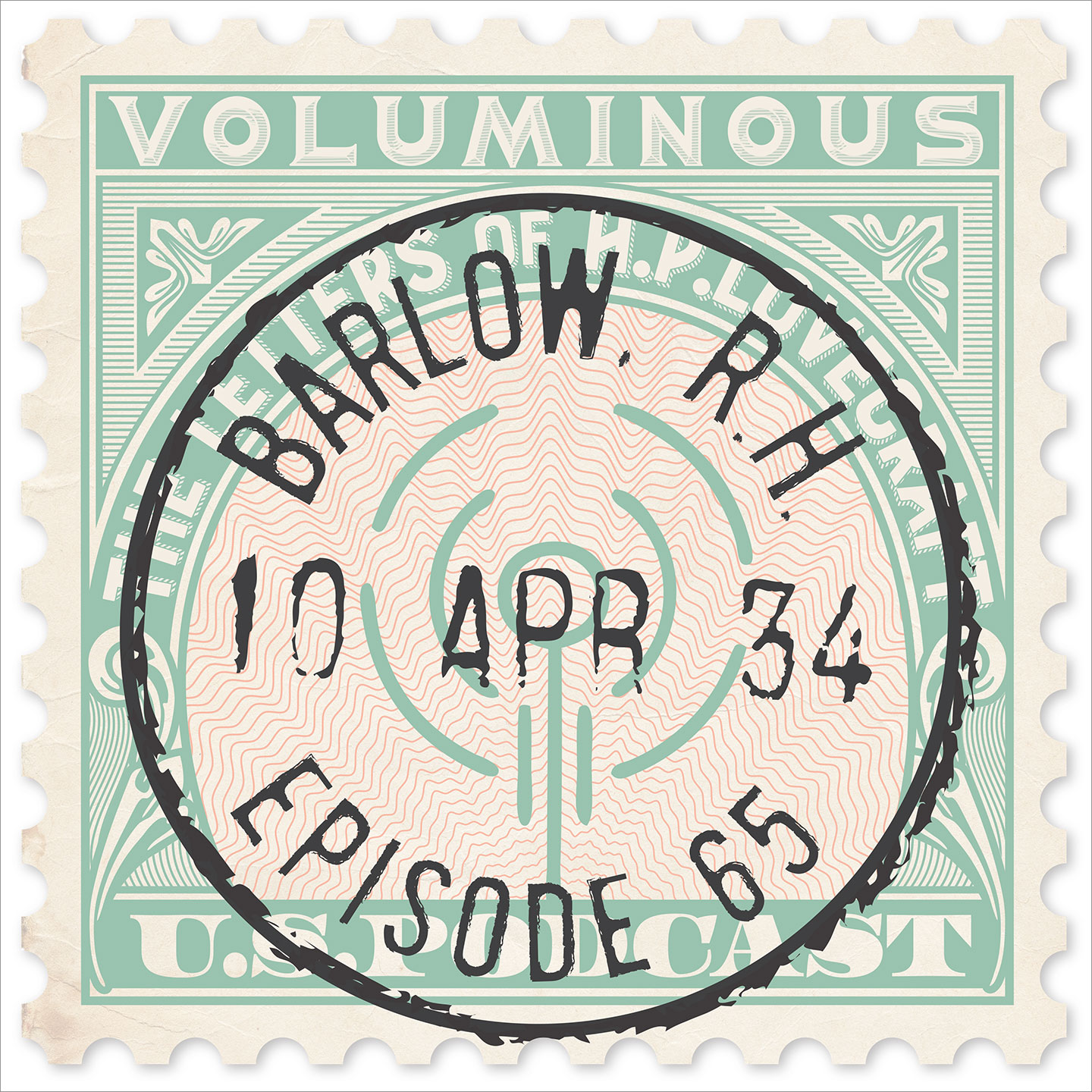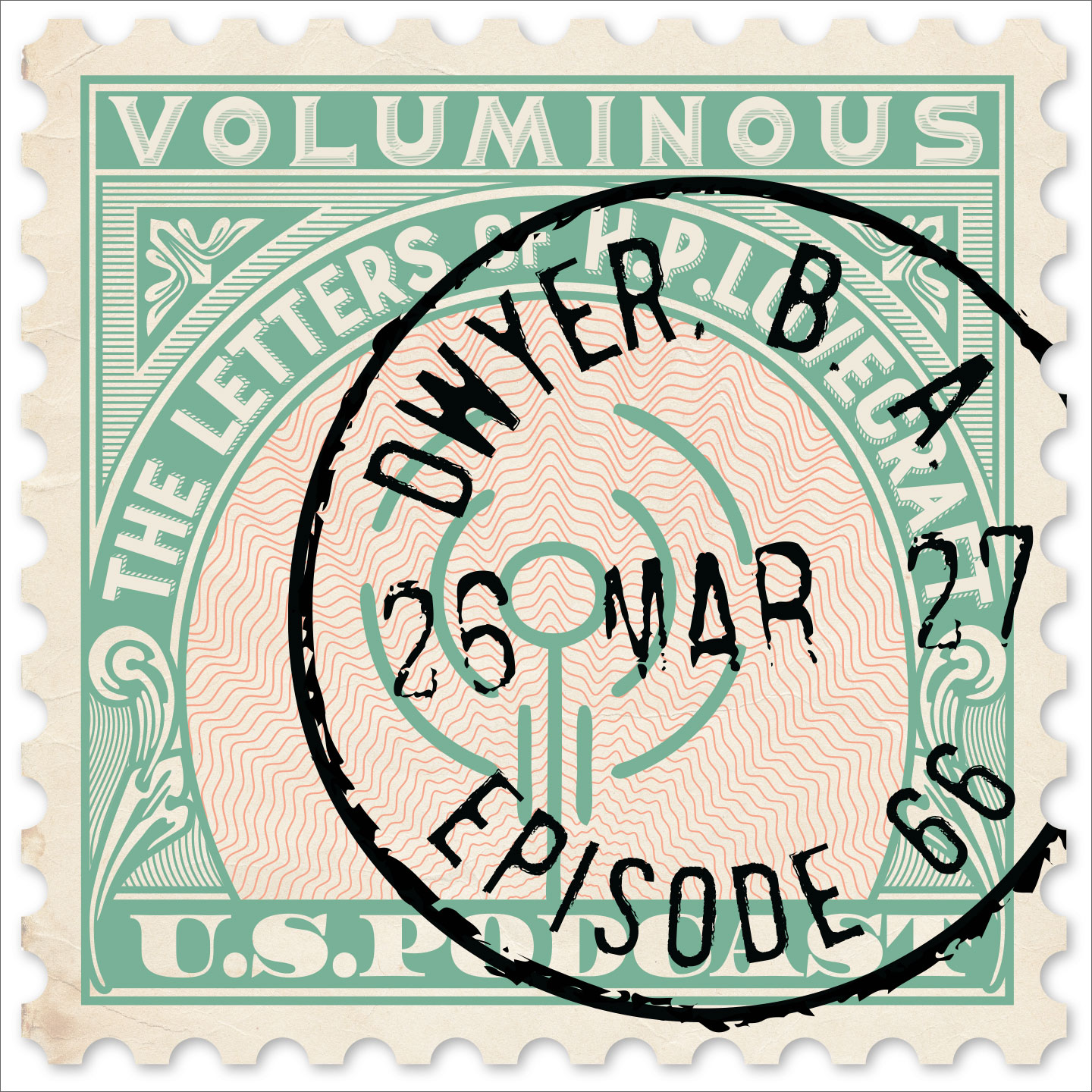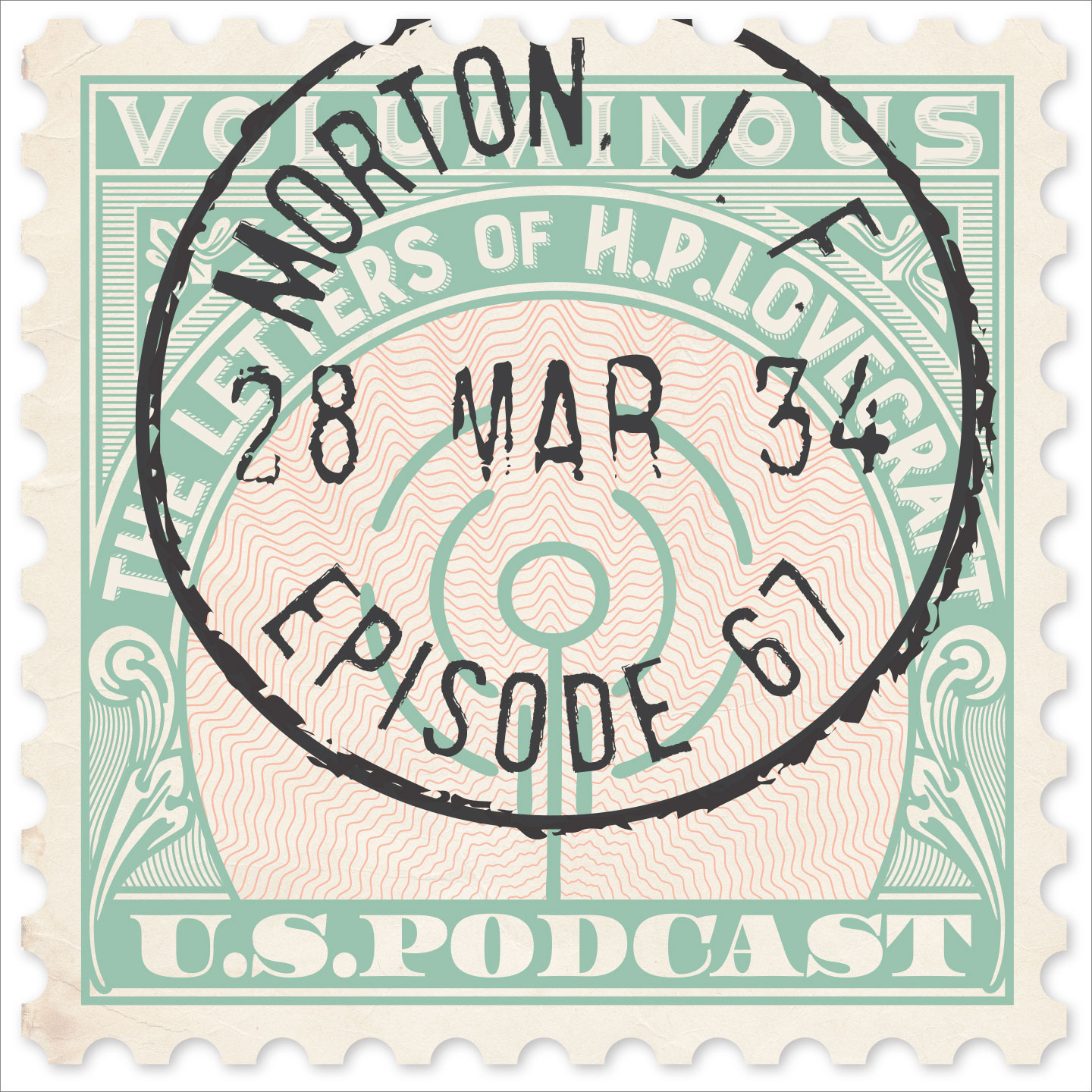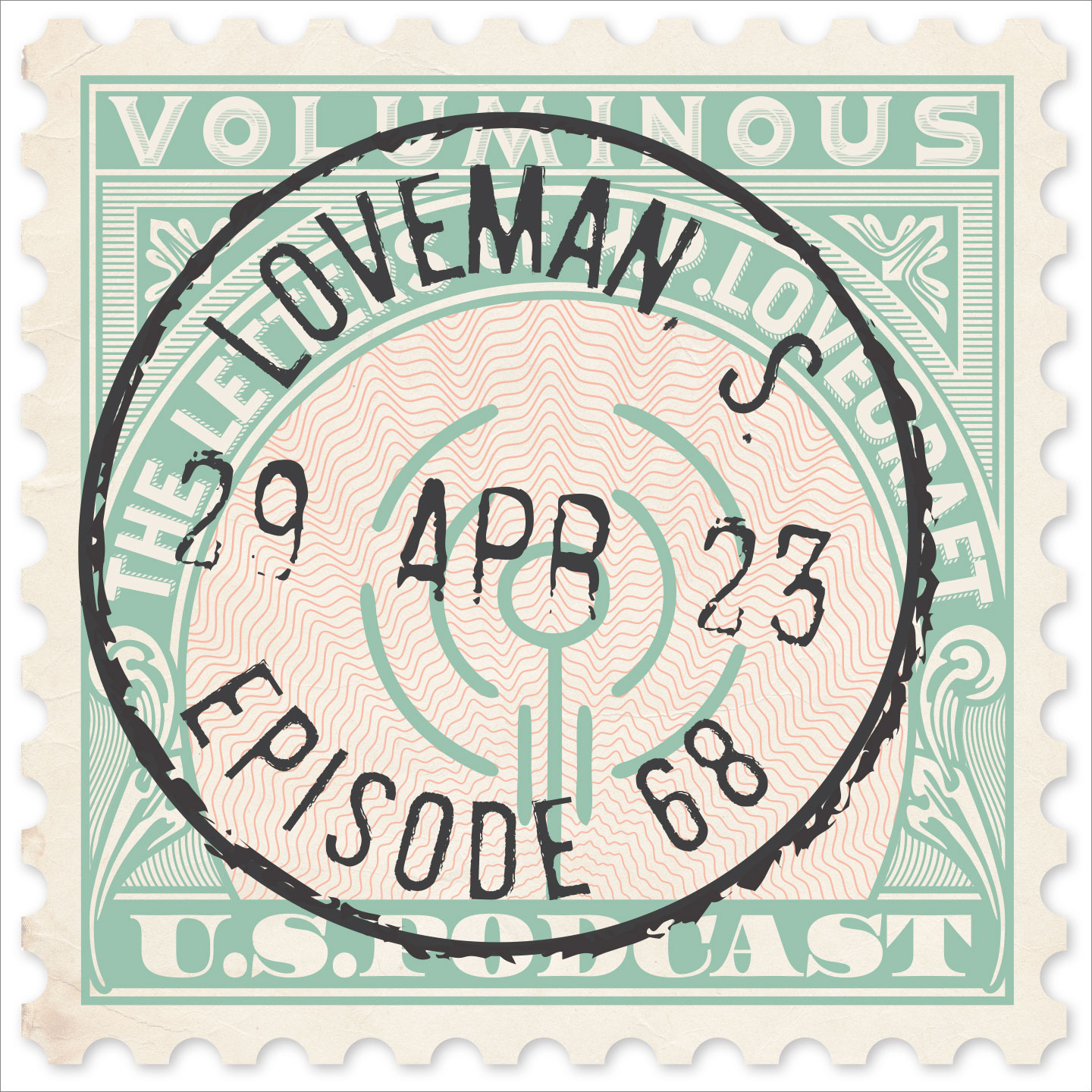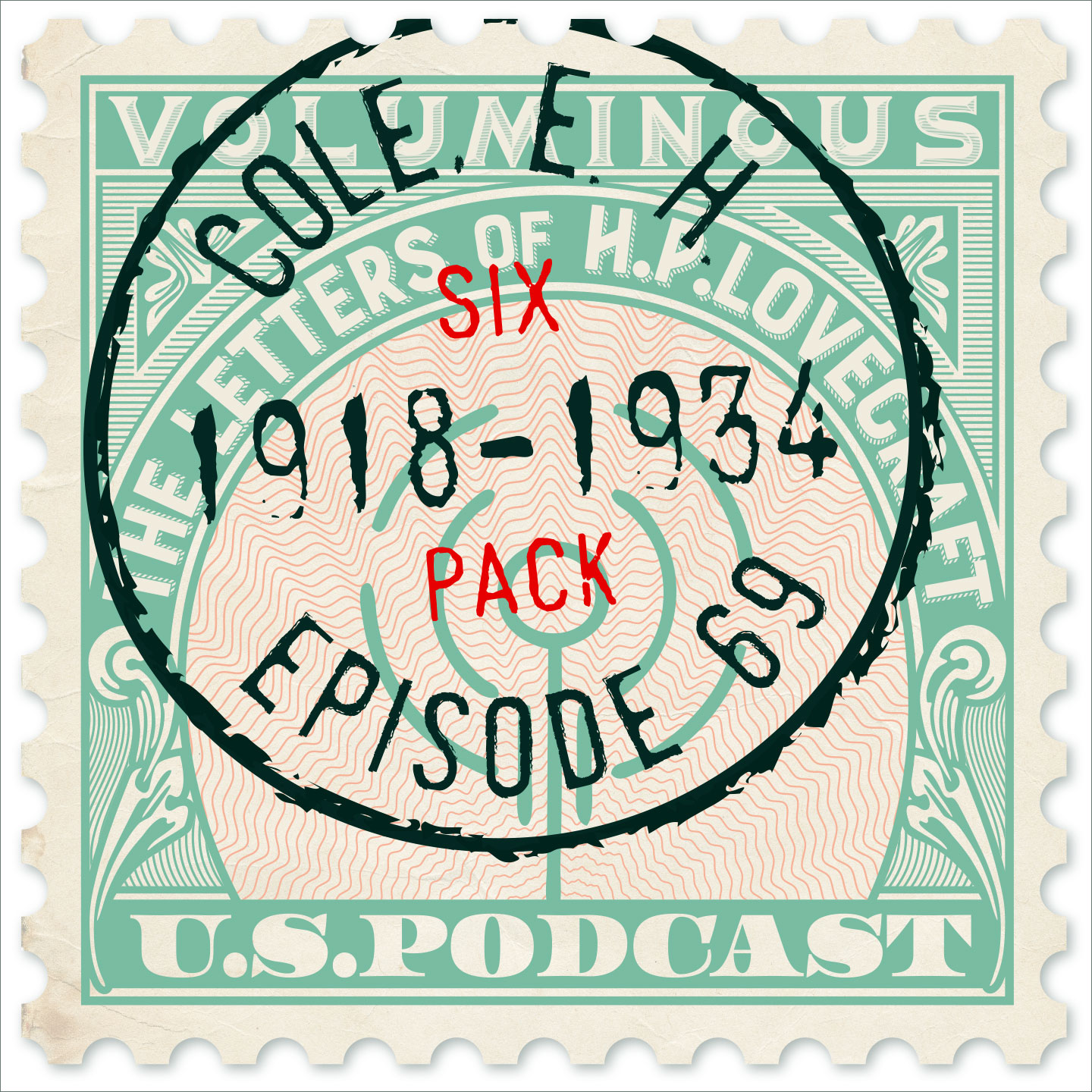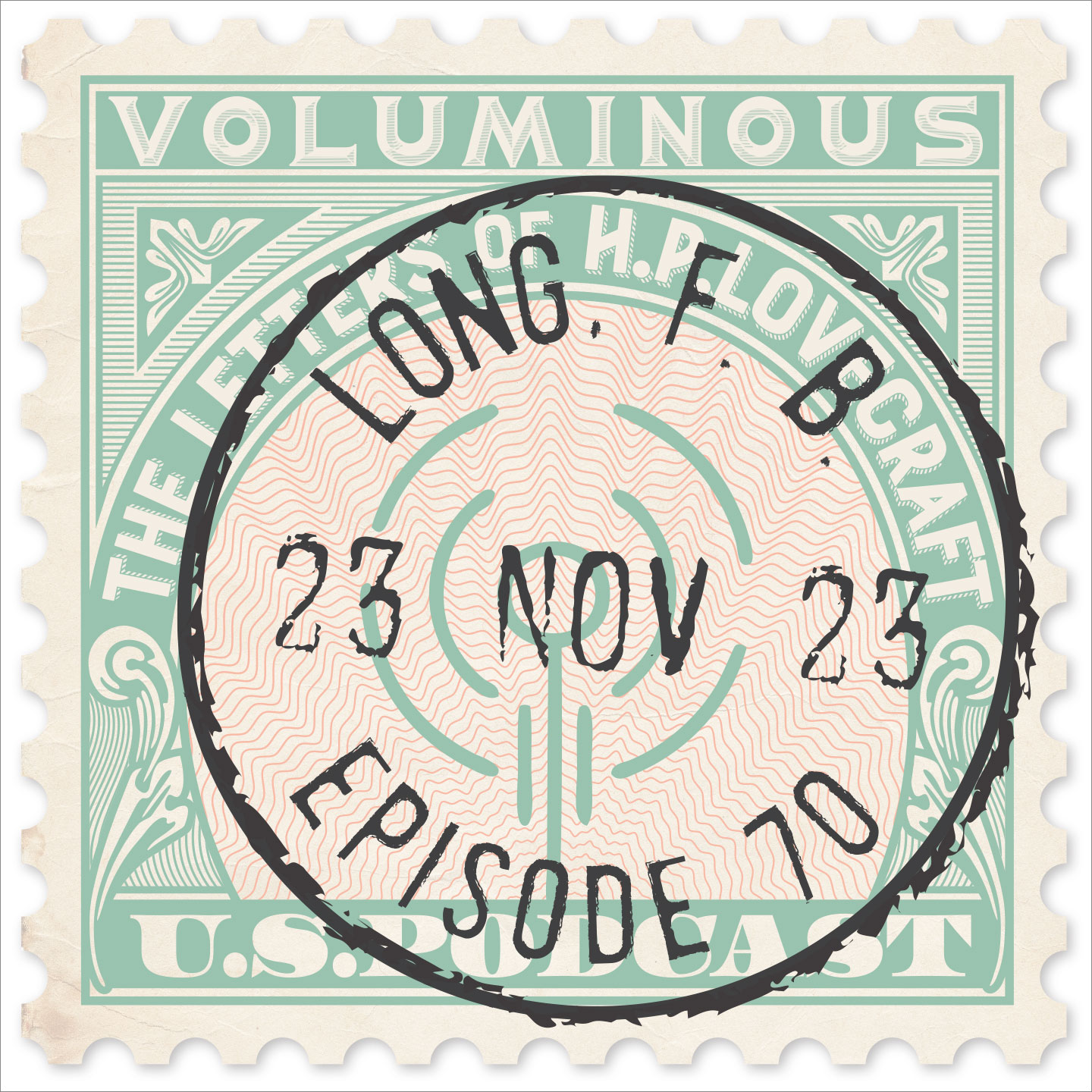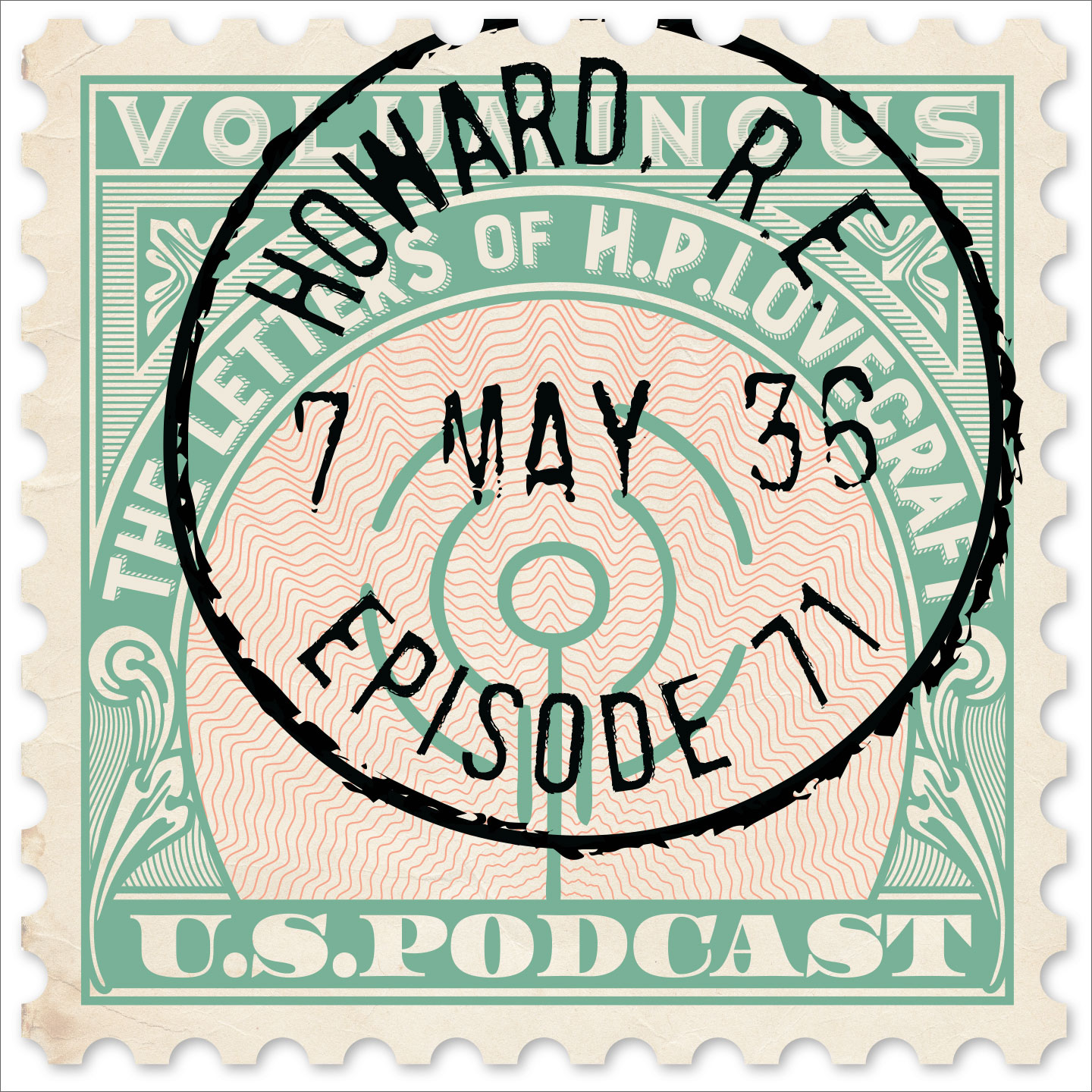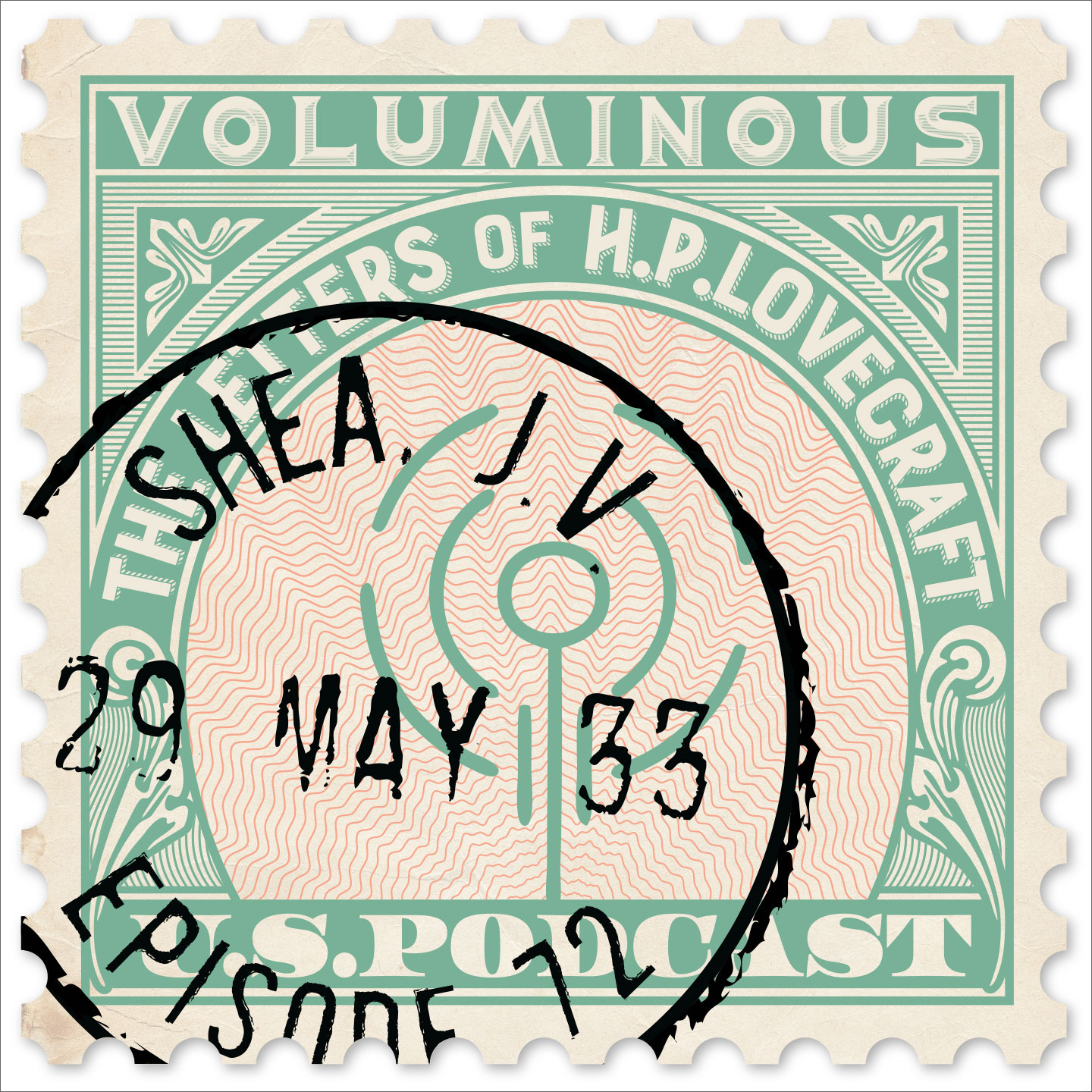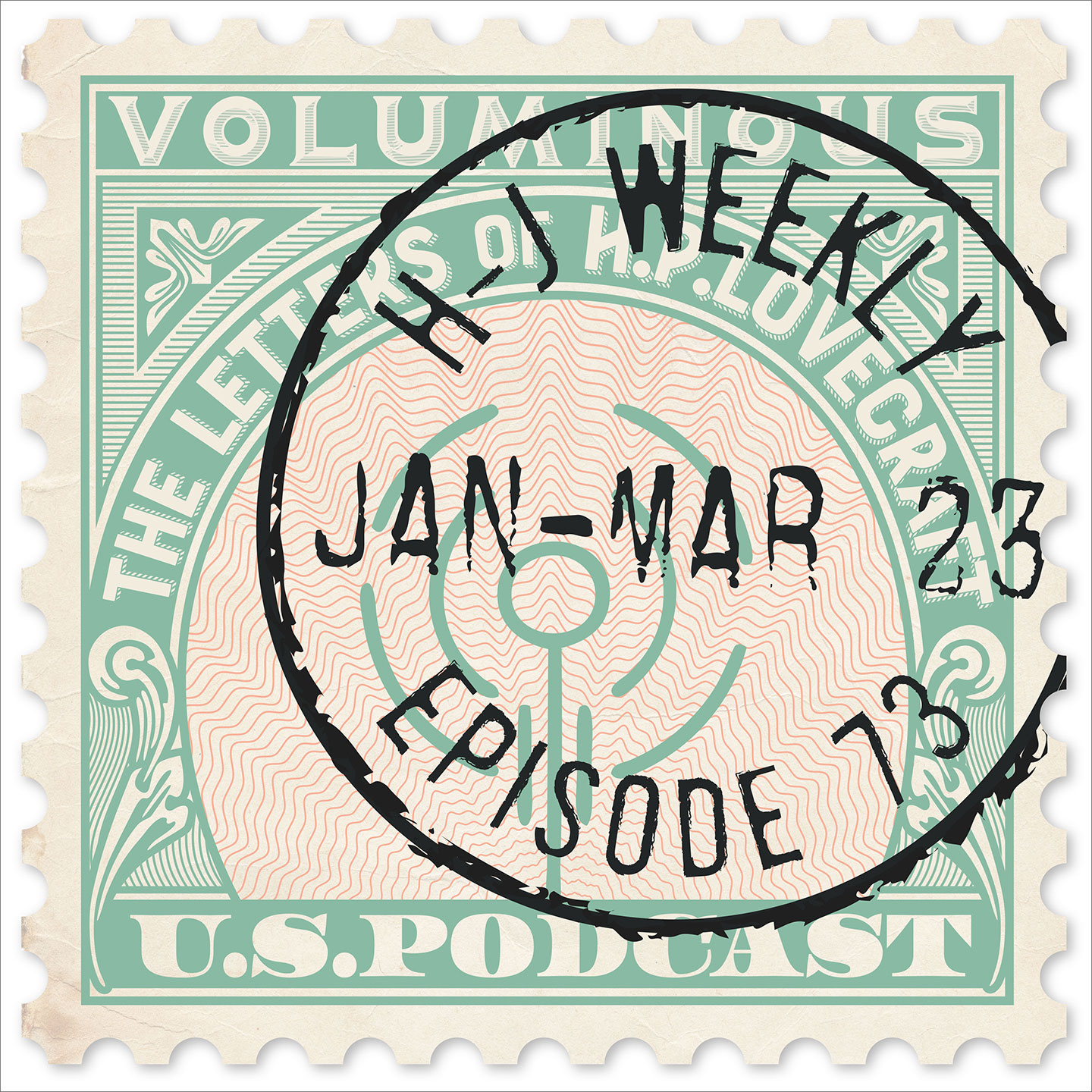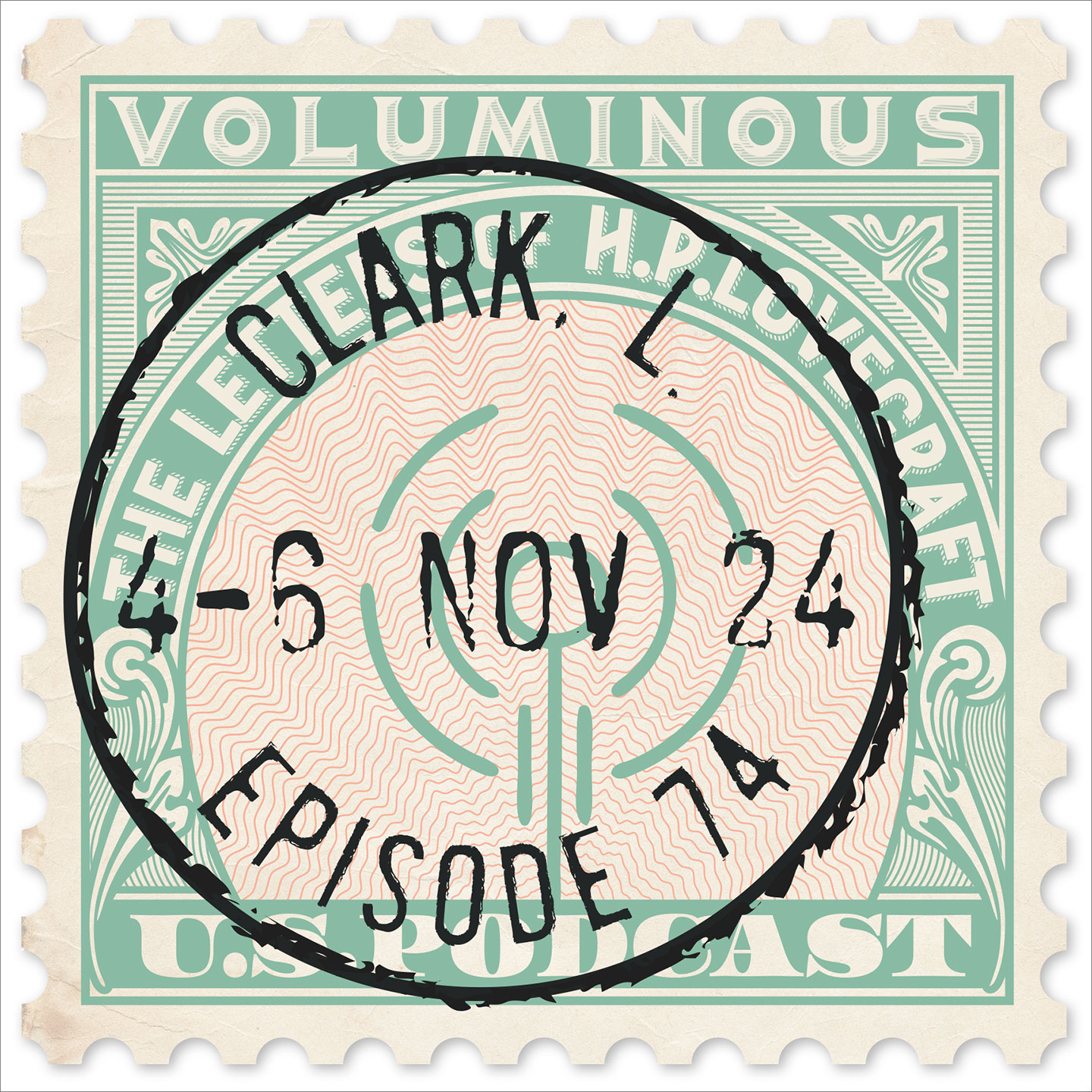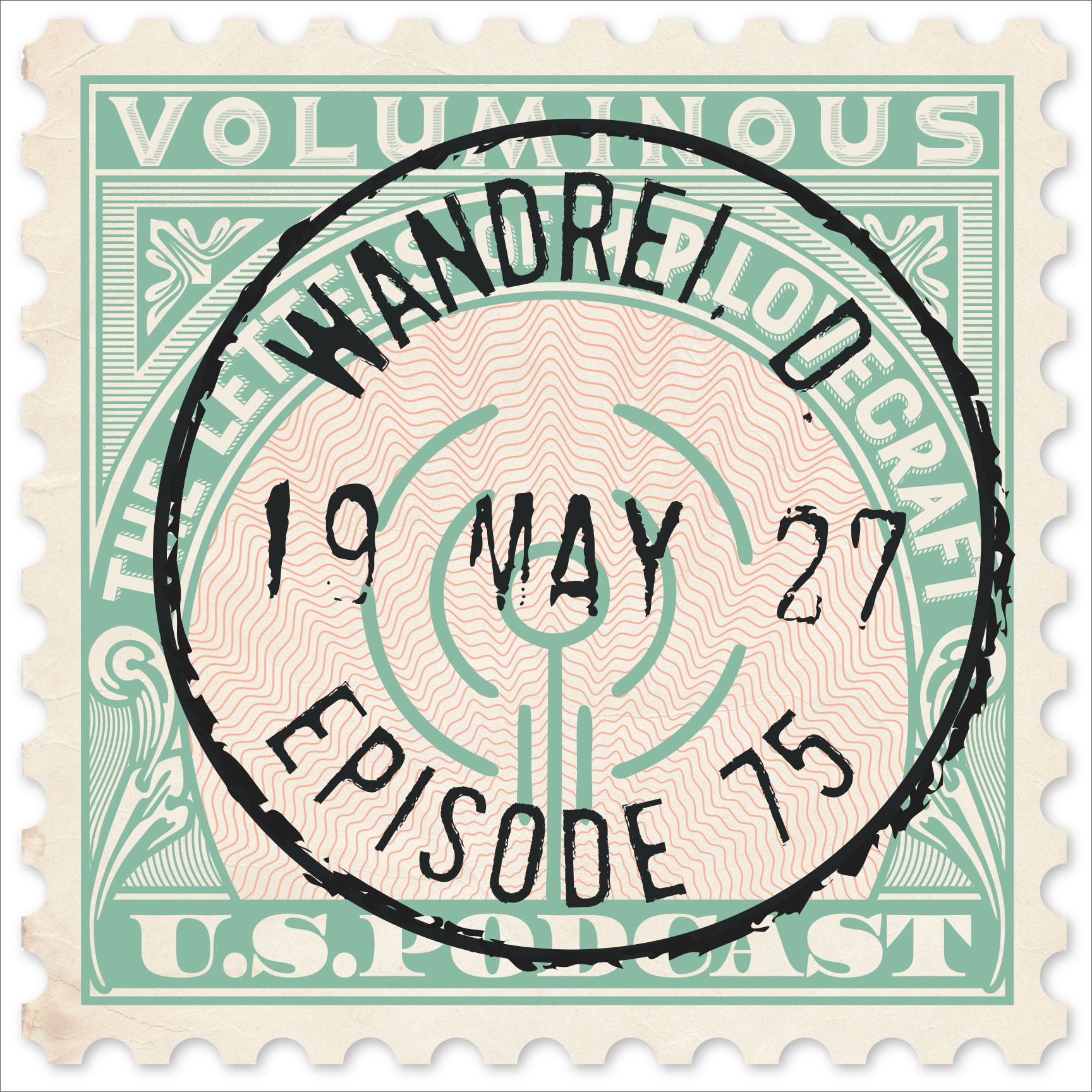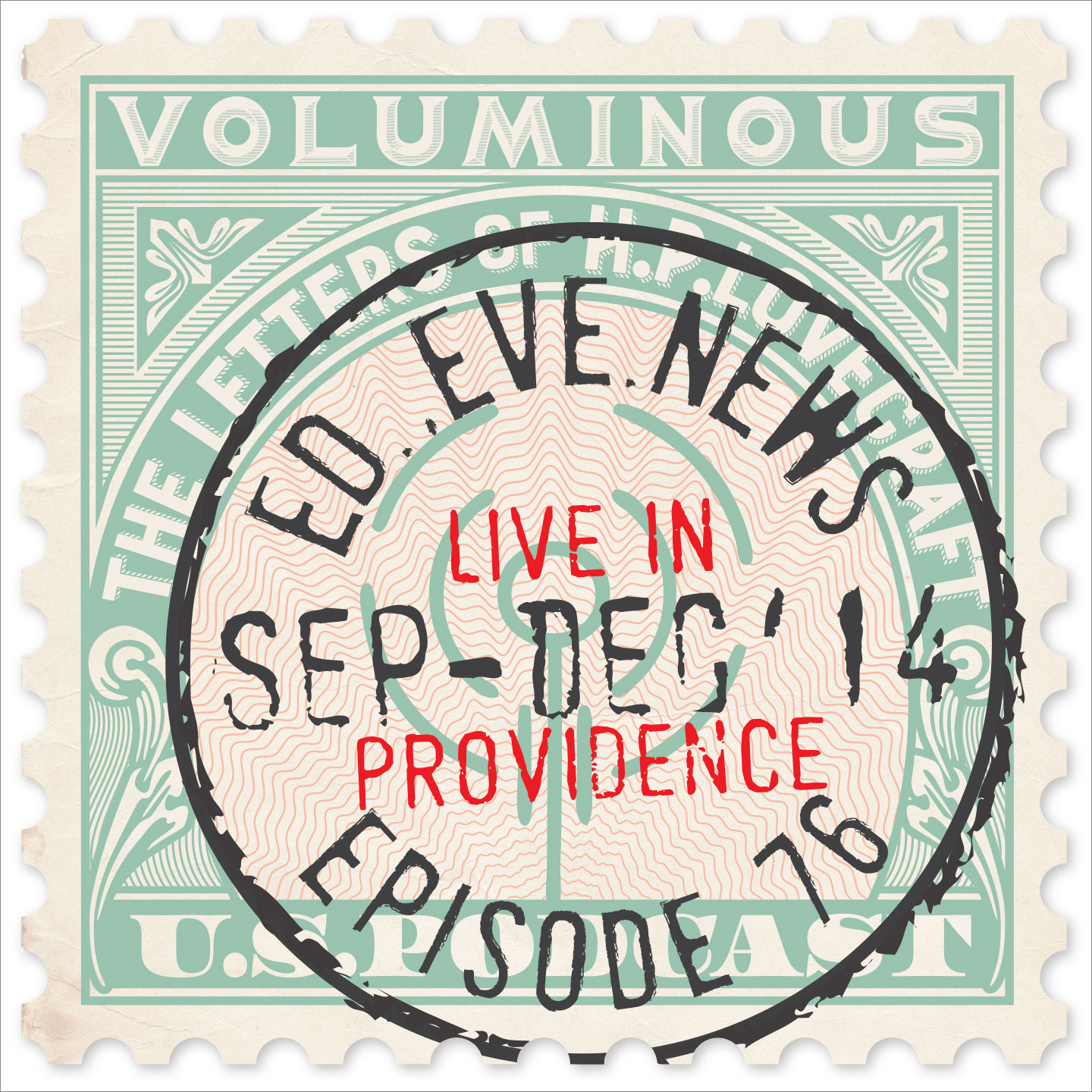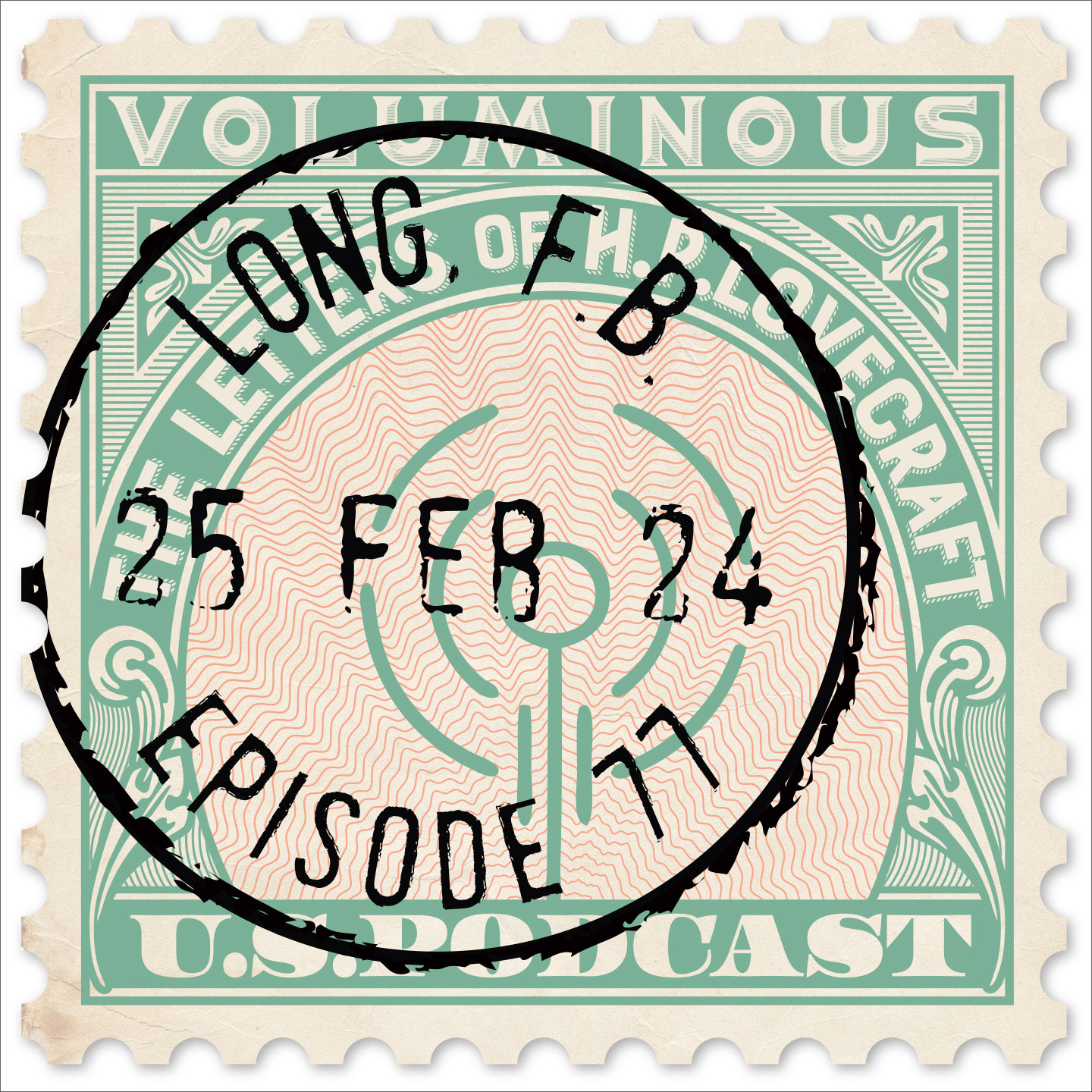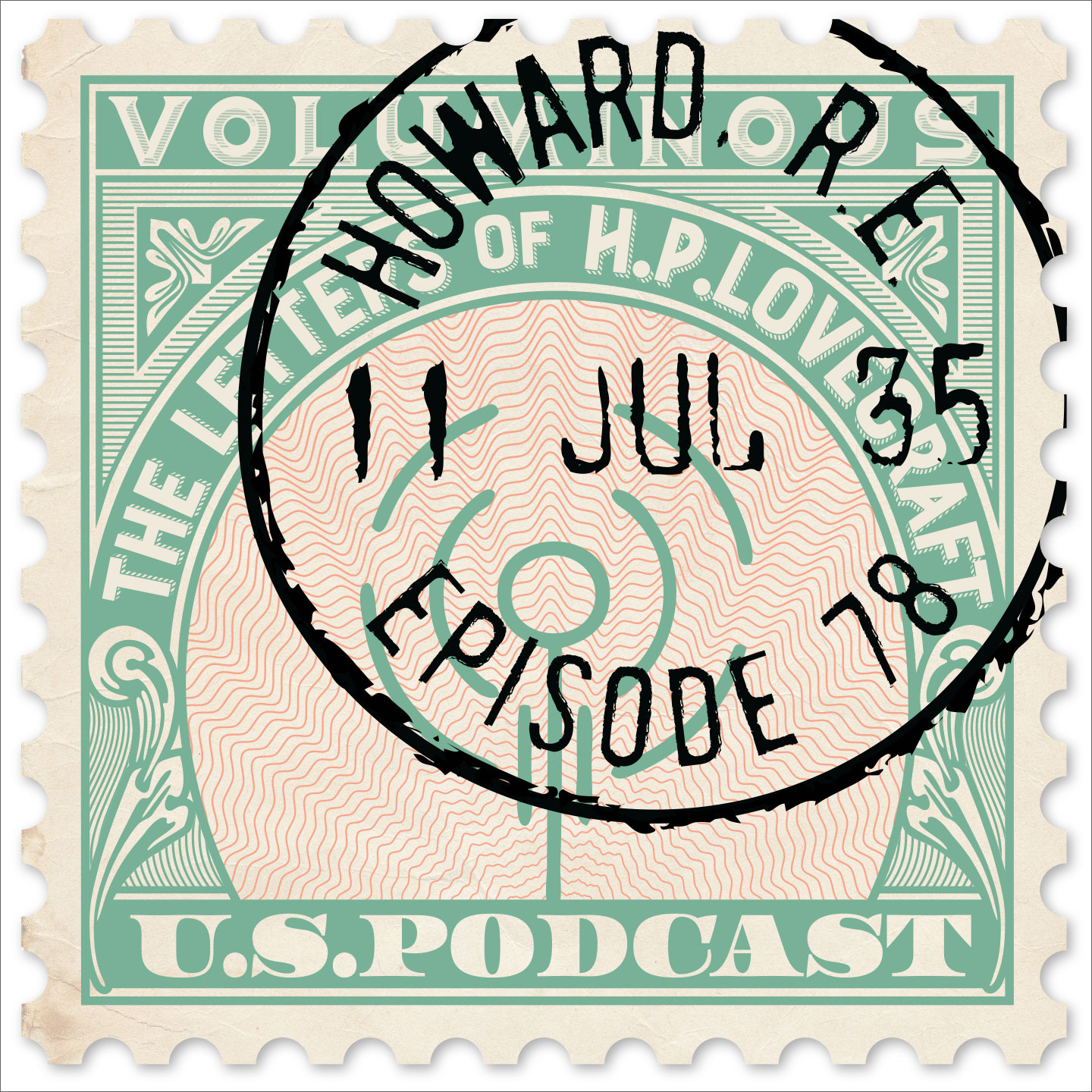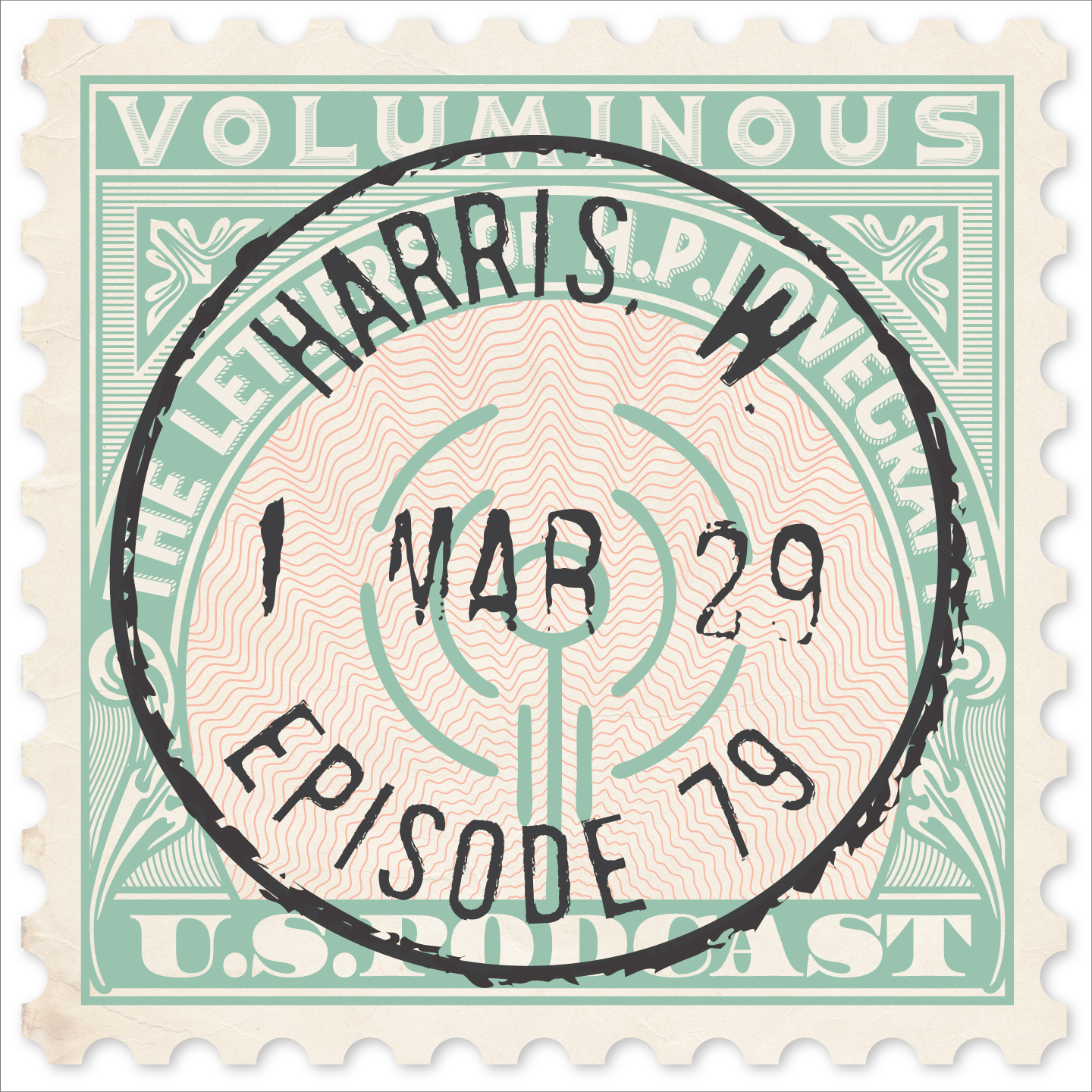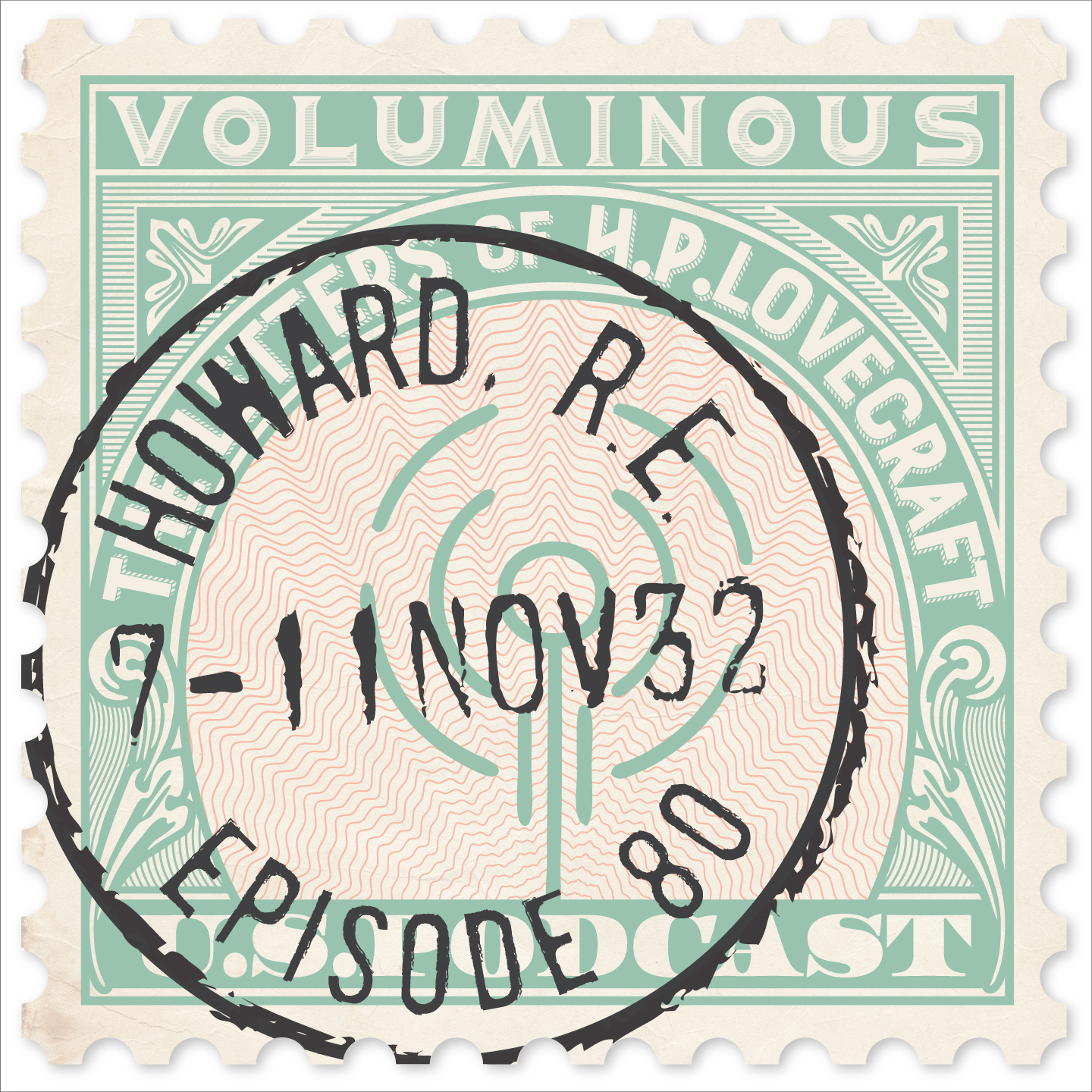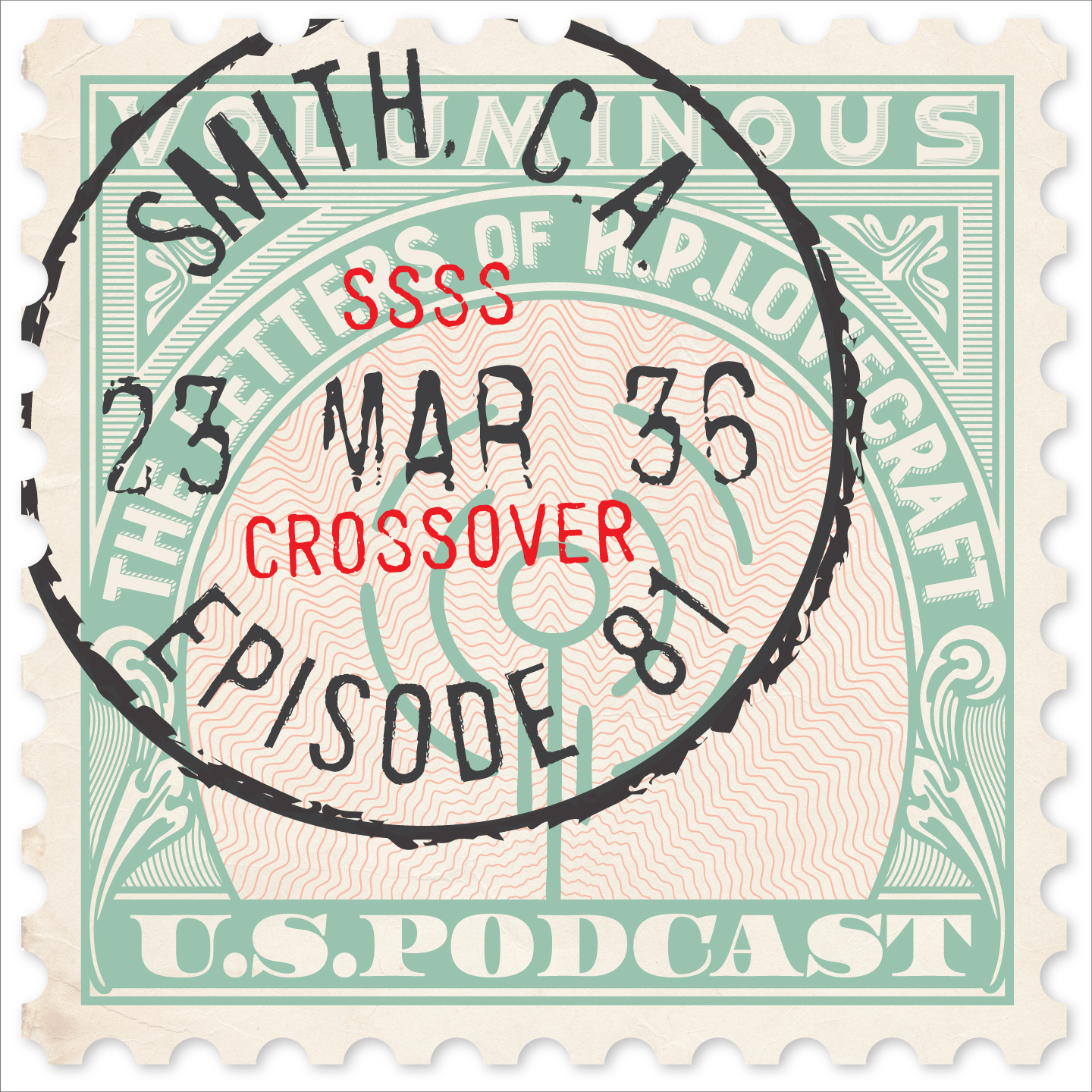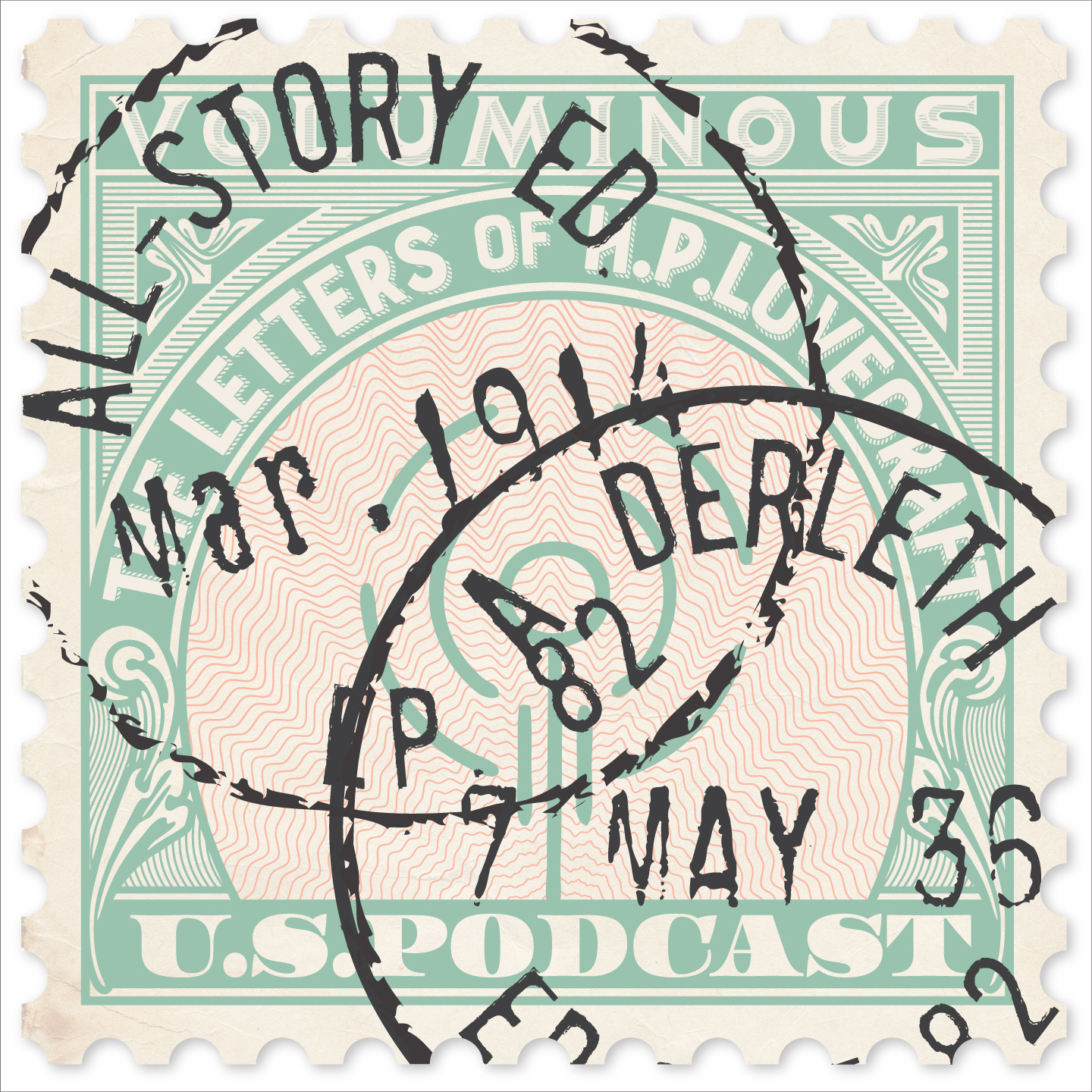
In addition to his classics of horror fiction, it is estimated that Lovecraft wrote 100,000 letters — or roughly 15 every day of his adult life — ranging from one-page diaries to seventy-page diatribes. Perhaps 20,000 of those letters have survived, in the hands of private collectors and at the John Hay Library in Providence.
In each episode of this podcast, we'll read one of these letters (or part of it) and then discuss it. In his letters HPL reveals an amazing breadth of knowledge of philosophy, science, history, literature, art and many other subjects, and forcefully asserts some highly considered opinions (some of which can be upsetting).
And of course his letters offer a fascinating window into his personal life and times. Although we've been working with Lovecraftian material for over 30 years, we still find interesting new things in his letters, and while we don't claim to be experts we look forward to sharing them with a wider audience.
Subscribe via iTunes, Stitcher or wherever you get podcasts! Or listen right here!
RSS Feed- Episode 80
- Posted February 5, 2023
Barbaric
In this meaty letter to Robert E. Howard written between November 7 and November 11, 1932, our special guest Lovecraft expert Martin Andersson joins us to talk about food, the virtues of slavery, rampant police misconduct, and literature. CONTENT WARNING: This letter contains a few instances of the word we bleep.
Music by Troy Sterling Nies. Thanks to Martin Andersson for choosing this letter, and to Hippocampus Press for their two-volume work A Means to Freedom. Thanks also to Jim Bardwell of the Gladewater Mirror.
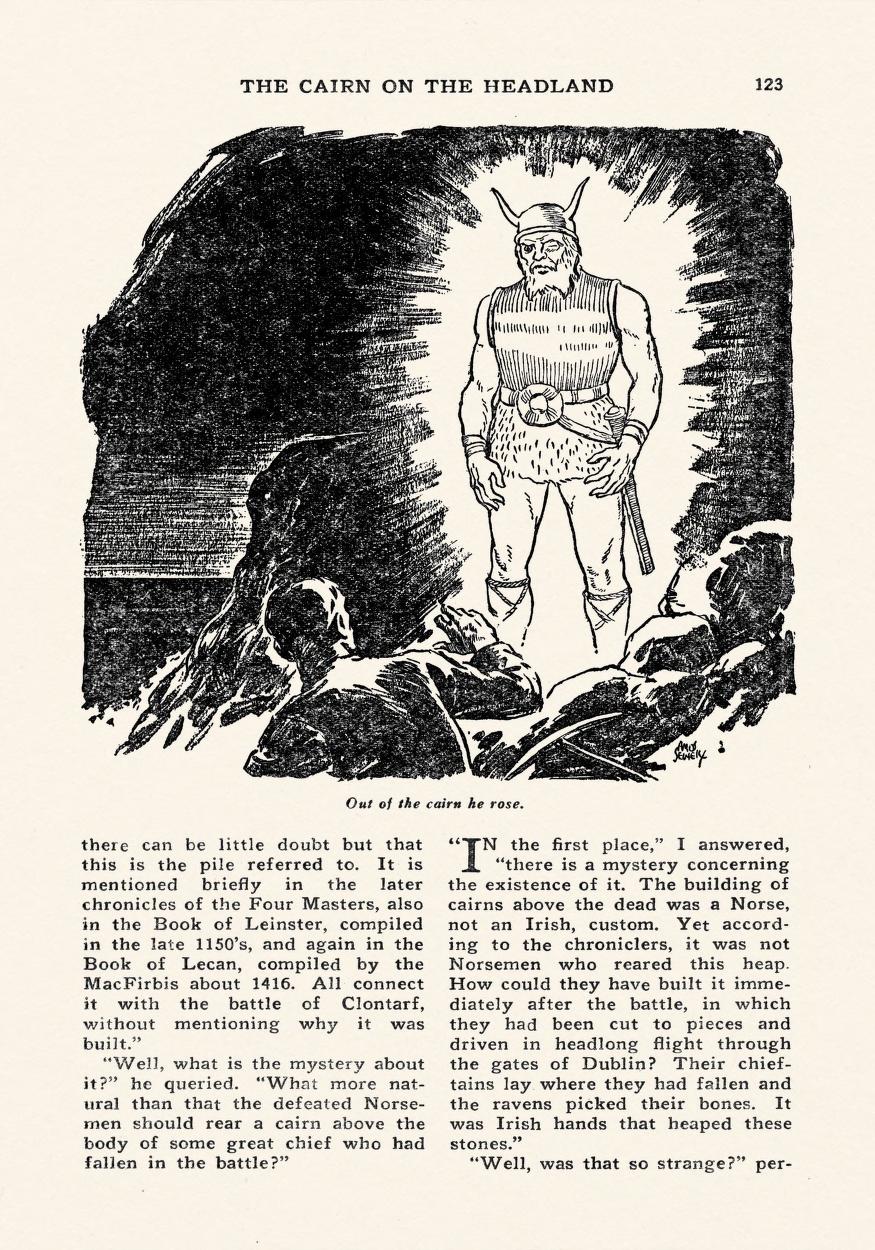
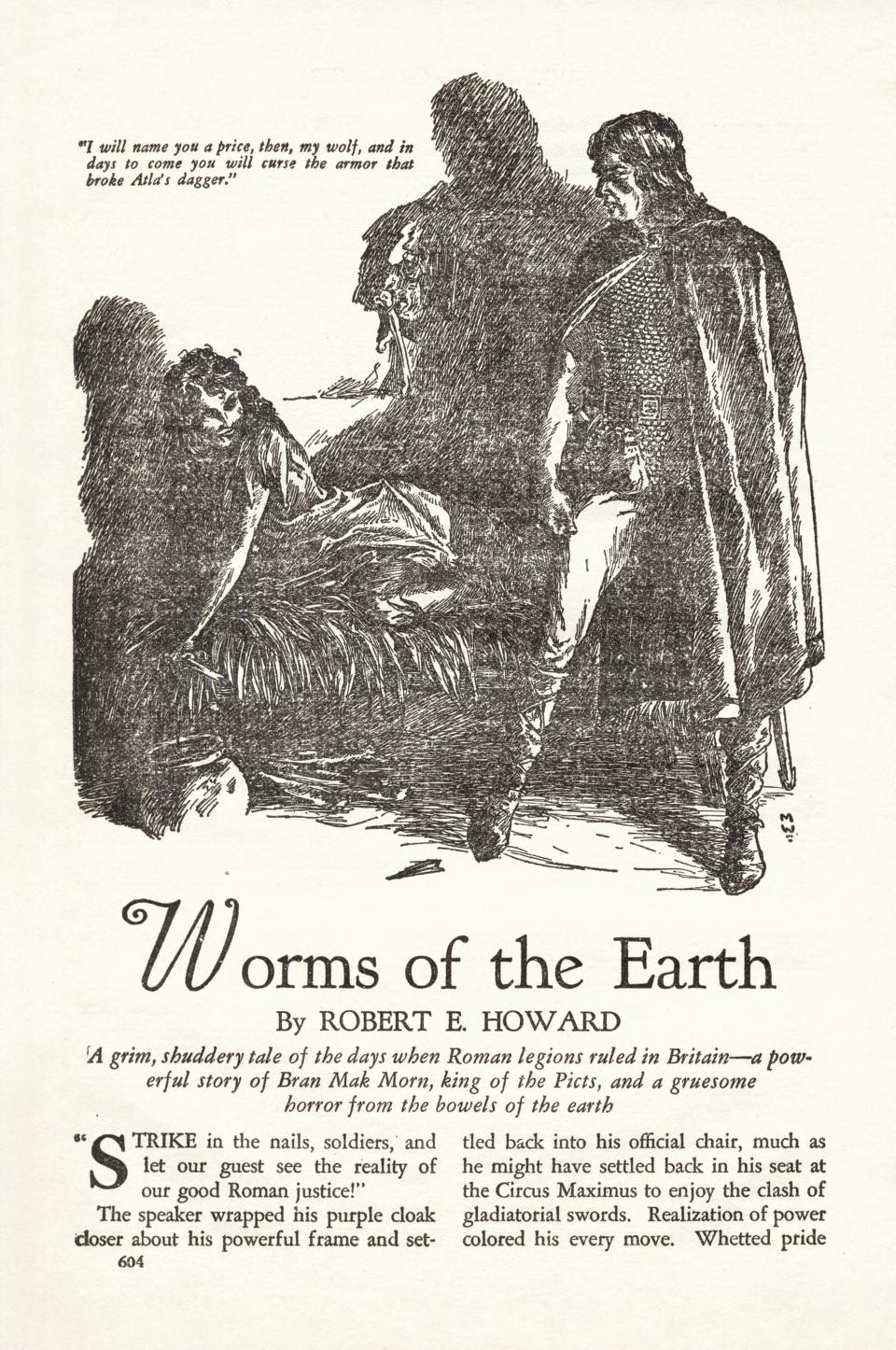 HPL gave REH plenty of encouraging advice in this letter, beginning with his praise for "The Cairn on the Headland", which was published in the January 1933 issue of Strange Tales (of Mystery & Terror). The artist that HPL thought did such a bad job was Amos Sewell. Sadly, as HPL notes at the end of this letter, the magazine went under after publishing only seven issues: the last one being for January of 1933. HPL never appeared in the magazine except as a ghostwriter for someone else.
HPL gave REH plenty of encouraging advice in this letter, beginning with his praise for "The Cairn on the Headland", which was published in the January 1933 issue of Strange Tales (of Mystery & Terror). The artist that HPL thought did such a bad job was Amos Sewell. Sadly, as HPL notes at the end of this letter, the magazine went under after publishing only seven issues: the last one being for January of 1933. HPL never appeared in the magazine except as a ghostwriter for someone else.
HPL also had great praise for "Worms of the Earth", which appeared in the November 1932 issue of Weird Tales. The story features Bran Mak Morn, King of the Picts, along with a number of explicitly Lovecraftian references.
In response to Lovecraft's footnoted question as to why he spelled "Eboracum" as "Ebbracum", Howard replied: "...I must have been unusually careless when I wrote that.... I know I saw it spelled that way, somewhere; it's not likely I would make such a mistake entirely of my own volition, though I do frequently make errors."
We couldn't find any recordings from 1932, but here's "Bonny Eloise" as performed by Mitch Miller's crew in 1958, and a very cleaned-up version of "Deacon Jones" by Louis Jordan and his Tympany Five in 1944. Sadly it does not include the verse about snakes. You can learn a lot more fun information about that song and see some of the other lyrics HERE.
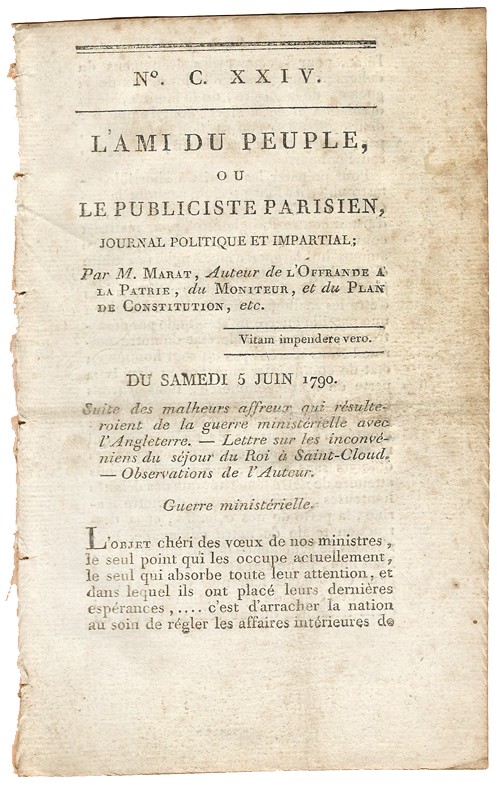 HPL busts out a little French in this letter, including the phrase "amis du peuple". This is very likely a nod to the newspaper of the same title edited and published by French Revolutionary Jean-Paul Marat, a radical advocate of the lower classes who ended up getting assassinated in his bathtub. HPL might or might not have been trying to send Howard a message....
HPL busts out a little French in this letter, including the phrase "amis du peuple". This is very likely a nod to the newspaper of the same title edited and published by French Revolutionary Jean-Paul Marat, a radical advocate of the lower classes who ended up getting assassinated in his bathtub. HPL might or might not have been trying to send Howard a message....
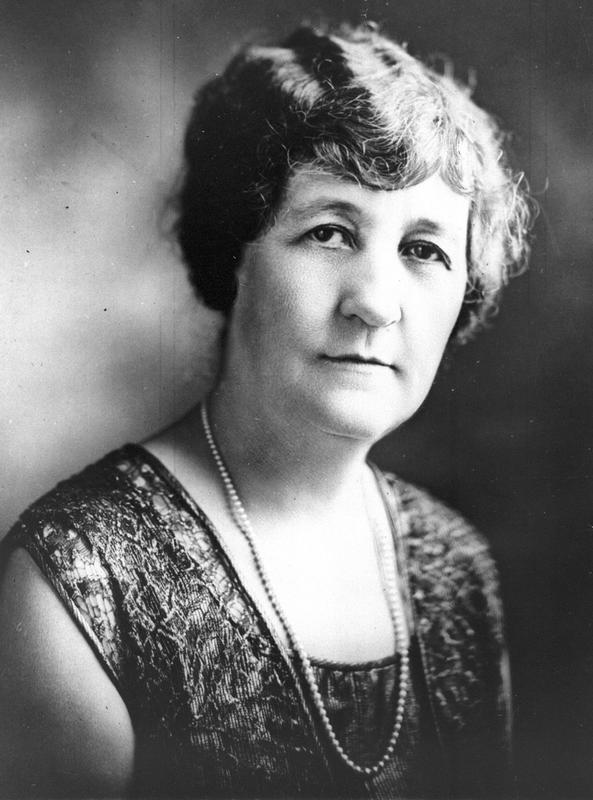 This letter was written during the election for 1932, and halfway through it both Franklin D. Roosevelt and Miriam A. "Ma" Ferguson, both Democrats, were elected. Ma Ferguson was the wife of the former governor of Texas, James E. "Pa" Ferguson, and had already served one term as governor herself from 1925 to 1927. She was widely considered to be nothing more than a puppet of her husband, who had been impeached and forbidden to hold office in Texas himself ever again. As HPL and REH talked about, she did make some changes to the organization of Texas law enforcement during her term, including firing all the Texas Rangers.
This letter was written during the election for 1932, and halfway through it both Franklin D. Roosevelt and Miriam A. "Ma" Ferguson, both Democrats, were elected. Ma Ferguson was the wife of the former governor of Texas, James E. "Pa" Ferguson, and had already served one term as governor herself from 1925 to 1927. She was widely considered to be nothing more than a puppet of her husband, who had been impeached and forbidden to hold office in Texas himself ever again. As HPL and REH talked about, she did make some changes to the organization of Texas law enforcement during her term, including firing all the Texas Rangers.
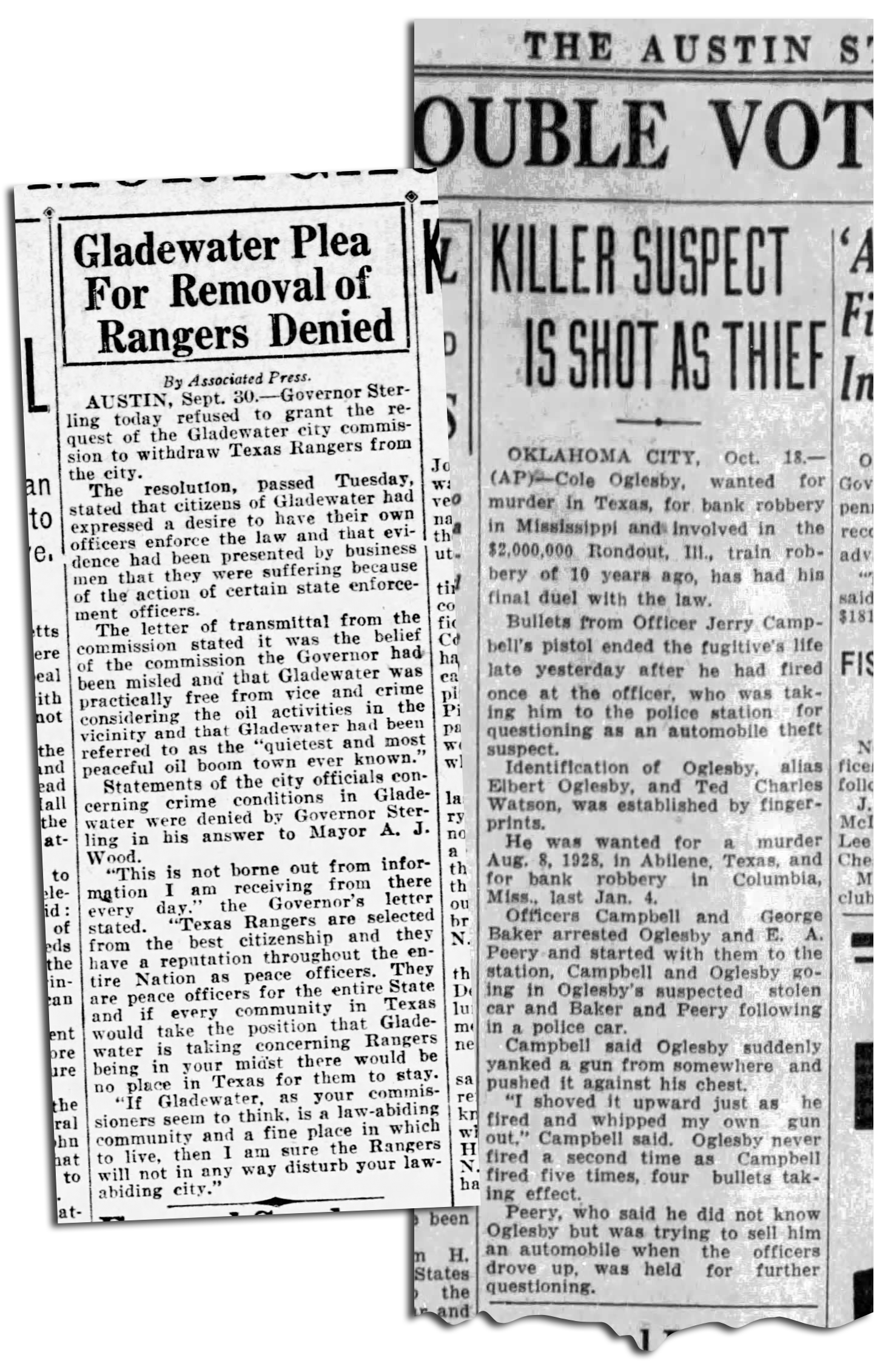 We couldn't find any coverage of the specific Gladewater police outrages that REH mentioned in any Texas newspaper that's available online, but we did find a few related items. At right is a clipping from the Fort Worth Star-Telegram of October 1, 1932, covering an ongoing situation of problems with the Texas Rangers in Gladewater. Also here is an item from the Austin American Statesman from October 18, 1932, about the death of Howard's childhood acquaintance Cole Oglesby.
We couldn't find any coverage of the specific Gladewater police outrages that REH mentioned in any Texas newspaper that's available online, but we did find a few related items. At right is a clipping from the Fort Worth Star-Telegram of October 1, 1932, covering an ongoing situation of problems with the Texas Rangers in Gladewater. Also here is an item from the Austin American Statesman from October 18, 1932, about the death of Howard's childhood acquaintance Cole Oglesby.
The "recently reported" Florida case that HPL mentions was that of Arthur Maillefert, a young New Jersey man who died horrifically at the hands of Florida prison guards. The details were much publicized nationwide in the New York Times and other newspapers.
HPL suggested that if only there were some "clear, factual report" about crime and policing available, maybe things would change. There were such reports, although perhaps not about Texas, including the Illinois Crime Survey of 1929 and the National Commission on Law Observance and Enforcement in 1931 and 1932, headed by former Attorney General George W. Wickersham. Volume 14 of the Wickersham report specifically addressed the problems of police misconduct and impunity, and pointed out that the police officers in many places had no professional training.
Although we couldn't get any actual articles out of the friendly folks at the Gladewater Mirror, the successor publication to the Gladewater Journal mentioned repeatedly in this letter, they were kind enough to send us a PDF about conditions in Gladewater TX and surrounding towns in the 1930s, and it's a pretty astonishing document. You can READ IT HERE.
REH expressed tremendous admiration for John Wesley Hardin, a storied Texas outlaw. This letter also talks a lot about dueling, including the Johnston-Huston duel of 1837. The "Comanche duel" HPL mentions was one in which the combatants have their left hands tied together, and armed with knives in their right hands.
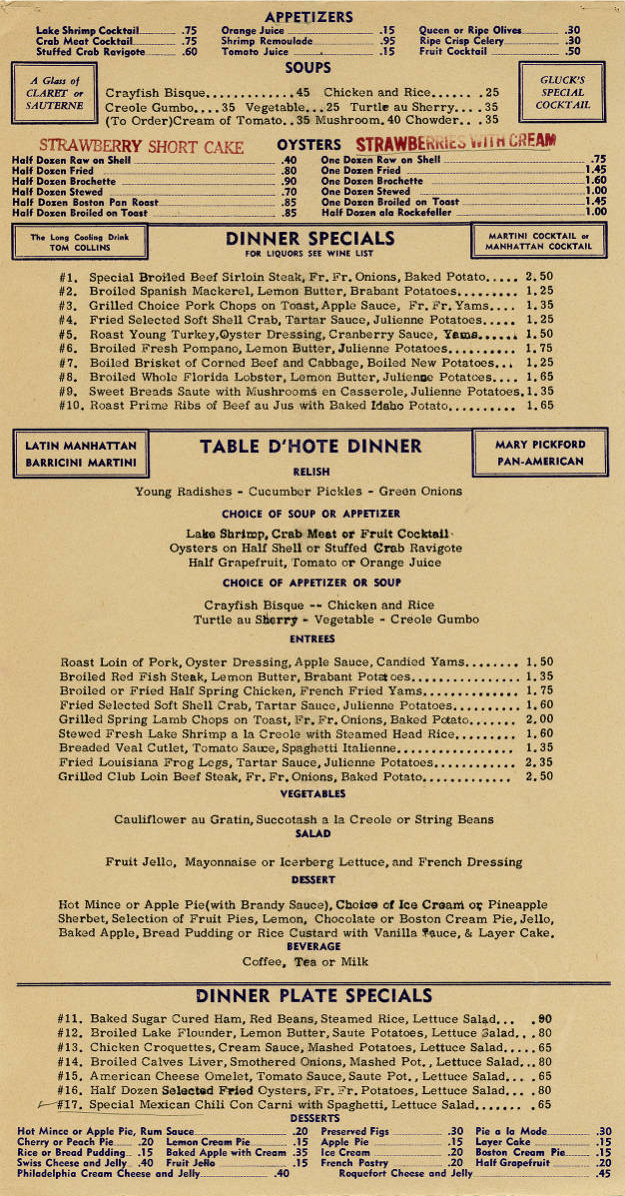
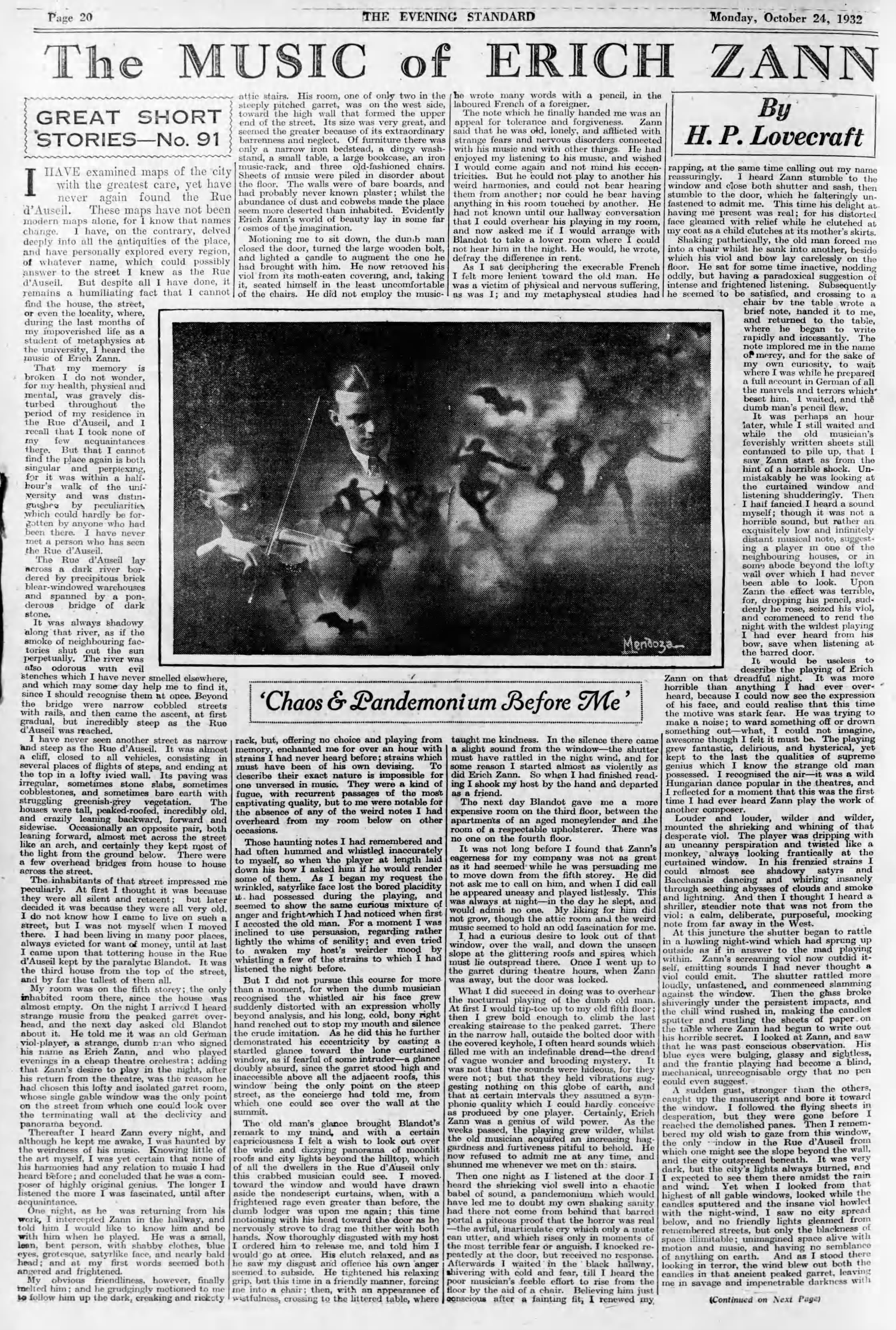 When in New Orleans, HPL ate at Thompson's and Gluck's Restaurants. We couldn't find a menu from the 1930s, but here's one from Gluck's of the 1940s, which is probably very similar except for all the booze. It did feature some of Lovecraft's favorite dishes, including a turkey dinner with cranberry sauce and yams (although they ruined the dressing with oysters), "Special Mexican Chili Con Carni with Spaghetti", and mince pie. You can see more of it, with pictures, HERE.
When in New Orleans, HPL ate at Thompson's and Gluck's Restaurants. We couldn't find a menu from the 1930s, but here's one from Gluck's of the 1940s, which is probably very similar except for all the booze. It did feature some of Lovecraft's favorite dishes, including a turkey dinner with cranberry sauce and yams (although they ruined the dressing with oysters), "Special Mexican Chili Con Carni with Spaghetti", and mince pie. You can see more of it, with pictures, HERE.
Thompson's was what was called a "one-armed lunch room", where customers sat in hard wooden chairs that had one arm as a kind of tiny table, which were designed to encourage people to eat fast and get out. You can learn more about it HERE.
In the first postscript to this letter, HPL mentions that his story "The Music of Erich Zann" had just been purchased by the London Evening Standard, which was presumably a bit of a thrill. It was printed in the paper on October 24, 1932, as shown here!
